- BUCKET LISTS
- TRIP FINDER
- DESTINATIONS
- 48HR GUIDES
- EXPERIENCES

- DESTINATIONS South Carolina 3 Ways to Get Wet and Wild in Myrtle Beach BY REGION South America Central America Caribbean Africa Asia Europe South Pacific Middle East North America Antarctica View All POPULAR Paris Buenos Aires Chile Miami Canada Germany United States Thailand Chicago London New York City Australia
- EXPERIENCES World Wonders 14 Landmarks That Should Be Considered World Wonders BY EXPERIENCE Luxury Travel Couples Retreat Family Vacation Beaches Culinary Travel Cultural Experience Yolo Winter Vacations Mancations Adventures The Great Outdoors Girlfriend Getaways View All POPULAR Cruising Gear / Gadgets Weird & Wacky Scuba Diving Skiing Hiking World Wonders Safari
- TRIP FINDER Peruvian Amazon Cruise BY REGION South America Central America Caribbean Africa Asia Europe South Pacific Middle East North America Antarctica View All POPULAR Colors of Morocco Pure Kenya Costa Rica Adventure Flavors of Colombia Regal London Vibrant India Secluded Zanzibar Gorillas of Rwanda
- Explore Bucket Lists
- View My Bucket Lists
- View Following Bucket Lists
- View Contributing to Lists

Canary Islands — History and Culture

The Canary Islands has a colorful history dating back over 1,000 years. It has experienced prosperity, extreme poverty, piracy, mass emigration, and is now one of Spain’s main tourist destinations. The Canary Islands culture is rich in tradition, gastronomy, and the arts, and while the archipelago obviously has a heavy Spanish influence, the language, cuisine, and music are still rather unique.
The archipelago’s rich history has been recorded since the 1st century, when Roman explorers came across what they believed to be uninhabited islands. Although records were made of the discovery of the ruined buildings, little is known about the inhabitants before this time. As more European explorers detailed the islands, they encountered an indigenous population functioning on a Neolithic level. Collectively, these tribes were referred to as Guanches.
Numerous Arab traders visited the archipelago as time rolled on; however, it wasn’t until the 14th century that Europeans started to settle on the Canary Islands, particularly Lanzarote.
At the turn of the 15th century, the Castilians, under the reign of Henry III, began to colonize the island. From Lanzarote, the forces conquered the islands of El Hierro and Fuerteventura, and soon after the islands were to accept their first European monarch, Jean de Bethencourt. Although Bethencourt ruled on behalf of the Castilian King Henry, he went about extending the Iberian Kingdom’s influence over the remaining islands, much to the displeasure of the natives, who were finally pacified towards the end of the century in 1495, after which the archipelago became part of the Kingdom of Castille.
Over the next century, the Canary Islands prospered as a result of their cultivation of sugar cane and wine, and as a stopover for merchants and emigrants leaving the New World. During this period, some of the islands’ finest architecture, some of which is still seen today, was constructed. However, the wealth of the neighbor-less archipelago began to attract the attention of foreign privateers and pirates, with the most notable attack occurring in 1559, at the hands of the Dutch. The forces pillaged San Sebastian on La Gomera, Gran Canaria’s Maspalomas, and Santa Cruz, but retreated after failing to sack Las Palmas.
The fortunes of the Canaries slowly started to change during the 18th century, when its economy, still dependent on the sugar cane, came under competition from Spain’s new colonies in the Americas. Towards the end of the century, emigration to Spanish America was commonplace among the population, and it’s estimated that more than 50,000 Canarians immigrated to Venezuela alone during the 19th century.
The early 20th century saw the archipelago split due to rivalries between the merchants of Santa Cruz and Las Palmas, leading to the duel capital cities the Canary Islands have today. After the fall of Franco and the establishment of the democratic constitutional monarchy, the Canary Islands was granted an autonomous community of Spain status.
The dialect spoken in the Canary Islands is similar to that heard in the south of Spain, as this was the language spoken by the initial settlers of the islands. However, it is also influenced by Caribbean and South American Spanish, due to the emigration of Canarians to the Americas over the centuries.
The Canarian diet is dominated by the sea and its age-old produce wine. Typical dishes generally include roasted fish, potatoes, and garlic, while chicken and beef stews are also tremendously popular. Specialties include gofio, a sweet corn based flour is added to numerous dishes and used to make the dough-like side dish paella. Many of the local dishes have had a big influence on dinner tables in South America, again, due to the mass emigration.
One particular artist springs to the mind of Spaniards when any discussion of Canarian art takes place - Cesar Manrique. Yet artist may not be the correct term used to describe this demigod of Canarian culture who is known as a sculptor, architect, environmentalist, and urban designer, among other things. He alone saved many areas of the islands from the crass overdevelopment witnessed in other Spanish tourist destinations during the 1970’s and ‘80s, restoring the charming colonial architecture of the cities and towns. His legacy can be seen throughout the archipelago, from the Jameos lava tube to the Jardin de Cactus.
Click here to learn about Weather in the Canary Islands
Canary Islands
- Things To Do
- Attractions
- Food And Restaurants
- Shopping And Leisure
- Transportation
- Travel Tips
- Visas And Vaccinations
- History And Culture
- Festivals And Events
World Wonders
These are the most peaceful countries on the planet, the great outdoors, deserts in bloom: 6 spots for springtime wildflower watching, how to plan a luxury safari to africa, british columbia, yoho national park is the most incredible place you've never heard of.
- Editorial Guidelines
- Submissions
The source for adventure tourism and experiential travel guides.
- Playa de las Americas
- Puerto de la Cruz
- Los Gigantes
- 5 Star Hotels
- 4 Star Hotels
- San Cristóbal de La Laguna
- Santa Cruz de Tenerife
- Teide National Park
- Tenerife Markets
- History of Tenerife
- Tenerife Map
- Weather and Climate
- Weather by Month in Tenerife
- Inter-island Travel
- Tenerife Airport Transfers
- Tenerife Bus Routes and Timetables
- Tenerife Flights
- How to get to your Resort
- Exchanging Currency in Tenerife
- Prices in Tenerife
- Is Tenerife one hour ahead of the UK?

- About Tenerife History, Weather, Climate and Map of Tenerife.
- Attractions
- Cities/Towns
- How to get to your Resort Instructions on how to get to your resort by car, bus, taxi or airport transfer.
- Travel Info
The History of Tenerife

The first credible accounts of the Canary Islands are from Pliny the Elder. The Roman learned of the Islands from the North African Roman proxy-King, Juba II, who claimed to have sent an expedition there in 40bc.
The Guanches
The indigenous people of the Island were known as Guanches and they knew their Island as Achinech, though the name that we use today comes from neighbouring La Palma. The natives of that Island knew Tenerife as Tene-Ife – Tene (White) and Ife (Mountain) referring to the snow capped peak of Mount Teide, clearly visible from La Palma.
The Europeans found the Guanches living in a near-stone age state, living as shepherds and with only the most basic knowledge of cultivation. They, for reasons unknown, had no knowledge of boats and because of this, there was no contact between the Islands. The conquerors described the natives as being Tall, Muscular and with many “blondes amongst their number”. The latter provoking much speculation over their origin, although it is now widely accepted that the Guanches were descendants of Berbers from North Africa.
European Conquest
Although the European Conquest of the Canary Islands began in 1402, Tenerife’s natives offered stiffer resistance than some of their cousins elsewhere in the archipelago. In 1491, Alonso Fernández de Lugo was commissioned by the Spanish Crown to conquer the two remaining islands not yet under Spanish control (La Palma and Tenerife). He took neighbouring La Palma first and in May 1494 landed near present Santa Cruz where he erected a wooden cross and set up base. His initial force of over 1000 men included a considerable number of Gran Canaria natives that had been converted to Christianity. Missionaries had been in contact with several of the tribes on the Island for some time and de Lugo was able to negotiate treaties with several of the Menceys (tribal chiefs). However, the Mencey of Tauro, Bencomo, refused to submit to the foreign invaders and formed an alliance with the Menceys of Tacoronte, Tegueste, Daute and Leod.
On the 31st of May 1494, as the Spanish force pressed towards the North-West of the Island, they were ambushed at the Barranco de Acentejo. The invaders were attacked from the slopes above while their retreat was blocked by 3000 of Bencomo’s men. The Spanish suffered heavy losses, with some 4 out of 5 of the initial force killed in that Battle. De Lugo himself was injured and barely escaped Tenerife with his life. A town, La Matanza (The Slaughter) marks the site of the battle and a mural of a Guanche that commemorates the event can be seen from the road.
After selling his properties to fund a new campaign, de Lugo returned to Tenerife in 1495 and rebuilt his fortress in Santa Cruz. This time the Spanish arrived with 1000 veterans of the Granada Campaign as well as a Cavalry force. The first major victory came in November 1495, when the Guanches were defeated (and Bencomo killed) at the Battle of La Laguna. The superior military technology and Cavalry overwhelming the primitive Guanches over open ground. On December 25th 1495, the decisive battle took place not far from the site of the Spaniards humiliating defeat of the previous year. The Guanches, weakened by their earlier defeat and because of an epidemic (probably brought by the invaders), were, this time, defeated. Another town marks the site of this battle – La Victoria de Acentejo. Bentor, by now the Mencey of Taoro following his father’s death, is said to have committed suicide upon learning of the defeat.
Although recent studies suggest that two-thirds of Canarians carry some Guanche genes, the Guanches as a distinct people disappeared in the years after the conquest. They either converted to Christianity and were assimilated into the Coloniser’s way of life, were sold into slavery or were killed. Little is known of their language or culture, although many places still bear their original Gaunche names and in recent years there has been a revival in the use of Guanche first names.
Colonisation and Plantations
After the conquest the land was divided up and settlers from across Western Europe began to arrive. Sugar became the Island’s first major export, with much of Tenerife’s native forest cleared for sugar cane plantations. Later fortified wine took over as the main export – the Canary Sack from Shakespeare’s Merry Wives of Windsor, when sugar prices were undercut by cheaper Latin American producers.
Banana Production
Although Bananas have been grown in Tenerife since shortly after the conquest, it was towards the end of the 19th century that Bananas became the Island’s principal Cash Crop.
Atlantic Stopover
The Canary Islands are located at a strategically important position for sailing across the Atlantic due to the steady North-easterly trade winds. While Columbus stopped in neighbouring La Gomera on his way discovering the New World in 1492, Magellan chose Tenerife as his stopover in 1519 on his voyage to circumnavigate the globe. This strategic location has, however, also attracted some less welcome visitors; In Apil 1657, the English Admiral, Robert Blake, attacked and destroyed a Spanish Treasure fleet at Santa Cruz. Later, Nelson lost his arm when hit by grapeshot during an unsuccessful assault on Santa Cruz in July 1797.
Rivalry with Las Palmas
Santa Cruz became the first Capital of the Canary Islands when the Archipelago was made a province of Spain in 1821. This displeased the residents of Las Palmas, who eventually persuaded Madrid that the province should be divided in two in 1927 – Tenerife, El Hierro, La Gomera and La Palma to be administered as the province of Santa Cruz de Tenerife and Gran Canaria, Lanzarote and Fuerteventura under Las Palmas de Gran Canaria.
Tourism began on the Island as long ago as the late 19th Century when well-healed Northern Europeans (many of whom were British) began to visit the fine hotels of Puerto de la Cruz. The arid south was largely ignored until the 1960s and the advent of the affordable package Sun Holiday.
Franco The Republican Government, fearing General Franco’s involvement in a possible coup, sent the young Generalissimo to the Canary Islands in February 1936. In June of that year, he met with his co-conspirators in the La Esperanza forest in Tenerife to discuss the feared military coup. On July 18th, Franco flew from Tenerife to Spanish Morocco to take command of the Spanish Legion. Thus began the Spanish Civil War.
Due to the boom and bust cycles of the cash crops and the Canary Island’s geographical susceptibility to external shocks (World Wars etc.), emigration from the Islands has been considerable since the early 18th Century. Because of historical ties, Venezuela and Cuba have been the traditional destinations. During the 1950s, it is estimated that 16,000 people left the Canary Islands clandestinely by boat attempting to reach Venezuela and that as many as a third of these perished en route.
Canary Nationalism
Franco’s oppressive regime opposed any ideas of autonomy for Spain’s diverse regions, something that may have had the unintended effect of actually stoking such ideas. The now defunct MPAIAC (Movimiento por la Autodeterminación e Independencia del Archipiélago Canario) was a separatist movement founded by Antonio Cubillo in 1964 and was responsible for several terrorist bombings, one of which contributed to the events that led to the Tenerife Airport Disaster. Following a bomb threat in Las Palmas, two 747s were diverted to the small Los Rodeos Airport (Tenerife North). 583 people were killed when the two planes collided. The MPAIAC was disbanded in 1982 following the granting of regional autonomy to the Canary Islands in August 1982. Nowadays, separatist ideas have some limited support, with political party, Coalicion Canario, becoming slightly more vocal about the issue of late.
Leave a Reply Cancel reply
Your email address will not be published. Required fields are marked *
Canary Islands

- 2.1 Demographics
- 2.2 History
- 2.3 Climate
- 3.1 By plane
- 3.2 By boat
- 4.1 By public transport
- 4.2 By rental car
- 4.3 By taxi
- 4.4 By boat
- 4.5 By plane
- 5 See and do
- 9.1 Pickpocketing
- 9.2 Natural hazards
The Canary Islands (Spanish: Islas Canarias ) are an Atlantic territory of Spain off the coast of Morocco and Western Sahara .

The Canary archipelago consists of 8 inhabited islands, and a few smaller uninhabited ones.
- 28.268611 -16.605556 1 Tenerife – The largest and most populous island with an area of 2,034 km² and also the most popular tourist destination of the archipelago, with about 6 million tourists per year. It has many museums and monuments that serve as portrayals of its rich history, but suffers under low cost mass tourism from the European mainland . Its oldest mountain ranges are young compared to its neighbouring islands, and volcanic activity did not begin to occur here until 8-12 million years ago, while other islands had it well over 20 million years ago. The highest mountain of Spain and 3rd largest volcano in the world (3,715 m), El Teide , dominates the landscape of the island. Santa Cruz de Tenerife is home to the Canary Island Parliament, while San Cristóbal de La Laguna is home to the oldest university on the Canary Islands. The main resorts are Puerto de la Cruz and Playa de las Américas .
- 28.4 -14 2 Fuerteventura – Second largest island, with an area of 1,660 km², but compared to Tenerife relatively thinly populated with only 117,000 (2019) inhabitants. There are fewer attractions, but in turn the island has not yet fallen prey to mass tourism. Its capital, Puerto del Rosario , is fairly laid back and has a few architectural gems to offer. Fuerteventura is a paradise for windsurfing and the only Canary Island with natural golden sandy beaches rather than naturally black volcanic sand. The main resorts of Fuerteventura are Corralejo, Caleta de Fuste and Morro Jable.
- 27.958611 -15.5925 3 Gran Canaria – The third largest island and second most popular (after Tenerife ) receiving over 4 million tourists every year–green and steep in the north, dry and flat in the south. It has the highest population density of the Canary Islands, with 540 inhabitants per km², and with tourists added to that number it gets a bit crowded at times. The main resorts on the Island are Las Palmas, Maspalomas, Puerto Rico and Playa del Ingles. Its capital city Las Palmas de Gran Canaria has the shared title of capital of the Canaries.
- 29.035 -13.635 4 Lanzarote – About half the size of Gran Canaria , but low lying and arid, with a spectacular volcanic landscape in the west of the island preserved as Timanfaya National Park . The greatest recorded eruptions occurred between 1730–1736. The capital is Arrecife and has its own airport, and draws most of the 2.9 million tourists visiting Lanzarote annually. There is a bustling nightlife in four main resorts—Arrecife, Costa Teguise, Puerto del Carmen and Playa Blanca.
- 29.231389 -13.501944 5 La Graciosa – The smallest inhabited island of the Canaries, being only 29 km² in size and having a population of approx. 735 (2018). Its capital is Caleta de Sebo, and it's a few kilometres to the north of Lanzarote .
- 28.666667 -17.866667 6 La Palma – The population is about 83,000 (2019), of which about half live in the capital, Santa Cruz de la Palma and in Los Llanos de Aridane . La Palma's geographic layout is a result of the volcanic formation of the island. The southern part of La Palma is dominated by the Cumbre Vieja, a volcanic ridge formed by numerous volcanic cones built of lava and scoria. The Cumbre Vieja is active but mostly dormant, with the last eruption occurring in 2021.
- 28.115 -17.225 7 La Gomera – The Magic Isle, with San Sebastián as capital, is a paradise for hikers. It is shaped like an orange that has been cut in half and split into segments. The terrain is rough, which has left deep ravines or barrancos between them. These barrancos, in turn, are covered by the laurisilva (laurel rain forest). The local wine has a distinct taste, and is often accompanied with a tapa (snack) of local cheese, roasted pork or goat meat. Other cultural dishes include almogrote , a cheese spread, and a syrup extracted from palm trees called miel de palma . The local people have a unique way of communicating across deep ravines by using a whistled speech called Silbo Gomero. This whistled language is indigenous to the island, and its existence has been documented since Roman times.
- 27.75 -18 8 El Hierro – "The edge of the world". It is also known as the Meridian Island, and Valverde is its capital.
All islands use the same time zone: Western European Time ( WET ). This means the time is the same as Portugal and United Kingdom .
Pico del Teide (on Tenerife) at 3,715 metres above sea level is the highest point in both the Canary Islands and Spanish territory.
Demographics
The islands have a population of 2.2 million (2019). Since the Canary Islands are a major European tourist destination, all the major islands have well-developed communication systems, airports, and ports.
Ethnically the population is mostly a mix of Spanish, European (German and British), South American, especially Cuban and Venezuelan as well as Northern and Sub-Sahara African. There are also historical minorities such as Indians, Koreans and lately Russians.
Each island speaks with a slightly different accent and there is a strong rivalry between the main islands of Tenerife and Gran Canaria. Most of the accents in the Canary Islands are closer to Latin American Spanish than to Castilian Spanish spoken in continental Spain.
The Canary Islands are very modern, very European, and extremely liberal.
Ancient legend claims the Canary Islands are the ‘lost islands’ of Atlantis. They have also been referred to as the lands without sorrow, holding on to the edge of the world. The first settlers were known as Guanches, thought to have arrived in the 10th century BC. The main economic system was built around agriculture and animal farming. During the 14th century, the islands were continuously invaded by different European countries. Sugar cane became the dominant crop, and since the early 20th century, bananas have been widely farmed.
During the Age of Sail, the islands were an important waypoint on the Cape Route .
In contrast to Spanish North Africa and other Spanish overseas territories, the Canary Islands have been an integrated part of Spain for centuries.
Often referred to as the islands of eternal spring , the Canary Islands are known for their mild climate. On average, they feature mild winters, although there is a lot of wind virtually every day, which makes temperatures feel cooler. Summers are dry and temperatures are generally comfortable but can feel chilly with the wind. The average temperature is 13°C in January and 19°C in July. Sunshine is somewhat abundant in summer and relatively scarce in winter.
Just like mainland Spain , the Canary Islands are part of the European Union and the Schengen area . Arrivals from other Schengen territories usually don't need to clear immigration.
There are regular flights from mainland Spain and elsewhere in Europe to the larger islands of Gran Canaria ( LPA IATA ), La Palma ( SPC IATA ), Fuerteventura ( FUE IATA ), Lanzarote ( ACE IATA ), and Tenerife which has two airports: the north ( TFN IATA ) near Santa Cruz and the south ( TFS IATA ) near Golf del Sur.
El Hierro and Gomera are reached by inter-island flights. La Graciosa has no airport.

The Spanish company Naviera Armas has weekly connections between Huelva and Cadiz in Spain and Arrecife (Lanzarote), Las Palmas (Gran Canaria) and Tenerife . Fred Olsen also has weekly connections from Huelva to Tenerife and Gran Canaria . A detailed map of these three routes can be found on Ferrygogo .
Cruise ships will often plan a stop at the Canary Islands when crossing the Atlantic Ocean or navigating along the eastern coast of Africa . Longer cruises around the Western Mediterranean will also often include a stop at the Canaries, and a few operators like Marella will even offer Canaries-only trips.
Travel between the islands is overly expensive for tourists, and it is generally not worth it since most islands have enough to offer to keep you busy. Transport for locals is subsidised, but the normal price for tourists is widely overdrawn compared to the rest of Europe for such services. Ferry and plane monopolies play into the situation.
By public transport
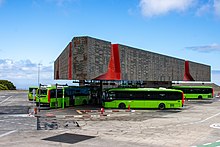
Public transport is available on most islands, varying widely in price and efficiency though—see the specific islands for more information. Do not expect bus drivers to know more than a couple of sentences in English or German, though they will try to be helpful.
By rental car
Renting a car is often the best option for discovering the remote and wildness regions— Tenerife might be an exception with its very efficient bus system. There are several well-established local rental companies that are well worth considering, already starting at €100/week or less, especially in off-season starting from April. On smaller islands like La Palma, the variety of companies is reduced though.
Local rental companies (always compare!):
- AutoReisen – Cheap, reliable and no deposit—from €9/day. Not very well known nor listed on the common price comparison websites. Pickup and drop-off is only possible at airports and on the same island. You must be at least 23 years old, and the rental price can only be paid by a credit or debit card in the driver's name. Ask around and you will see that people are very happy with them.
- PlusCar Rent a Car – Conditions are similar to AutoReisen—sometimes cheaper, sometimes more expensive. Likewise no deposit.
- CICAR a.k.a. Cabrera Medina – Reliable and well-known. A bit more expensive than AutoReisen and PlusCar, but with a wider range of models and a much denser network of rental branches all across the islands. No deposit for the car (but for the fuel).
- PaylessCar – Affordable and good.
- TopCar – From €12/day, but many people complain about consecutively being charged for fuel or cleaning. Deposit: €500.
- CarzRent (Tenerife only) – Always open, large deposits and avarage prices.
International rental companies:
- Goldcar, Dollar, Interrent – Not worth the stress—they are well known for ripping off their customers. If you still decide to use them, make sure you understand their terms & conditions, since there may be hidden fees or other tricks.
- Avis, Europcar, Thrifty, Hertz, Enterprice – Probably not worth the extra money, unless you have a membership thing or get a good discount.
The rental conditions of the local companies typically include unlimited mileage, a free second driver and free booster seats for your kids. As a general rule, the driver must be at least 21 years old. Fuel is not included, so make sure to fuel up before returning your vehicle to avoid additional costs.
As roads can often be narrow and unpaved, there is a real risk of damaging cars by ricocheting stones and pebbles. That's why most of the local companies include full insurance by default. When your rental car is fully insured, returning the vehicle is as simple as dropping off the key. Otherwise, inspect your rental car carefully before signing the contract, and consider adding insurance to the contract conditions for a surcharge.

Choose a car that is just large enough to fit all passengers and luggage, but try to keep it as small as possible. A small car is much easier to find a parking spot for in the historic centres of towns and cities, and passing another vehicle coming from the opposite direction becomes less of an adventure on narrow mountain roads. If you intend to do a lot of hiking, some extra ground clearance can occasionally come in handy, as paved parking lots can be a rare good in the mountains. Something like a Jeep Wrangler would be overkill for this, but if you've got money to burn, some of the local rental companies offer those too.
Taxis can be expensive, and inside a city they are not worth the money unless you are in a real hurry or cannot balance yourself after a shopping day.

If you want to travel between the islands, a good option might be to take a ferry . Most ferries are modern, but they are pricey unless you have a residency status. Ferrygogo has a good overview of the different routes that are served by the two main companies:
- Naviera Armas / Transmediterránea – Has many connections all across the region with a large mixed fleet of regular and high-speed ferries.
- Fred Olsen – Focuses on high speed connections.
There are also a couple of scheduled water bus and on-demand water taxi connections available for shorter trips:
- Lineas Romero – Short distance passenger ferries connecting Lanzarote with Fuerteventura, and La Graciosa with Lanzarote.
- Fuertecharter – Offers daily trips from Fuerteventura to Isla de Lobos and Lanzarote.
Check their website for the best prices. There is of course also a number of companies offering whale watching tours and the like.
Renting a yacht (or bringing your own) is also a great way to get around if you know what you're doing. The islands offer numerous harbors and more than 30 marinas to moor in. Sailing the waters can be challenging, though, so plan your trip carefully. Some nautical information and useful links are available at the official website .
If you are afraid of the sea, or get sick just by staring at a ferry, then a plane is what you need to travel between the islands. With the exception of Graciosa (which only has a helipad for medical emergencies) all of the larger islands are served by regional airlines:
That usually means a turboprop ATR-72 or ATR-42, especially when going to the regional airport of La Gomera or El Hierro that are too small for regular airliners to land on. They are perfectly safe and adequately fast, as you are likely to spend more time at the airport than in the plane. Especially between Tenerife and Gran Canaria there are also sometimes airlines that fly from further afield and stop in both islands—whether they sell tickets for that last leg alone is rather hit and miss, however.
- Teide National Park on Tenerife , with at its centre Mount Teide, the tallest mountain of Spain and one of the world's tallest volcanoes.
- The historic centre of San Cristóbal de La Laguna on Tenerife , dotted with colonial architectural gems.
- The subtropical rainforest of La Garajonay National Park on La Gomera .
- The archaeological site of Risco Caído on Gran Canaria .
- Isla de El Hierro
- Gran Canaria
- Fuerteventura
- Macizo de Anaga
Otherwise the islands impress with:
- Numerous beaches
- Volcanoes and volcanic landscapes great for hiking
- Historical architecture in the old town of Las Palmas
The euro (€) is the currency of the Canaries. The islands are outside the EU VAT area and have a separate sales tax from the VAT levied in mainland Spain.
Withdrawing money from Spanish ATM s will often result in an extra charge by the machine of €1–8. Cash can therefore be an alternative, but bears certain risks. However, since COVID credit cards are widely accepted as payment option, even for the tiniest amounts—cash-only is likely a source of tax evasion concerns. So, you are probably best off bringing a few €50–100 in cash and paying the rest with credit card, in case you want to avoid ATM fees.
Bizum is very popular with locals, and even some bars and restaurants—as an alternative to PayPal or Venmo. However, you need a Spanish bank account to use it.

- Goat – If any kind of meat is popular in the Canary Islands, it's goat. Locals and tourists equally will rave about good places they had goat in. If meat is your thing, you should definitely find such a place.
- Fish – You will find a wide variety of fish and seafood with restaurants that allow you to choose a fish from their selection (often hand caught), which they will cook for you. Two popular fish dishes from Tenerife are Caldereta, a meal with tomatoes, goat meat and potatoes and the Sancocho Canario, a salted fish, usually white, in a “mojo” sauce.
- Morcilla Dulce Canaria – A sweet blood sausage, almost a cake or a pudding, very popular on the islands. The taste feels delicious and disgusting at the same time.
- Plantain bananas – The Canary Islands are Europe's only exporter of these famously delicious, and usually fried bananas.
- Mousse de gofio or gofío amasado – A dessert made from gofio , miel de palma , and plantains.
- Barraquito – Also called barraco, is a coffee speciality from the Canary Islands and particularly popular on Tenerife but also on La Palma.
- Beer – There are three local breweries (Dorada, Tropical and Reina).
- Coffee – Cafe solo (espresso) and Cortado (espresso with milk) are the most ordered coffee variations on the islands.
- Rum – There are also well known rum distilleries, especially in Gran Canaria (Artemi and Arehucas). The ron miel is a sweet liquor made from rum and honey.
- Wines – There are several brands of wines in the islands. North of Tenerife, La Geria in Lanzarote or La Palma have excellent vineyards.
112 is the common emergency number.
Pickpocketing
While being a safe place, beware of pickpockets in major tourist and resort areas. Do not take electrical devices, credit cards or large amounts of cash to the beach, if you plan to leave your goods unattended while swimming, or when going out for clubbing. Already many mobile phones have been snatched around the islands from drunken lads, especially at night.
Natural hazards
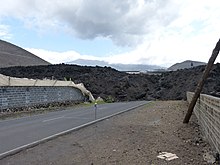
The islands are of volcanic origin, and the latest outbreak on La Palma in 2021 is proof that they are indeed still active. Outbreaks are rare, though, and any seismic activities are closely monitored to provide early warnings to the population. Moderate earthquakes can occur, but they typically do not exceed magnitudes of 5.5. Tropical storms sometimes reach the archipelago and can cause flooding and destruction in the coastal areas. All of the above mean that the terrain can be steep and unstable, making falling rocks and landslides a very real danger. If a mountain road or hiking trail is closed, that is usually because of this.
Episodes of heavy Calima (see Climate ) may lead to respiratory problems, coughing, nasal obstruction and itchy eyes. Consider wearing a N95 type respirator outside, hydrate enough, and stay indoors if it gets too dusty.
Heat strokes and sunburn are an underestimated risk, as solar radiation so close to the equator is much stronger than many European tourists expect. The latter is maybe even more of a concern in the high mountains, where the air is thinner and feels more breezy.
There are no poisonous or otherwise dangerous wild animals around, and while mosquitoes may bite you on occasion, they do not carry infectious diseases .
- Spain – Regular ferry connections exist between the Canary Islands and mainland Spain.
- Morocco – There used to exist a ferry connection, but nowadays using the plane is the only option.
- Madeira and Azores – Regular flights are available.
- Has custom banner
- Has mapframe
- Maps with non-default size
- Has map markers
- Eat listing with no coordinates
- Outline regions
- Outline articles
- Region articles
- Has Geo parameter
- All destination articles
- Pages with maps
Navigation menu

About Tenerife
- Introduction to Tenerife
- Why Travel to Tenerife?
- Food & Drink
- Photo Gallery
Planning Your Trip
- Travel & Transportation
- Flights to Tenerife
- Property and Real Estate
- Vehicle Rental
- Study Spanish
- Summer Language Camps
- Visas & Embassies
- Safety & Emergencies
Island Guide
- Puerto de la Cruz
Culture & the Arts
- Architecture
- Movie Theaters
Out & About
- Parks & Gardens
- Water Sports
- Mountain Activities
- Paragliding & Skydiving
- Horseback Riding
- Places to Visit
Trips from Tenerife
- Gran Canaria
- Fuerteventura
- San Juan de la Rambla Trip
- Anaga Mountains Trip
- Afur Valley Trip
Spain Travel Guides
- Alicante Guide
- Cadiz Guide
- Cordoba Guide
- Granada Guide
- Ibiza Guide
- Madrid Guide
- Malaga Guide
- Marbella Guide
- Pamplona Guide
- Salamanca Guide
- San Sebastian Guide
- Sevilla Guide
- Tenerife Guide
- Valencia Guide
- Zaragoza Guide
Canary Island History: Legend & Early History
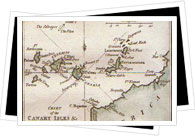
Music , stories, traditions, superstitions... the imagination has always been a major facet of the unique Canarian culture. In fact, long before the Guanche , Spanish Conquest and post-Conquest history of Tenerife , a combination of seamlessly interwoven legends and facts compose the earliest chunk of this Atlantic tropical paradise.
Long before the revolutionary discovery that the world was not, in fact, a flat table that would send sailors plunging into a black abyss should they sail too far, very few ventured far into the mysterious Atlantic Ocean. There is, however, evidence that the Canary Islands were known to Phoenicians, Greeks and Romans; yet very few people who reached the sunny isles returned to tell about it. The only possible explanation was naturally that the Atlantic Ocean was inhabited by vicious ship-destroying, crew-devouring monsters and angry gods who created violent storms and massive whirlpools on a whim. The Atlantic Ocean became the subject of epic legends, widely believed myths and great literary works.
In classical literature, the Canary Islands are often thought to be Paradise, the so-called Fortunate Isles, or the Elysian fields at the end of the world described in Homer's Odyssey and Virgil's Aeneid . Others believed it to be the visible part of the lost continent of Atlantis. When Zeus punished the Atlantes with debilitating volcano eruptions and tidal waves, all but the continent's tips - now the Azores, Madeira, Cape Verde and Canary Islands - sank far below the ocean's surface.
The author Pliny the Elder (1st century, A.D.) tells of a Carthaginian expedition to the Canary Islands sent by King Juba. They returned with giant dogs, from which the the archipelago derives its name; "can" or "canes" means "dog" in latin, and when the Carthaginians put a name to the islands, they called them the "Insularia Canaria" (Islands of the Dogs). Backing up the story, the islands still have native dogs today that are thought to be the very dogs to which Pliny referred centuries and centuries ago.
Legend has it that the Tenerife could even the lush Garden of Hesperydes, where the Greek god Atlas' three daughters (the Hesperydes) lived and cultivated gardens and apple orchards. One of Greek superstar Hercules' 12 legendary tasks was to kill the fierce dragon - who, by the way, had 100 flaming heads working to his advantage - that patrolled the surrounding seas and to then steal the Hesperydes' apples.
Since the dragon knew and trusted Atlas, Hercules made a deal: he would hold up the sky for Atlas while Atlas killed the dragon and collected the apples. The story goes that in every place that a drop of the dragon's blood fell a tree grew. Known known fittingly in the Canary Islands as their characteristic dragon tree, the tree has a massive trunk with bunches of twisting branches resembling the dragon and its many heads.
Learn more about later chapters of Canary Island history below! - The Guanches - Spanish Conquest - Post-Spanish Conquest
What Tenerife
What Tenerife is part of our collection of our "What" travel guides to countries and / or cities of Spain and Latin America. We provide practical, tourist and cultural information, which allows you to organize your trip. Enjoy and come back up with lots of beautiful memories for life!
© 2011 whattenerife.com All rights reserved
Tenerife City Guide | Contact us | Site Map
Our What travel guide collection
- Latin America Guide
- Argentina Guide
- Costa Rica Guide
- Mexico Guide
- Chile Guide
- Spain Guide
- Paris Guide
- New York Guide
- Travel, Tourism & Hospitality ›
- Leisure Travel
Travel and tourism in the Canary Islands - statistics & facts
Tourism in the canaries amid covid-19, what is the main destination in the archipelago, the importance of the hotel industry, key insights.
Detailed statistics
Visitors to the Canary Islands 2010-2022
Tourism GDP in the Canary Islands 2015-2021
Tourism employment in the Canary Islands 2010-2021
Editor’s Picks Current statistics on this topic
Destinations.
Visitors to the Canary Islands 2022, by island of destination
Hotel room occupancy in the Canary Islands 2010-2021
Further recommended statistics
- Premium Statistic Inbound tourism volume in Spain 2023, by region of destination
- Premium Statistic Tourism GDP in the Canary Islands 2015-2021
- Premium Statistic Tourism share of GDP in the Canary Islands 2010-2021
- Premium Statistic Hospitality business in the Canary Islands 2010-2022, by main activity
- Premium Statistic Tourism employment in the Canary Islands 2010-2021
Inbound tourism volume in Spain 2023, by region of destination
Number of international tourists in Spain in 2023, by autonomous community (in 1,000s)
Contribution of travel and tourism to the gross domestic product in the Canary Islands, Spain from 2015 to 2021 (in billion euros)
Tourism share of GDP in the Canary Islands 2010-2021
Travel and tourism as share of gross domestic product in the Canary Islands, Spain from 2010 to 2021
Hospitality business in the Canary Islands 2010-2022, by main activity
Number of companies in the accommodation and food service industries in the Canary Islands, Spain from 2010 to 2022
Number of employees in the tourism sector in the Canary Islands, Spain from 2010 to 2021 (in 1,000s)
Tourism volume and expenditures
- Premium Statistic Visitors to the Canary Islands 2010-2022
- Premium Statistic Monthly international tourism volume in the Canary Islands 2019-2023
- Premium Statistic Quarterly tourism spending in the Canary Islands 2019-2022
- Premium Statistic International tourism receipts in the Canary Islands 2016-2022
- Premium Statistic Per capita spending of tourists in the Canary islands 2022, by type of expense
Number of inbound tourists in the Canary Islands, Spain from 2010 to 2022 (in millions)
Monthly international tourism volume in the Canary Islands 2019-2023
Number of international tourists in the Canary Islands, Spain from January 2019 to December 2023 (in 1,000s)
Quarterly tourism spending in the Canary Islands 2019-2022
Expenditure of tourists in the Canary Islands, Spain from 1st quarter 2019 to 4th quarter 2022 (in million euros)
International tourism receipts in the Canary Islands 2016-2022
Expenditure of international tourists in the Canary Islands, Spain from 2016 to 2022 (in million euros)
Per capita spending of tourists in the Canary islands 2022, by type of expense
Average expenditure of visitors in the Canary Islands, Spain in 2022, by expense category (in euros per person)
Visitor profile
- Premium Statistic Main countries of residence among visitors in the Canary Islands 2022
- Premium Statistic Share of inbound tourists in the Canary Islands 2022, by family income
- Premium Statistic Share of inbound tourists in the Canary Islands 2020-2021, by age
- Premium Statistic Share of inbound tourists in the Canary Islands 2021, by companionship
- Premium Statistic Most influential aspects to travel for leisure to the Canary Islands 2021
Main countries of residence among visitors in the Canary Islands 2022
Leading countries of origin among tourists in the Canary Islands, Spain in 2022 (in 1,000s)
Share of inbound tourists in the Canary Islands 2022, by family income
Distribution of tourists in the Canary Islands, Spain in 2022, by household income (in euros)
Share of inbound tourists in the Canary Islands 2020-2021, by age
Distribution of visitors the Canary Islands, Spain in 2020 and 2021, by age group
Share of inbound tourists in the Canary Islands 2021, by companionship
Distribution of visitors in the Canary Islands, Spain in 2021, by travel companion
Most influential aspects to travel for leisure to the Canary Islands 2021
Main factors considered when choosing the Canary Islands, Spain as a holiday destination in 2021
- Premium Statistic Visitors to the Canary Islands 2022, by island of destination
- Premium Statistic Local tourism volume in the Canary Islands 2022, by island of destination
- Premium Statistic Main overnight destinations in the Canary Islands 2022
- Basic Statistic Most popular recreational parks in the Canary Islands 2023
- Premium Statistic Spanish national parks 2021, by total area
Number of inbound tourists in the Canary Islands, Spain in 2022, by main destination (in 1,000s)
Local tourism volume in the Canary Islands 2022, by island of destination
Number of local tourists in the Canary Islands, Spain in 2022, by destination
Main overnight destinations in the Canary Islands 2022
Number of overnight stays in leading tourist destinations in the Canary Islands, Spain in 2022 (in 1,000s)
Most popular recreational parks in the Canary Islands 2023
Leading theme and water parks in the Canary Islands, Spain as of July 2023, based on number of TripAdvisor reviews (in 1,000s)
Spanish national parks 2021, by total area
Surface area of national parks in Spain as of 2021 (in hectares)
Hotel industry
- Premium Statistic Hotel industry revenue in the Canary Islands 2010-2021
- Premium Statistic Hotels in the Canary Islands 2021, by star rating
- Premium Statistic Hotel room occupancy in the Canary Islands 2010-2021
- Premium Statistic Largest hotel chains in the Canary Islands 2021
Hotel industry revenue in the Canary Islands 2010-2021
Revenue of hotel establishments in the Canary Islands, Spain from 2010 to 2021 (in billion euros)
Hotels in the Canary Islands 2021, by star rating
Number of hotel establishments in the Canary Islands, Spain in 2021, by star rating
Room occupancy rate of hotels in the Canary Islands, Spain from 2010 to 2021
Largest hotel chains in the Canary Islands 2021
Leading hotel chains in the Canary Islands, Spain in 2021, by number of rooms
Cruise tourism
- Premium Statistic Cruise tourism volume in the Canary Islands 2010-2022
- Premium Statistic Cruise tourism volume in the Canary Islands 2022, by port
- Premium Statistic Number of cruise ship calls at Santa Cruz de Tenerife's ports 2010-2022
- Premium Statistic Number of cruise ship calls at Las Palmas' ports 2010-2022
Cruise tourism volume in the Canary Islands 2010-2022
Number of cruise passengers in the Canary Islands, Spain from 2010 to 2022 (in 1,000s)
Cruise tourism volume in the Canary Islands 2022, by port
Number of cruise passengers in the Canary Islands, Spain in 2022, by port (in 1,000s)
Number of cruise ship calls at Santa Cruz de Tenerife's ports 2010-2022
Number of cruises calling at ports under Santa Cruz de Tenerife Port Authority, Spain from 2010 to 2022
Number of cruise ship calls at Las Palmas' ports 2010-2022
Number of cruises calling at ports under Las Palmas Port Authority, Spain from 2010 to 2022
Further reports
Get the best reports to understand your industry.
- Travel and tourism in Spain
- Inbound tourism in Spain
- National tourism in Spain
- Hotel industry in Spain
Mon - Fri, 9am - 6pm (EST)
Mon - Fri, 9am - 5pm (SGT)
Mon - Fri, 10:00am - 6:00pm (JST)
Mon - Fri, 9:30am - 5pm (GMT)
History of tourism in Tenerife: How did today's mass tourism develop?
by Alejandro Rodríguez Moya | May 31, 2023 | Sustainability | 0 comments

To better understand the challenges of mass tourism today, we need to know the history of tourism in Tenerife.
Chapter 1: The beginnings of tourism in Tenerife
In the 18th century, Tenerife began to attract intrepid travellers in search of adventure, health and scientific research. However, tourism was exclusive to a wealthy elite due to the high costs and time required to make the challenging journey. The Orotava Valley, with its extraordinary landscape and enviable climate, became a favourite destination for naturalists, scientists and romantic travellers between the 17th and 19th centuries. With the majestic Teide as a backdrop, this paradisiacal spot exerted an irresistible magnetism.
Chapter 2: The ports and their British influence
The island's main ports, Puerto de Santa Cruz de Tenerife and Puerto de la Cruz, were home to numerous British merchants. These traders contributed to the development of inns and accommodation, shaping a British-influenced tourist enclave.
Chapter 3: The Tourist Boom and the Industrial Revolution
The Industrial Revolution in the 19th century accelerated the development of tourism in Tenerife. The development of maritime communications derived from the political expansion of Germany and the United Kingdom, the improvement of ships and the construction of port facilities allowed the regular transport of passengers, laying the foundations for the flourishing of tourism on the island. In addition, a telegraph cable was installed in 1883, facilitating communication with the outside world.
Chapter 4: The cure in the Canarian climate
In the 1880s, tourist guides printed in England began to spread the word about the health benefits of the Canarian climate. The island's pure breezes and crystal-clear waters became an irresistible lure for those seeking to heal lung ailments and treat skin conditions. This attracted thousands of people, mainly British, in search of wellness and rejuvenation. In 1886, the majestic "Orotava Grand Hotel" emerged, the first sanatorium in the Canary Islands, welcoming visitors in search of renewal and health. Another emblematic enclave was the Taoro Hotel in Puerto de la Cruz.
Chapter 5: A New Awakening
Between 1905 and 1912, the public administration formed commissions with a clear objective: to promote tourism in Tenerife. Tireless efforts were made to spread the image of the Canary Islands throughout Europe, leaving behind the exclusive focus on health tourism and embracing a new model of sun and beach.
Chapter 6: Challenges during the wars and the rebirth of hope after war
The two World Wars and the Spanish Civil War had a temporary negative impact on tourism in Tenerife. However, once these periods of conflict were over, tourism on the island experienced a vigorous resurgence. The influx of visitors began to increase again and the construction of new hotels resumed. Over the course of the 20th century, Tenerife became a popular tourist destination, attracting thousands of foreign visitors each year.
Chapter 7: The take-off to tourist paradise
In 1952, a law was implemented which established the Free Ports in Tenerife. This meant that taxes in the island's ports were considerably reduced, which attracted investment and promoted the export of agricultural products. This measure also contributed to the development of tourism, as it facilitated trade and the arrival of tourists through the ports. In addition, at the end of the 1950s, tourism in Tenerife experienced accelerated growth with the arrival of air traffic and charter flights. The Canarian coasts were to become a winter refuge for European tourists, and the south of Tenerife was to undergo a transformation in its tourist industry...
Chapter 8: The transformation of the south of Tenerife
In the 1960s, while cities like Puerto de la Cruz were strengthening their tourist services, a new possibility arose in the south of the island, a promising area with a sunny climate. Despite the lack of infrastructure and the difficulty of access, urbanised areas were developed and the dictatorship sought to attract foreign investment from Germany, Sweden, Holland, Great Britain and also Spain to develop the southern beaches into tourist resorts. In this decade, the tourist offer was consolidated with the creation of accommodation, services, leisure and catering companies tailor-made for travellers. This phenomenon created a significant change in Canarian society, previously centered on agriculture. The considerably different culture and ways of life of the visitors were gradually introduced, leaving a marked mark on the local community.
Chapter 9: The expansion of the 1970s, exponential and uncontrolled
In the seventies, the south of Tenerife took off, overcoming communication obstacles thanks to the inauguration of the southern motorway in 1971 and the Reina Sofia airport in the south in 1978. The oil crisis of 1973 slowed down the evolution of tourism, causing the bankruptcy of numerous Tour Operators, which affected prices, pushing towards a more economic tourism. The destination adapted to mass tourism, offering infrastructure and services to meet the growing demand but urban planning in Tenerife was always lagging behind and development plans were outdated, leading to exponential and uncontrolled growth in many tourist areas in the south.
Chapter 10: Tourism growth in the 1990s
In the 1990s, tourism experienced impressive growth. In just one decade, the number of visitors to the region almost doubled from approximately 5.6 million in 1990 to 10 million in 2000.
Chapter 11: Mass tourism from the 2000s onwards
From 2000 onwards, charter flights and all-inclusive package tours offered a quick and convenient way to travel that attracted Western European tourists, especially those from the lower-middle class, to the region. There was also a small group of retired tourists who decided to stay longer and even buy property in the area. However, due to the influence of travel agencies and the standardization of tourism in the region, there were fewer high-income visitors, more discerning tourists, or those seeking authentic and distinct experiencess.
Chapter 12: Saturation and Change
Today, mass tourism continues to be an important part of the tourism industry, with the negative impact that we will present in the following article . However, it has undergone a significant evolution in its approach. It has sought to diversify the tourist offer, including options beyond traditional beach tourism.
Submit a Comment Cancel reply
Your email address will not be published. Required fields are marked *
Save my name, email, and website in this browser for the next time I comment.
Latest articles
- Calendar & agenda of major events in Tenerife: Fairs and romerías in Tenerife during the months of May, June & July 2024
- Discover the Traditions of Tenerife: Between Livestock Fair and a Puchero for 5000 People in La Florida
- What to do in Tenerife in January: San Sebastián Fair in Adeje
- Trail and wine tasting under the full moon during the Lunar Eclipse
- Explore the Cultural Wealth at the Pinolere Crafts Fair
- Discover Tenerife
- Events and News
- Sustainability
- Uncategorized
Recent Comments
- Activities for Digital Nomads 12 12 products
- Alternatives to Water Parks and Zoos 13 13 products
- VIP Experiences 10 10 products
- Ideal for families with children 11 11 products
- Watersports offers 9 9 products
- Rental offers 3 3 products
- Crafts and gastronomy offers 10 10 products
- Wellness and photography offers 1 1 product
- Minibus excursion offers 10 10 products
- Stargazing offers 5 5 products
- Other outdoor experiences offers 5 5 products
- Hiking offers 14 14 products
- Boat Trips offers 7 7 products
- trend in water activities 3 3 products
- digital nomads trend 6 6 products
- trend excursion by minibus 4 4 products
- gastronomic trend 3 3 products
- Stargazing trend 2 2 products
- trend other outdoor experiences 3 3 products
- hiking trend 5 5 products
- boat tour trend 2 2 products
- Boat Trips 7 7 products
- Watersports 10 10 products
- Hiking 14 14 products
- Stargazing 6 6 products
- Other outdoor experiences 6 6 products
- Minibus Excursions 11 11 products
- Crafts & Gastronomy 10 10 products
- Wellness & Photography 3 3 products
- Rental 3 3 products
- Offers 14 14 products
- Uncategorised 1 1 product
Send WhatsApp

- Privacy Overview
- Strictly Necessary Cookies
- Cookie Policy
This website uses cookies so that we can provide you with the best user experience possible. Cookie information is stored in your browser and performs functions such as recognising you when you return to our website and helping our team to understand which sections of the website you find most interesting and useful.
Strictly Necessary Cookie should be enabled at all times so that we can save your preferences for cookie settings.
If you disable this cookie, we will not be able to save your preferences. This means that every time you visit this website you will need to enable or disable cookies again.
More information about our Cookie Policy

History of the Canary islands
Canary islands: origins and history.
The Canary islands are a group of islands Southwest of the Iberian Peninsula, west of the coast of Morocco. The islands enjoy a stable, warm weather all year round and boast diverse natural areas and excellent beaches which have contributed to the development of tourism. The history of the Canary islands is surrounded by mysteries, theories and fantastic myths and stories.
Origin of the Canary islands
The Canary islands are volcanic islands , the result of volcanic activity and could be described in simple terms as the peaks of a huge volcanic mountain range. Estimations indicate that the oldest islands are Fuerteventura , Lanzarote and Chinijo (which includes La Graciosa and other smaller islands) emerged between 30 to 40 million years ago. La Gomera, Tenerife and Gran Canaria would have emerged between 10 to 15 million years ago, whereas La Palma and El Hierro would date back to “only” one to five million years ago. A short visit to the Timanfaya national park would give the visitor a very good idea on the origins of the islands. Temperatures underground this area reach 400 C and looking at the landscape one could argue being in the moon is more likely than being on earth.

Myths and other theories about the origin of the Canary islands
The fact flora in the Canary island can only be found in America and Africa has risen different theories about the origin of the islands. One line of thought would argue that they were actually part of Africa . A second, least credible theory, would connect the Canary islands with Atlantis : Cape Verde, Azores, Madeira and the canary islands would be the remains of this legendary, sunken continent.
Theories about the name: Canary islands
Debate is a word that summarises easily many of the questions about the Canary Islands, and this would include its name. One theory is connected with the Berbers from the Sahara. An old Berber tribe was named Canarii , so connecting the Canary island with Berbers that arrived from the Sahara is a plausible theory. Another theory would connect the islands with the birds of the same name and which populated the island. In most cases, a region´s name is used for what it contains (think of Jerez wines from Jerez de la Frontera for instance) and not the other way round. A third theory is connected with dogs. It seems explorers from Mauritania were impressed by the dogs that inhabited the mountains of the islands. The word in Latin for dog is canis, and the name of the Can-ary islands would derive from there.
First visits to the Canary islands
As with so many other things in history, it is not clear when the Canary Islands were visited. Homer wrote of a group of islands further from the pillar of Hercules (Gibraltar) and referred to these islands as Hesperides. It is however unclear if ancient Greeks ventured so far or if these stories were simply part of imagination. Had they ventured so far, it would not be clear either if these stories would refer to the Canary Islands, The Azores, or Cape Verde. Following accounts from King Juba of Mauritania, Pliny the Elder wrote in the 1st century AD about a group of islands that were grouped close to Africa and with a white mountain (this could be the Teide). During the middle ages, there are no accounts of expeditions and history that had to wait until the 13th century when Portuguese, Italian, and Spanish sailors arrived. At around 1330 an Italian sailor, Lancelloto Malocello landed on the island of Lanzarote and it is believed the name of the island originated from Lancelloto.
Who were the Guanches?
At the time first, sailors arrived from Europe the island was already occupied. There is a large debate about the origin of the first inhabitants of the island. Today they are referred to us Guanches , though Guangues was the name of the inhabitants of Tenerife. The names of the first inhabitants in El Hierro were Bimbaches, Benahouritas in La Palma, Gomeros in la Gomera, Canarios in Gran Canaria, and Mahos in Lanzarote and Fuerteventura. But for the sake of simplicity, the term Guanche is used to refer to all of them.
Some theories connect the first settlers with Vikings from the North, other theories consider they arrived from Egypt – the Guanches used somehow similar mummification methods-, or Morocco (Cro-magnons that may have arrived from Morocco) . A more recent theory connects the first settlers with the Berber Canarii tribe. Most elements of Guanche culture were lost after the invasions to the island, though some words remain, as well as some leisure activities like the Lucha Canaria or the tajaraste dance.
Invasions to the Canary islands
The islands were “visited” in search for gold and slaves since the 14th century and by the end of this century, they were well-known. The first well-organized attempt to conquer the island was launched by Frenchman Jean de Bethencourt in 1402 . His attempts were only half successful, mostly due to internal fights in his people and he did not conquer Gran Canaria, Tenerife nor La Palma. Attempts from Portuguese and Spaniards alike were not well organized and suffered from internal fights. By 1480 the Catholic kings sent Pedro de vera to sort things out and progress was made but his behavior was not what we would describe as “catholic” and horrified complaints arrived at the Kings who decided to remove Vera and sent Alonso Fernandez de Lugo . De Lugo conquered La Palma and also the last island that remained, Tenerife, whose conquest ended on July 25th, 1496 .
Since that moment colonization started to happen and the islands were officially under the control of Spain. The Cabildos (island councils) was founded to regulate the development of ports, water supplies, and incentives for new settlers. The Cabildos are still today in place.
The Canary Islands and its ports gained a considerable amount of traffic from America and Africa and this success brought the arrival of many pirates, a problem that only grew through the 16th century.
More information on the Canary islands in Spain
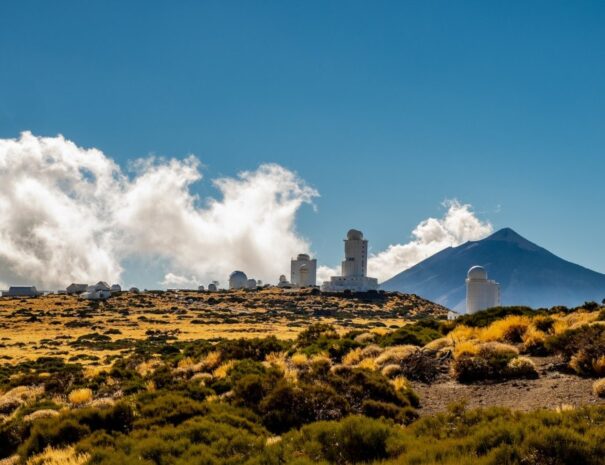
Tenerife Holidays
a complete guide to enjoy a vacation in Tenerife. Beaches, villages, gastronomy, best walks and the most amazing resorts for a perfect hotliday experience. This guide has been curated by local experts and provides the best ideas and plans if you are looking for a holiday with something more than just pool and sun! … Read More

Lanzarote holidays

Gran Canaria holidays
Holidays in Gran Canaria offer a great variety of activities and things to do. Gran Canaria is the island in the Canary islands that best summarises the virtues of all the achipielago. Discover in this guide to holiday sin Gran Canaria fantatic resorts, the best things to do and visit and many activities and recommendations … Read More
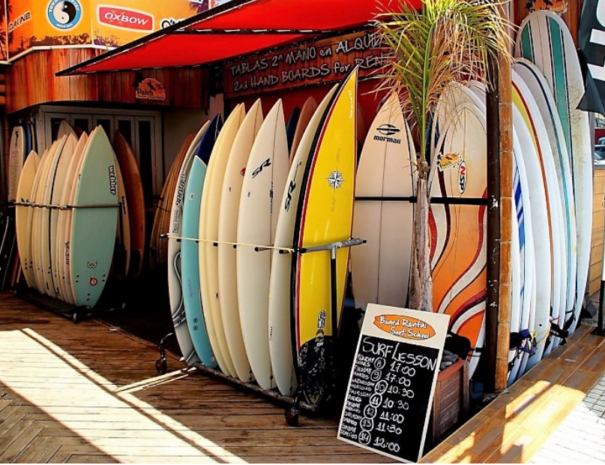
Water Sports In Tenerife
Check out our full guide to Water Sports In Tenerife. If you are looking to do something more than just chilling on the beach this list is for you. … Read More
is proudly powered by WordPress
'My misery, your paradise': The problem with tourism in the Canary Islands
Protesters have taken increasingly extreme measures, with one group going on an "indefinite" hunger strike.

News reporter @jos_franks
Saturday 27 April 2024 08:44, UK
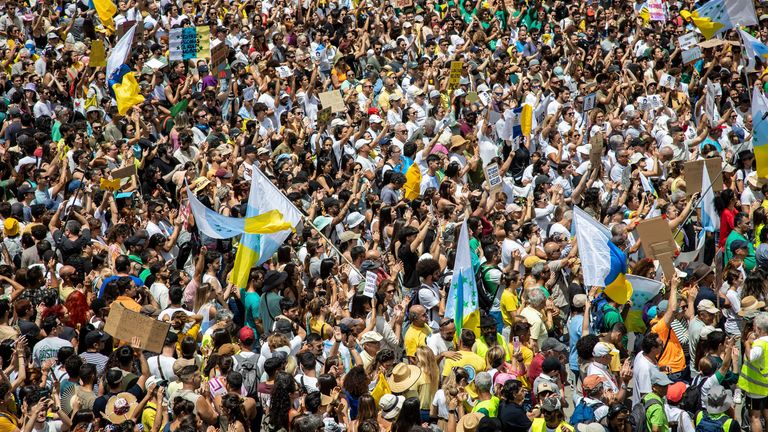
A wave of demonstrations have swept the Canary Islands as locals protested against a tourism model they say has plundered the environment, priced them out of housing and forced them into precarious work.
The seven main Canary Islands are home to 2.2 million people - and welcomed almost 14 million international visitors in 2023, up 13% from the previous year.
The protests were not aimed at individual tourists, activists say, but at the governments that have created a system that skews so much in favour of investors at the expense of local communities.
The tourism industry accounts for 35% of gross domestic product (GDP) in the Canary Islands and local residents who spoke to Sky News agree the islands can't survive without tourism.
But they are also questioning whether local communities and the environment can survive if things stay the way they are.
What's the problem? Tourism is a 'cash cow' - but not for locals
If you're looking for what's behind the wave of protests, you need to look back decades, Sharon Backhouse tells Sky News.
Along with her Canarian husband, she owns GeoTenerife, which runs science field trips and training camps in the Canary Islands and conducts research into sustainable tourism.
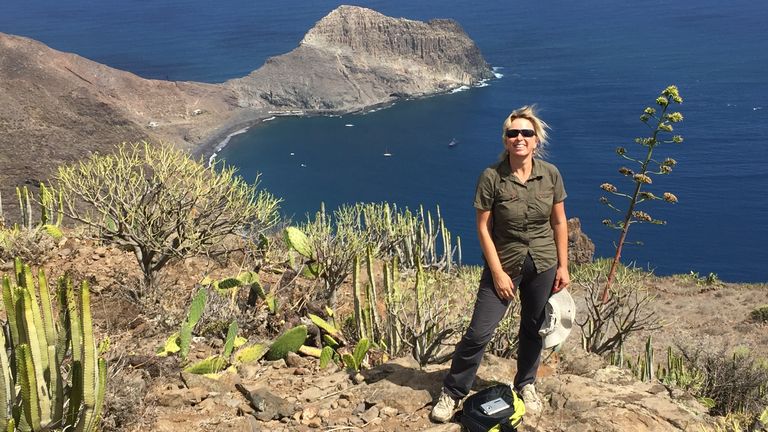
The tourism model in the Canary Islands hasn't been updated since before the tourism boom of the 1980s, when the islands were "trying desperately" to attract investment, she explains.
The answer back then was a model that was "incredibly generous" to investors, who only pay 4% tax and can send the profits earned in the Canaries back to the firm's home country, Ms Backhouse explains.
But the model hasn't changed.
That's created a situation where "more and more of these giant, all inclusive resort hotels" are being built, and the proceeds of this "incredible cash cow" aren't shared equitably with the local population, she says.
"It is absurd to have a system where so much money is in the hands of a very few extremely powerful groups, and is then funnelled away from the Canary Islands," she says.
"We're seeing really low salaries, zero-hour contracts and awful working conditions in some of these hotels."
Ms Backhouse was at the 20 April protest in Tenerife and says she has "never seen anything like it" in terms of Canarians being united for a single cause.
'My misery, your paradise'
Earlier this year there was a spate of graffiti in Tenerife.
Andy Ward, director of Tenerife Estate Agents, tells Sky News the media coverage of a smattering of "tourists go home" graffiti has been "100x greater than the on-the-ground reality", where there is little visible animosity.
But there was one spray-painted message that sums up the gulf between Canary Islands residents and the tourists who flock there: "My misery, your paradise".
More than a third of the population of the Canary Islands - nearly 800,000 people - are at risk of poverty or social exclusion, according to a recent report from the environmental group Ecologists in Action.
The average wage for restaurant staff and cleaners is between €1,050 and €1,300 a month, Mr Ward says, while the cost of renting an apartment can be almost as much.
'Shanty towns' in the shadow of luxury
One of the main issues is the dearth of affordable or social housing, Mr Ward says.
"The governments here have completely neglected this need, instead selling land for more hotels and selling land for luxury villas and high-end apartments, which locals are unable to afford."
What has caused anger is property managers renting out properties to tourists that are "completely inappropriate and inadequate", such as small apartments in residential buildings.
Please use Chrome browser for a more accessible video player
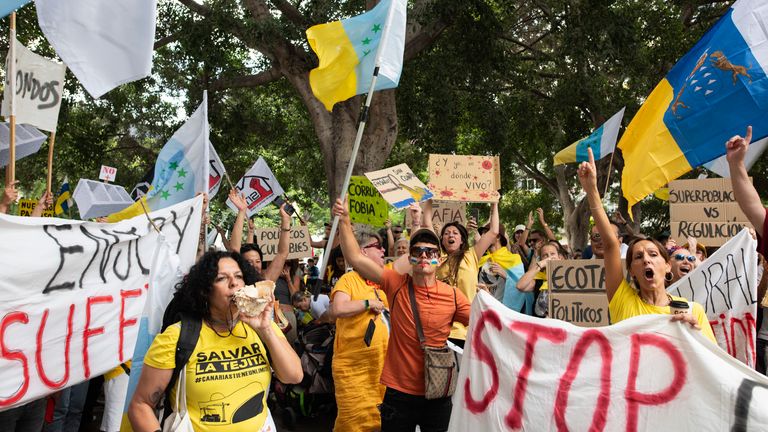
The regulations on short-term lets "are a complete mess and a mish-mash", he says. Landlords aren’t incentivised to let their properties long-term because they must sign up to long leases, and if tenants default on the rent it can take 18 months to evict them.
His views are echoed by Kris Jones, a British citizen who was born in Tenerife, taking over the bar his parents owned in Playa de la Americas, the Drunk’n Duck.
Many hotel employees are forced to live in the multiple motorhome sites that have popped up around the south of the island because they can’t afford anything else, he says.
"Shanty towns" is what Ms Backhouse calls them, built in the shadow of "uber luxury hotels".
Mr Jones questions why planning permission has been granted to hotels without ensuring their employees will be able to live nearby.
He says the idea the island's population hates foreign visitors is "utter garbage".
He stresses that the protests were against the government - not tourists.
"It's nothing to do with the behaviour of British tourists, and isn't even part of the agenda at all," he tells Sky News.
Hunger strike to stop hotels
Protesters say they are having to take increasingly drastic actions to have their voices heard.
Subsequently six members of Canarias Se Agota - which translates to the Canary Islands Are Exhausted - have been on hunger strike since 11 April.
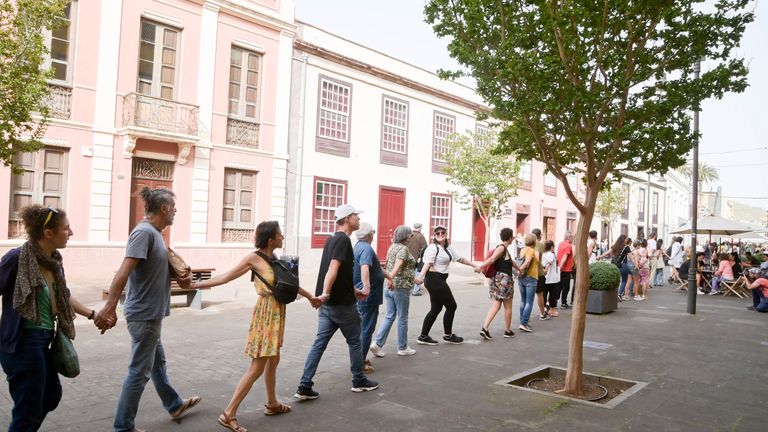
As well as demanding a halt to new tourism developments and a limit to the number of visitors, the campaigners want to stop the development of two luxury resorts in Tenerife.
Both developments faced legal hurdles on environmental grounds that had paused construction, but stop work orders were lifted earlier this year.
Campaigners maintain the developments breach environmental laws - claims the developers deny - and have committed to continuing the hunger strike until the government intervenes, despite some strikers needing hospital treatment.
The hunger strikers, who have not been named, were among fellow protesters on the streets of Tenerife on 20 April.
A spokesperson for the campaign said: "If anything happens to any of our comrades... you (Fernando Clavijo - president of the Canary Islands) will have to face the fury of the people."
The strikers met with the Canary Islands president on 23 April, but their demands were rejected.
Representatives of the strikers said on 26 April the "medical condition of the six is deteriorating, but they are determined to continue" until their demands are met.
Be the first to get Breaking News
Install the Sky News app for free

Protesters are also demanding "access to respectable housing", an "eco-tax" and "immediate measures to put an end to the raw sewage discharges into the sea".
Salvar La Tejita, an environmental organisation which helped organise the mass protest, says: "It is vital to clarify that these protests are not against the tourists or tourism in general, but are against the political class, administrations, hotel chains, and constructors who are jointly responsible for the unsustainable circumstances which Tenerife is now in.
"This platform is not in any way responsible for the graffiti messages 'Tourists Go Home' which have been sprayed in and around many tourist resorts.
The environmental cost of tourism
The Canary Islands are a "biodiversity jewel in the Atlantic", Ms Backhouse says - but they haven't been fully protected or valued.
Politicians in the past have said the development of the controversial resorts can't be stopped "just because of a weed", she says.
"These aren't just weeds. What they're actually doing is interfering with an ecosystem which will have difficulty surviving if you plonk a resort right in the middle of it."
The building of these resorts has an environmental costs as "beautiful landscapes are cemented over", Ms Backhouse says - and the cost only mounts once they open.
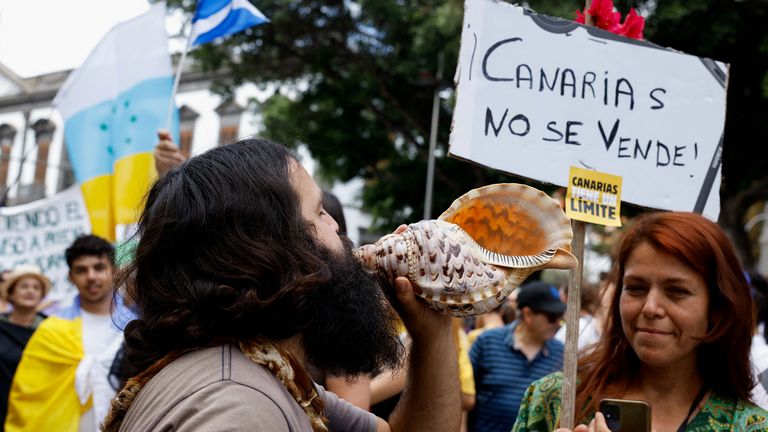
"The problem with these resorts is that we just don't have enough resources in terms of water, what happens to all the rubbish, how is it all recycled.
"Locals are feeling disenfranchised from their spaces because it all becomes tourist territory.
"Towns and villages that locals grew up in or would go on holiday in suddenly are completely unrecognisable."
What solutions are on the table?
One of the proposals is a tourist tax which would be invested in protecting the environment.
Ms Backhouse says the hotel industry is against it and the government is nervous about it - but GeoTenerife's research indicates it wouldn't put tourists off.
"I think the reality is very few people will cancel their holiday because they have to pay a little bit of money that goes towards protecting the landscapes they're coming to see."
Hoteliers have proposed instead putting up IGIC, which is similar to VAT, but Ms Backhouse says that isn't welcomed by campaigners "because again, that just puts the onus on the locals to prop up the system".
A tourist tax is one part of the answer to protect the environment, but it doesn't answer the question of job insecurity and unaffordable housing.
Ms Backhouse says it is encouraging to see solutions proposed, but "it's going to take something far more wide-ranging to put this train on a more sustainable track".
Impending crackdown on holiday homes
A draft law is expected to be passed this year which would ban newly built properties from becoming short-term rentals and toughen up the rules for existing properties.
It comes as official figures show the number of rental beds on the island reached 220,409 in March this year - an increase of more than 40,000 from the same point in 2023.
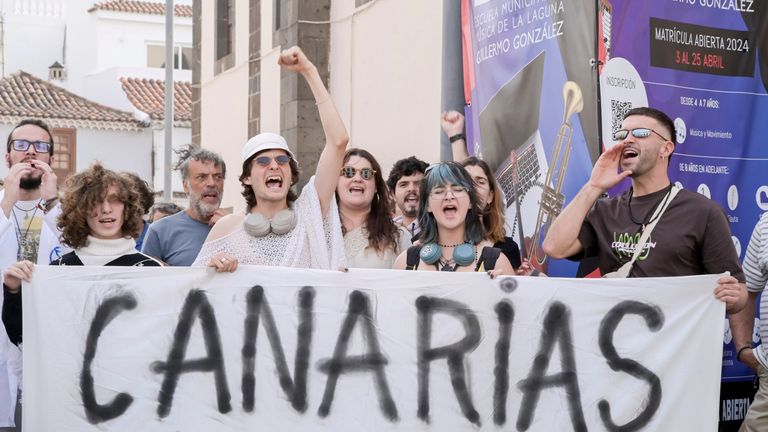
Canaries regional tourism chief Jessica de Leon told the Reuters news agency that enforcement support for the islands' 35 inspectors is key to the success of the new rules.
"We are going to empower [the police] so that they can act when fraudulent behaviour is detected in homes," she said, adding that the plan could involve 1,300 people, which would include all of the islands' police forces.
"The first step is to contain the growth, the second is to clean up [existing listings]," said Canaries director of tourism Miguel Rodríguez.
An example of the crackdowns to come occurred on 16 April, when police raided a property in Tenerife after its owner was reported for listing the building's rooftop as a campsite on Airbnb, offering renters tents for €12 (£10) a night.
Read more: Tourist dies after falling into sea in Tenerife Why are university students protesting in the US?
The plans have not proved popular with landlords, who would be forced to comply with the new rules within five years.
"Everything that the government is trying to impose is problematic," says a spokesperson for Ascav, the Canary Islands Vacation Rental Association, adding it is "the most restrictive" legislation of its kind in Europe.
They believe around 95% of the existing holiday homes that abide by current laws will not be able to meet the new criteria, which includes getting consent from local authorities to open, meeting higher energy classification thresholds, having a minimum surface area and more in a long list of "impossible compliance".
"The consequences will be immediate," they warn. "If holiday homes are banned on the islands, visitors who demand this type of accommodation will choose other destinations, Canary Islanders will be even poorer, bars, restaurants, rent a cars, supermarkets, leisure activities, etc. will lose economic activity. Undoubtedly, we all lose."

Keep up with all the latest news from the UK and around the world by following Sky News
Ascav acknowledges "something is going wrong" for the island's economy, but argues it's not down to those providing holiday homes, nor the tourists Canarians "love".
"The message is for our governments, for their passivity, incompetence and lack of planning," they say.
"They are the ones that have allowed that the resources of tourism has not to been shared with the local population. Locals has been excluded because governments preferred permitting to exploit the territory and tourism to the maximum, without any return for the islands and their inhabitants.
"The solution is to listen to ourselves, to listen to our visitors, to listen and protect to the Canary islanders, to integrate, to plan, to be sustainable, to grow with, not at the expense of, to be responsible for the territory and the well-being of its people, to diversify, to ensure the quality of the destination.
"Our problems have to be resolved by politicians, but they lack will and predisposition, that's why we are fed up."
What have politicians said?
The islands' president said the day before the 20 April protests that he felt "proud" the region is a leading Spanish tourism spot, but acknowledged more controls are needed.
"We can't keep looking away. Otherwise, hotels will continue to open without any control," Fernando Clavijo told a news conference.
Two days after the protest, Mr Clavijo posted on X saying: "What happened last Saturday in the streets of Canarias leaves a message that we share. Canarias has to review its model, where we want to go.
"It had to be done during the pandemic, but it is a challenge that we assumed and on which we are already working with the councils, with the city councils and that we must face as a whole in society."
He has called a meeting of island presidents and Canary Island administrators on 30 April in the hope of finding a solution.
Related Topics
- Canary Islands

Local Tenerife Markets
How to avoid tenerife property rental scams online, tenerife’s most popular cultural events and festivals.

History of the Canary Islands
Formed by huge volcanic forces an estimated 30 million years ago, the Canary Islands history is shrouded in mystery.
Even the origin of their collective name is still in debate: some say they are named after the Latin canere – to sing, in reference to canaries, (native to the islands), others claim the root is canus – dog, (the islands used to be home to large dogs apparently), or perhaps the Canarii tribe of Morocco gave the islands their name. Who knows? It is a debate which will surely continue.
The original inhabitants of the Canary Islands were a race known as the Guanches, a name derived from guan, meaning man or people, and achinch, meaning White Mountain in an obvious reference to Tenerife’s snow-capped Mount Teide.

The natives lived a Stone Age existence of shepherding and very rudimentary agriculture. They buried their dead and, in the case of chieftains, mummified, much like the ancient Egyptians.
The origins of these Canarian indigenous people have been, and indeed still are the subject of many a long debate. Numerous theories have been put forward throughout the last century, achieving varying degrees of acceptance.
The first settlers evidence suggests, must have arrived by sea, and archaeology suggests that when they did so, not only did they import domestic animals such as goats, sheep, pigs and dogs but also cereals such as wheat, barley and lentils.
They also had a set of well defined socio-cultural practices that seem to have originated and been in use for a long period of time elsewhere.
Although the maritime currents surrounding the Canary Islands flow in a south-westerly and westerly direction (leading boats away into the Atlantic Ocean), there is also enough evidence to prove that various Mediterranean civilisations in antiquity did know of the islands’ existence.
Already the Greeks and Romans were reporting on this archipelago of volcanic origins, and they called it the Happy Islands, Garden of the Hesperides and Atlantida.
The indigenous population of the Canary Islands did not therefore develop in complete isolation, and some historians even believe that the legendary continent Atlantis was located here.
In 1402, the Spanish conquest of the Canary Islands began, with the expedition of Juan de Bethencourt and Gadifer de la Salle to the island of Lanzarote, Norman nobles who were vassals of Henry III of Castile.
From there, he conquered Fuerteventura and Hierro. Béthencourt received the title King of the Canary Islands, but recognised King Henry III as his overlord.
Béthencourt also established a base on the island of Gomera, but it would be many years before the island was truly conquered. The people of Gomera, as well as the Gran Canaria, Tenerife, and La Palma people, resisted the Spanish invaders for almost a century.
In 1496 the Canary Islands became part of the Spanish kingdom, and subsequently Christopher Columbus rested at La Gomera before venturing into the unknown, westwards in search of the Indies.
Before long the Canary Islands were to become the vital link in transatlantic crossings, a welcome sanctuary before the voyages to Europe, Africa and the American continent. Last century, as trade and travel increased, the first hotels began to open in Tenerife. Since then commerce and leisure have spread and have continued to do so until today.
Spain’s control of the Canary Islands did not go unchallenged. First Moroccan troops occupied Lanzarote in 1569 and 1586, and then Sir Francis Drake tried a little gunboat diplomacy off Las Palmas in 1595. A Dutch fleet reduced Las Palmas to rubble in 1599, and then in 1657 the Brits under Admiral Robert Blake defeated the Spanish at Tenerife. The score: Spanish treasure fleet annihilated, British lose one ship.
Spain managed to hang on though, and the Canaries were declared a province of Spain in 1821. Santa Cruz de Tenerife was declared the official capital, adding fuel to the already low-level bickering between Tenerife and Gran Canaria. The inhabitants of Gran Canaria demanded that the province be split into two, which it was for a short and unsuccessful period in the 1840s.
The rivalry between the elites of the cities of Santa Cruz de Tenerife and Las Palmas for the capital-ship of the islands would lead to the division of the archipelago in two provinces in 1927, though this has not lain to rest the rivalry between these two cities, which continues to this day.
In 1936, Francisco Franco travelled to the Canary Islands as General Commandant. From the Canaries, he launched the military uprising of July 17. He quickly took control of the archipelago, with the exception of a few focal points of resistance on the island of La Palma and in the town of Vallehermoso, on Gomera island. Despite the fact that there was never a proper war in the islands, they were one of the places where the post-war repression was most severe.
During the Second World War, Winston Churchill prepared plans for the British seizure of the Canary Islands as a naval base, in the event of Gibraltar being invaded from the Spanish mainland.
Opposition to Franco’s regime did not begin to organise until the late 1950s, and after Franco’s death and the installation of a democratic constitutional monarchy, a bill of autonomy was put forth for the Canary Islands which, was approved in 1982. In 1983, the first autonomous elections were held, and were won by the Spanish socialist party.
Tenerife Forum does what it can to source information that its readers may find interesting about the Canaries and will continue to provide updates on these topics.
Related Posts
Incredible orcas seen off the coast of la gomera, canary islands holidays – a quick tour, ocean observatory of the canary islands.
Save my name, email, and website in this browser for the next time I comment.
Please enter an answer in digits: 11 − five =

20 Top Attractions & Places to Visit in the Canary Islands
Written by Michael Law , Lana Law , and Barbara Radcliffe Rogers Updated May 13, 2023
Authors Michael and Lana Law spent a month touring the Canary Islands in the fall of 2022.
Golden-sand beaches that run for as far as the eye can see, craggy volcanic peaks piercing the sky, jungles full of rare trees, and a collection of vibrant towns with countless things to see and do, you'll find all of this and more on the Canary Islands.
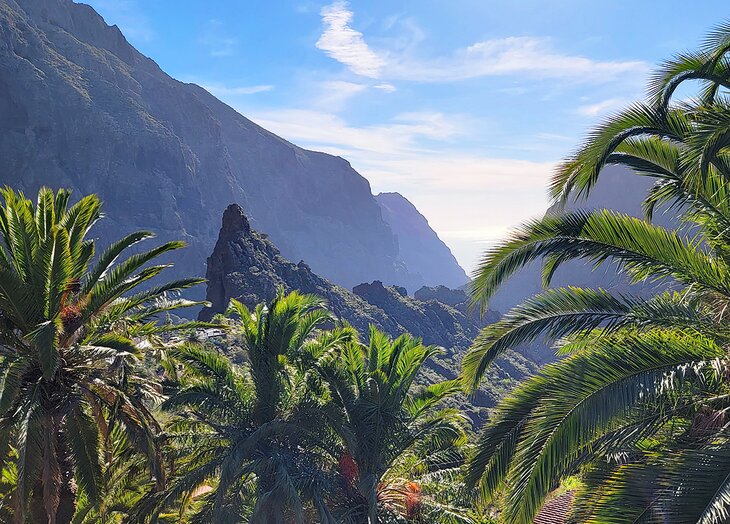
Just off the coast of northwestern Africa, these sun-kissed islands have been drawing visitors to their shores since the 1970s. Lie on the beach and soak up the sun, splash in the waves, climb to an ancient volcanic spire, run up and down massive sand dunes, or explore the narrow streets of the Old Towns. No matter what you choose, it's all here for you.
Getting here is easy. Charter flights from Europe depart almost hourly. But leaving these beautiful islands is the hard part!
Plan the best places to visit on your vacation with our list of the top attractions in the Canary Islands.
1. Teide National Park, Tenerife
2. timanfaya national park, lanzarote, 3. beaches of gran canaria, 4. the beaches of tenerife, 5. the beaches of fuerteventura, 6. admire the works of cesar manrique on lanzarote, 7. go dolphin & whale watching in tenerife, 8. santa cruz de tenerife, 9. las palmas de gran canaria, 10. meet animals at loro park, tenerife, 11. san cristóbal de la laguna, tenerife, 12. la orotava, tenerife, 13. explore cueva de los verdes, lanzarote, 14. puerto del carmen, lanzarote, 15. santa cruz de la palma, 16. hike to roque nublo, gran canaria, 17. join the fun at the carnival of santa cruz de tenerife, 18. parque nacional de garajonay, la gomera, 19. go stargazing on mt. tiede, tenerife, 20. caldera de taburiente national park, la palma, map of attractions & places to visit in the canary islands, what are the canary islands like, when is the best time to visit the canary islands.
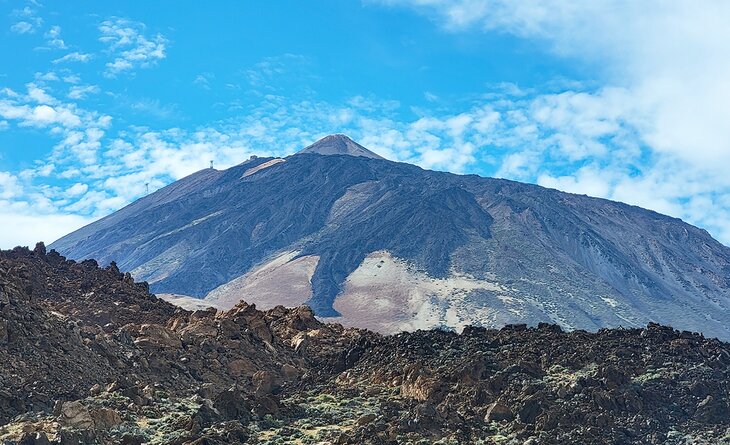
The third highest volcano in the world at 3,718 meters in altitude, Teide towers above the small island of Tenerife , the best known of the Canary Islands. Teide National Park, a UNESCO World Heritage Site , includes the entire mountain, and a trip inside the immense crater is a highlight of a trip to the Canary Islands.
Inside the crater's rim is a caldera - the crater floor - 19 kilometers in diameter, and a drive across this barren moonscape is like driving into the center of the earth. This crater is actually what's left of a much larger mountain that blew its top about three million years ago, collapsing into itself. In places, it left walls that rise 457 meters above the crater floor.
El Portillo Visitor Center is a good place to visit first, where an excellent little museum has interactive exhibits showing how volcanoes form and exploring the environment of the crater. Outside, a path leads through a botanic garden, where labels help visitors recognize and identify native plants they will see in the park.
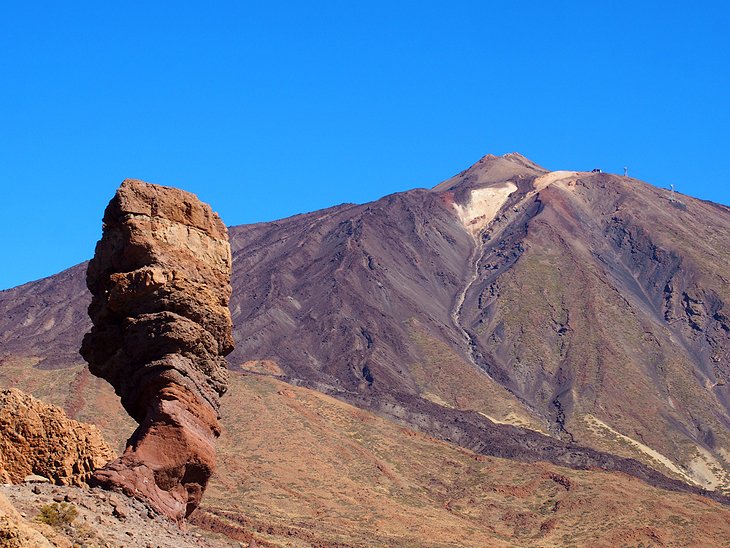
To see the crater from above, and for wide-ranging views, ride the Teleférico cable car up Teide's cone, a newer volcanic peak that formed above the giant crater after the original top of the mountain slid off.
Although the view from the cable car is outstanding, it can't match the experience of crossing the crater floor to see the varied remnants of the volcanic action: lava fields; jumbles of jagged, black lava boulders; dunes of lava pebbles; and outcrops of red, blue, yellow, and black volcanic stone. Stopping points at various features have signs in English describing the flora and fauna and explaining the landscape, and walking trails lead to the highlights.
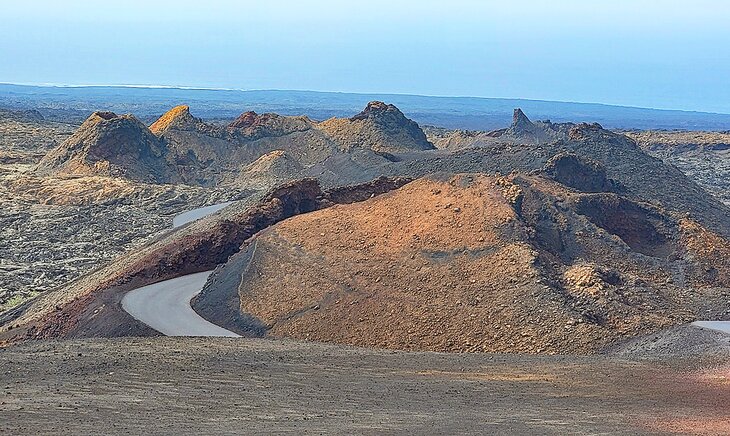
Lanzarote has a much more recent volcanic history than Tenerife - the cataclysmic eruptions that covered most of the island in molten lava and volcanic ash took place between 1730 and 1736. The seven-year series of eruptions buried 11 villages and drove the population from the island, which had previously been the garden of the Canaries.
After the eruptions stopped, the farmers returned and found innovative ways to cultivate parts of their ash-covered land. The most dramatic of the volcanic landscapes, including a still-active volcano, are now protected as the UNESCO-listed Timanfaya National Park.
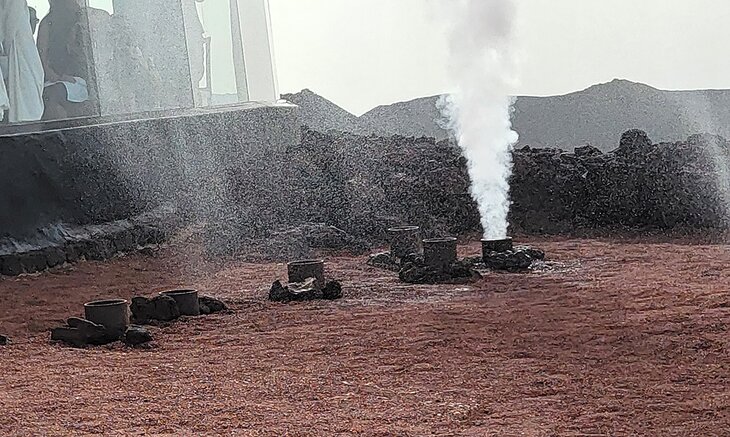
You literally have to see it to believe it: huge areas of unearthly terrain covered in swirls of solidified lava, cracked into crevices by more molten lava still moving beneath it. To see the entire park, go to Islote de Hilario , at the top of a volcanic cone, where park rangers demonstrate the tremendous heat just beneath your feet. Dry brush thrown into a depression bursts into flame, and water poured down a pipe erupts back out in a boiling geyser.
Read More: Top-Rated Things to Do on Lanzarote
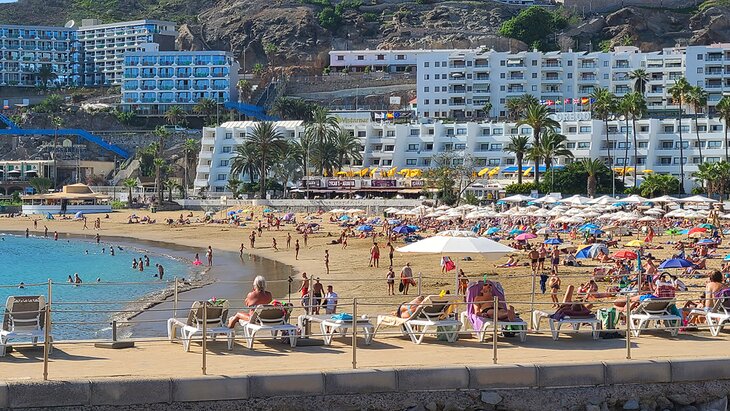
The far south coast of Gran Canaria has a succession of beautiful golden sand beaches. Between Playa de San Agustin on the west and Puerto de Mogán to the east, sunseekers will find no less than six major beach resort areas.
The largest is Maspalomas , with a protected reserve of huge sand dunes in behind stretching in layers to the sea. Mountains of wind-riffled sand undulate above beaches, where dunes as high as 12 meters are constantly carved and shifted by sea and wind. You can wander for hours on foot, marveling at their desolate beauty, but it's more exotic to climb on a dromedary for a lurching camel ride through this spectacular dunescape.
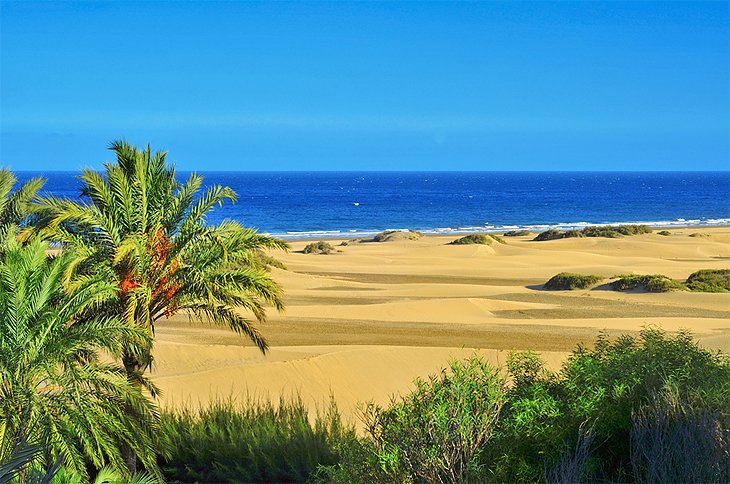
Just around the point to the east is another of the island's best beaches, Playa del Inglés. Similar to Maspalomas, but easier to access, this beach is painted with bright umbrellas and backed by a promenade and a line of restaurants, cafés, shops, and amusements. It's one of the island's liveliest beach scenes at any time of day or night.
Because of the clear, warm water, diving is popular here and an underwater park has been designated at Arinaga, north of Playa de San Agustin. There are diving schools at Maspalomas, Playa Ingles, and several other points, and you'll find facilities for all manner of other water sports here, including sailing and windsurfing.
The capital city of Las Palmas has several excellent beaches, including Playa Las Canteras, with a wide, sandy shore and gentle waters thanks to a natural breakwater formed by volcanic rock. This coast sees large waves from the Atlantic Ocean; the western end of the beach is one of the best places on Gran Canaria for surfing .
Read More: Top-Rated Things to Do on Gran Canaria
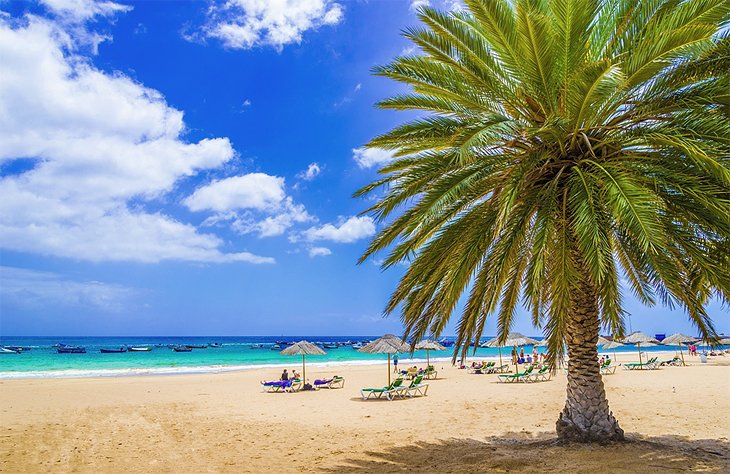
Like those of Gran Canaria, the fabled beaches of Tenerife lie along its sunny south coast. Among the most developed, with plenty of holiday homes, hotels, restaurants, and sports options, are the golden sands of family-oriented Playa de Las Vistas and the upscale enclaves around Playa del Duque , on the Costa Adeje to the west. At the latter, you'll find shopping, luxury spas, golf, windsurfing, jet skiing, and other activities.
Smaller natural beaches with darker sand dot the entire shore east of Los Cristianos as far as El Medano , a fun and funky place where you'll find a world-class kiteboarding and windsurfing destination. If you crave a bit of solitude, head a bit south of El Medano and check out the golden sands of spectacular Playa de la Tejita, Tenerife's largest natural beach, which is frequently featured on social media postings.
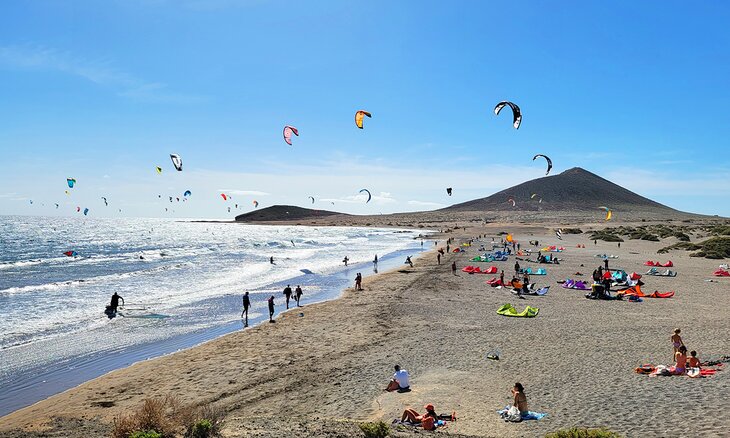
Perhaps the best beach for families is Playa de las Teresitas , just outside the capital of Santa Cruz. Its gently sloping, golden sands (imported from North Africa) are protected by artificial barrier reefs that make it perfect for children and swimmers, without the heavy surf of some other beaches.
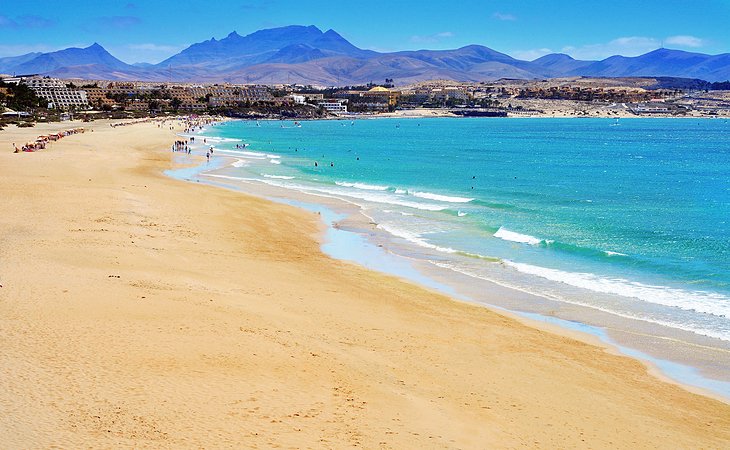
Miles of beaches on the island of Fuerteventura are almost empty, and even most of those with well-developed tourist infrastructure, are uncrowded. The soft sands of Africa's deserts are blown across the 100 kilometers of open ocean to find their way to Fuerteventura's west coast and between your toes.
Along Fuerteventura's shorelines, these same sands are washed by the clear, clean waters of the Atlantic Ocean. The 16 kilometers of beaches around Corralejo are some of the best on the island. Here, you'll find ever-shifting sand dunes running right down to the water's edge.
Laze on the sand here and take a dip, or for the more sporty types, sign up for a surfing lesson. If the winds are up, be sure to swing by Flag Beach, also known as Playa Medano, and watch the kiteboarders race across the waves under their colorful kites.
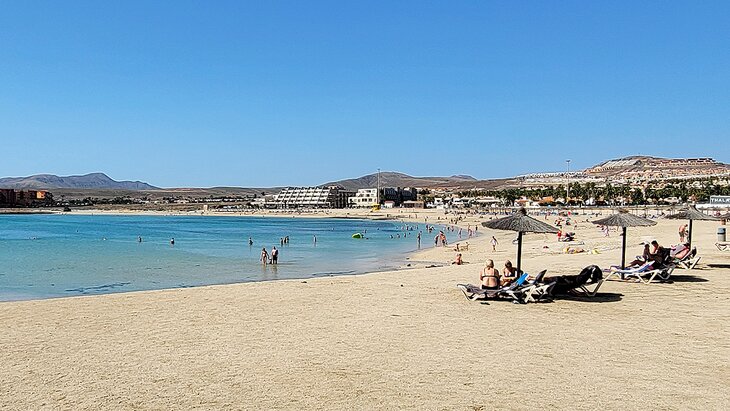
Farther south is Playa Sotavento (leeward beach), which has earned Fuerteventura its reputation as a haven for beach lovers. This unique beach is a massive sand flat where the tides come up slowly, creating warm, shallow pools in behind the shore break.
At the far end of the Jandia Penisula, you'll find more amazing beaches. Playa Jandia and Playa Matorral are massive stretches of golden sand with a lively townsite packed with restaurants and shops behind. These beaches are favored by the beach-walking crowd for their flat and hard sands and wonderful views.
Read More: Top-Rated Things to Do on Fuerteventura
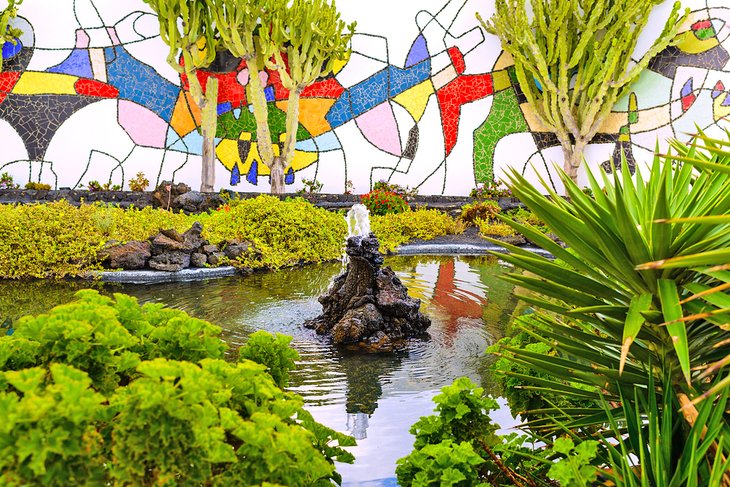
The artist Cesar Manrique is remembered not only for his works of art and architecture but for the inspiration and dedication that saved the character of his native island of Lanzarote. After a successful art career in New York and on the continent, he returned to Lanzarote in 1968, where he began a campaign to save Lanzarote from the unbridled tourist development that had ruined so many other holiday destinations.
He set the island on a new environmentally and culturally sustainable path by designing and building a series of tourist attractions that used and celebrated the nature of the island - its volcanic landscapes, ragged lava flows, and soaring cliffs.
These include his own dramatic home, Taro de Tahiche , built into a series of subterranean bubbles caused by lava flows; Jameos del Agua , an auditorium, swimming pool, and restaurant built inside a huge volcanic bubble; Monumento al Campesino , with a monumental modern sculpture and handcraft gallery; Mirador del Rio, a scenic overlook high above the sea on the north coast; Jardin de Cactus , a stunning cactus garden built into a former quarry.
He also repurposed a disused fort into the Museo Internacional del Arte Contemporáneo in Arrecife, designed the beautiful Salinas Hotel in Costa Teguise, designed signs for several other attractions, and created huge wind toys - mobile sculptures at road intersections throughout the island. But most of all, he imbued the islanders with a pride in their unique landscape and traditions, and a determination to protect its integrity.
Several of these attractions have gift shops filled with quality local crafts and art, excellent places for souvenir shopping .
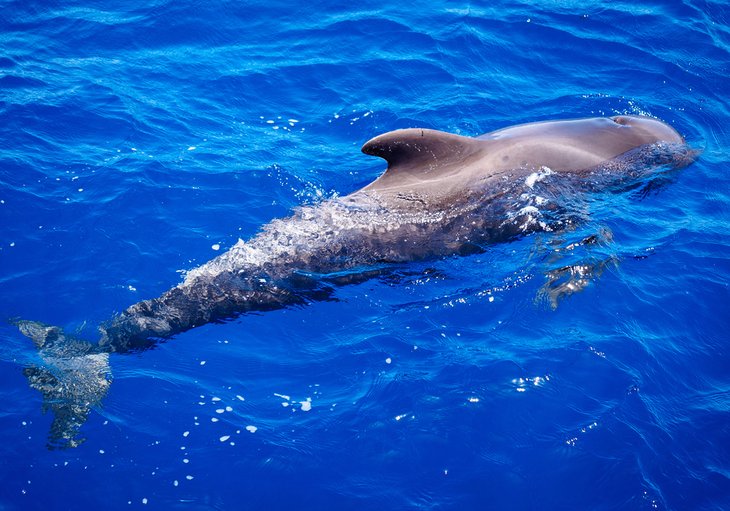
The Atlantic Sea off Tenerife is known for its whales and dolphins, and a whale watching cruise is one of the island's favorite things to do for families. You can spot whales and watch pods of dolphins cavort – as many as five different species – on boat excursions from various harbors. Many cruises include a stop at a secluded bay for swimming or snorkeling.
A variety of crafts are available, from sleek sailboats and catamarans to luxury yachts. You'll be accompanied by trained crew members who will help you spot and identify the marine life you see. You'll also get different views of Mt Tiede and the coastline. For those who like their wildlife experiences to be closer to the water — or in it — there are tours for kayakers and divers, as well.
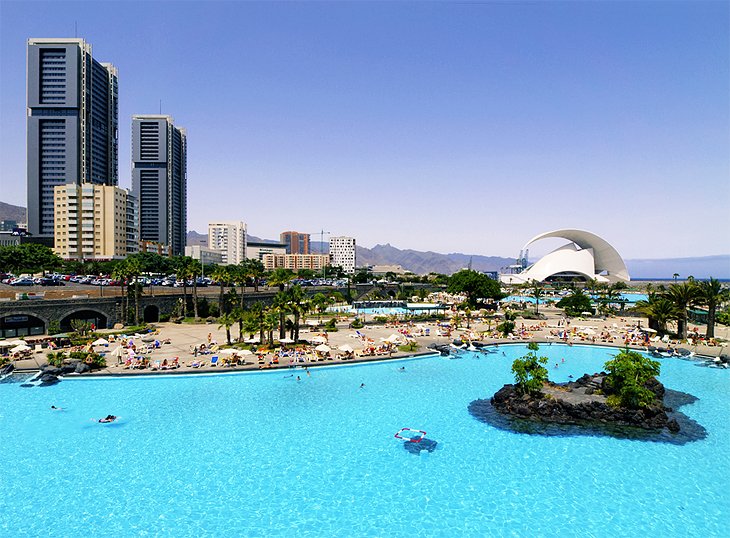
The capital of Tenerife is a lively and attractive city, marked by some outstanding architectural attractions. Foremost of these is the magnificent Auditorio de Tenerife , an opera house and concert hall overlooking the sea, designed by Spanish architect Santiago Calatrava. The concert hall hosts world-class performers, conductors, and orchestras.
Santa Cruz has other cultural highlights, including the excellent collections of the Museum of Fine Arts , where you'll find works by Spanish, Flemish, and Canarian painters.
At the fascinating Museum of Nature and Man , you can learn more about Tenerife's native people, before the arrival of European settlers, and about the volcanic history of the island. Close to the museum, the lively Mercado de Nuestra Señora de Africa is a good place to find local crafts. Santa Cruz is where you'll find the best shopping on Tenerife.
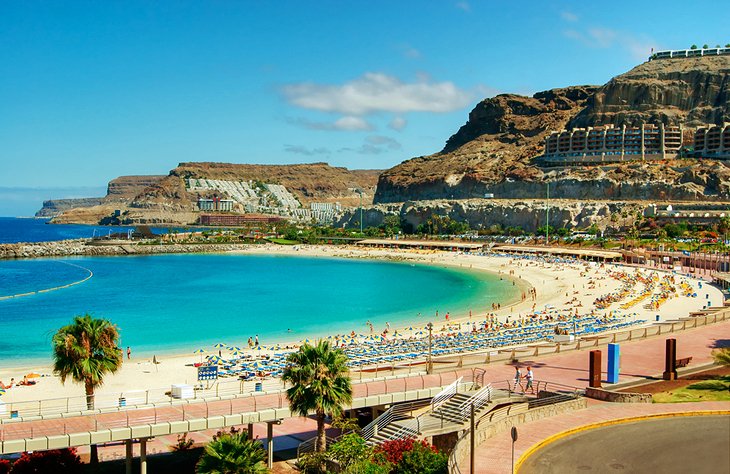
Las Palmas de Gran Canaria is a sun-drenched seaside town with an interesting historic legacy from its Spanish colonial past, dating from the 15th century. The city was founded in 1478, Spain's first colonial foothold in its westward expansion toward the New World.
The impressive 16th-century Cathedral of Santa Ana has a Gothic interior, with unusual palm-shaped columns, and in the south wing is the Diocesan Museum, with a rich collection of religious art and gold and silver work. The interesting archaeological and ethnographic collections at the Museum of the Canary Islands reveal the prehispanic culture of the island.
The 15th-century Casa de Colon was the home of the first governor, where Columbus stayed en route to the New World. Exhibits in the museum detail his explorations. The house is a beautiful example of Canarian architecture, with delicate wooden balconies, lovely patios, and a monumental doorway.
The Néstor Museum exhibits the artwork of Néstor Martín-Fernández de la Torre, one of the most renowned Spanish Symbolist painters. The museum displays his paintings, including portraits and landscapes, as well as his drawings, sketches, and craftwork. The Néstor Museum is part of the Pueblo Canario (Canaries Village) built in an idealized "neo-Canarian" style. Jardín Botánico Viera y Clavijo , seven kilometers from Las Palmas, is a spectacular botanical garden filled with native Canarian plant species and set in a beautiful valley.

One of the most popular tourist attractions for families in the Canary Islands is Loro Park just outside of Puerto de la Cruz. Combining high standards of conservation with good entertainment, the park has one of the world's largest collections of parrots, a large dolphinarium, and an immense aquarium with an underwater tunnel where you can walk as sharks and other sea creatures swim overhead.
A bat cave; a gorilla jungle; a huge penguin habitat; and various exotic animals, including tigers and crocodiles, fill the large park.
Address: Calle San Felipe, Puerto de la Cruz, Tenerife
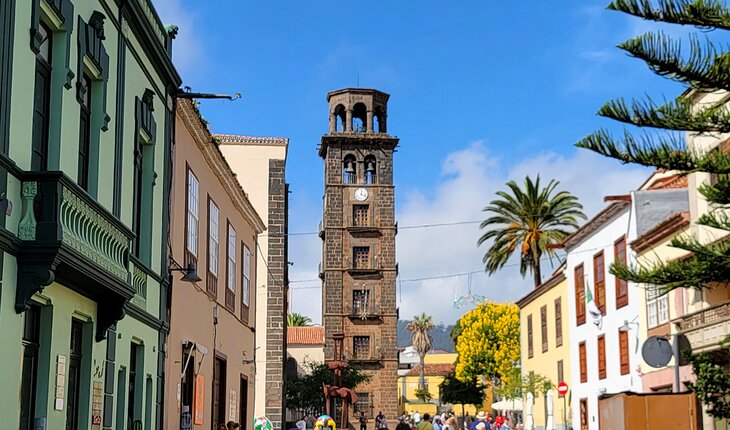
This charming colonial city is a designated UNESCO World Heritage Site because of its exceptional cultural heritage. San Cristobal de la Laguna, locally known simply as La Laguna, is the former capital of all the Canary Islands. The lovely historic town has many architectural gems, such as its elaborate cathedral, Renaissance and Neoclassical churches, and impressive mansions built by wealthy families in the 17th and 18th centuries.
The town's parish church, the Iglesia de Nuestra La Concepción , was built 1496 and modified in the 16th and 18th centuries. The sanctuary is simply adorned and has Mudéjar coffering. Another important church is the 17th-century Iglesia de Santo Domingo de Guzmán , with Plateresque details on the facade and an ornately designed Mudejar ceiling. Paintings by the Canary Island artist Cristóbal Hernández de Quintana decorate the interior.
For a historical overview of the region, head to the History and Anthropology Museum , housed in the lovely Casa de Lecaro, which dates from 1593.
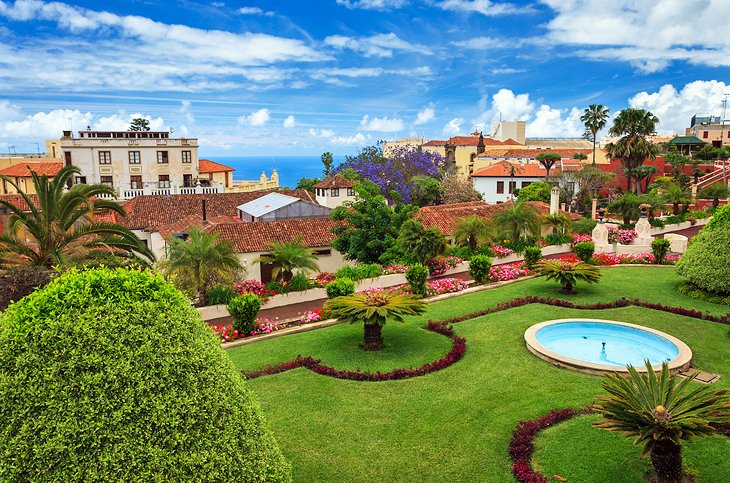
In a beautiful valley of banana plantations, this colonial town has been designated as a National Historic-Artistic Site . The historic quarter is filled with gracious old homes, many with ornately carved wooden balconies.
The most outstanding of these architectural gems is the Casas de los Balcones , built in the 1630s as a home to a wealthy colonial family. Today, it's a museum and gallery of traditional Canarian crafts and needlework. To admire the interior balconies, step inside the plant-filled patio. The Iglesia de Nuestra Señora de la Concepción , a 16th-century Baroque church, has two remarkable bell towers.
The beautifully landscaped Hijuela del Botánico is filled with more than 3,000 colorful tropical flowers and rare plants, set in lawns with decorative pools. An even larger botanical garden is in nearby Puerto de la Cruz, which was once part of La Orotava, a port known for its fishing (its boats still bring in the daily catch to its restaurants). Cesar Manrique, the artist, sculptor, and architect from the neighboring island of Lanzarote, designed its Jardin Beach among volcanic rocks.
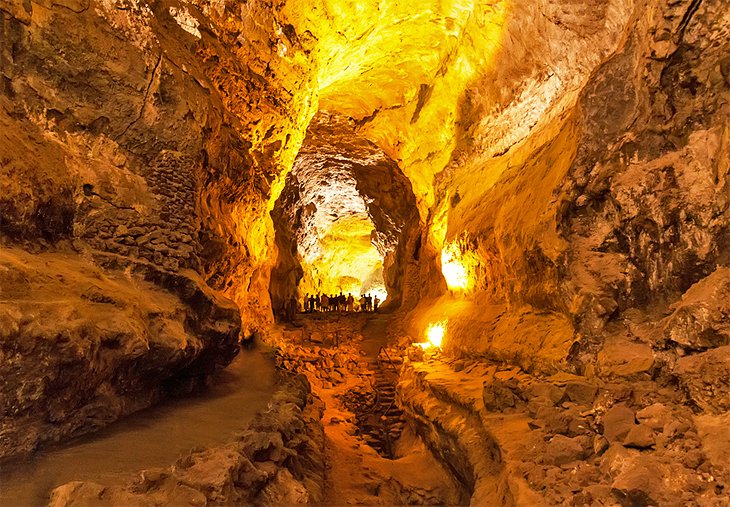
One of the most popular things to do on Lanzarote is to explore the seven-kilometer-long volcanic tube that extends from La Coruna mountain to the sea. These tubes were formed when the surface of a lava flow cooled and hardened while the molten river of lava still flowed beneath it. When the subterranean lava emptied into the ocean, it left the hollow tube deep underground.
The two-kilometer section that you can tour inside the cave is in its original state - the only things that have been added are lights and walkways for safety. You enter the caves through a jameo — a hole created by the collapse of a thin place in the roof of the lava tube. Some of the larger chambers are as high as nine to 12 meters. The stone of the walls is red, orange, and black, formed by compounds such as iron oxide and calcium carbonate in the stone.
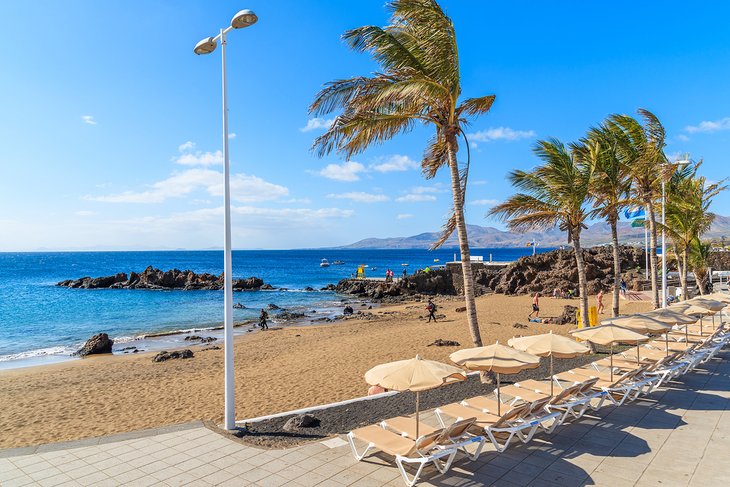
The biggest tourist town on Lanzarote is lively Puerto del Carmen, surrounded by more than six kilometers of sandy beaches with calm waters. The old fishing village has been transformed into a bustling vacation destination with a wide selection of hotels and restaurants, but for all its tourist amenities, it has not lost the feel of a real Canarian town.
Those visiting during the first two weeks of August will be delighted by the Fiesta de la Virgen del Carmen . This religious festival honors the patron saint of the fishing village, which is decked out with colorful bunting for the occasion. The village celebrates with a traditional procession of decorated boats. One of the boats holds the statue of the Virgen del Carmen, while other fishing boats follow in a twilight maritime parade.
Read More: Best Beaches on Lanzarote
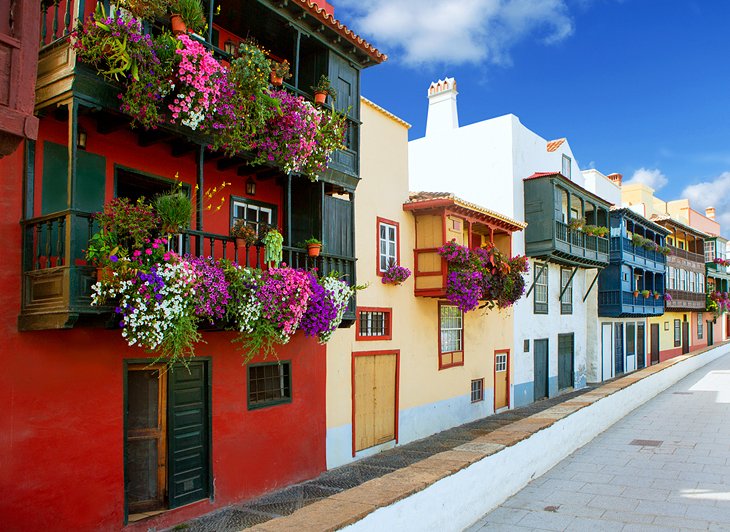
This pleasant seaside town has the most unspoiled seafront of any in the Canaries and still reflects the favored position it held in the 1500s, when it was one of only three Spanish ports allowed to trade with the New World. Stroll along the cobbled Calle O'Daley to see the handsome homes of wealthy merchants and appreciate the prosperity this town enjoyed in the 17th and 18th centuries.
The 16th-century Iglesia del Salvador has a beautiful mudejar ceiling and a painted altarpiece. The Ayuntamiento (town hall) was once the cardinal's palace, built in 1569, and has a magnificently carved ceiling and Renaissance arcade. Every five years, the island celebrates its patron saint, the Virgin of Las Nieves, with Quinquennial Fiestas , following the same traditions the townspeople have enjoyed since 1680.
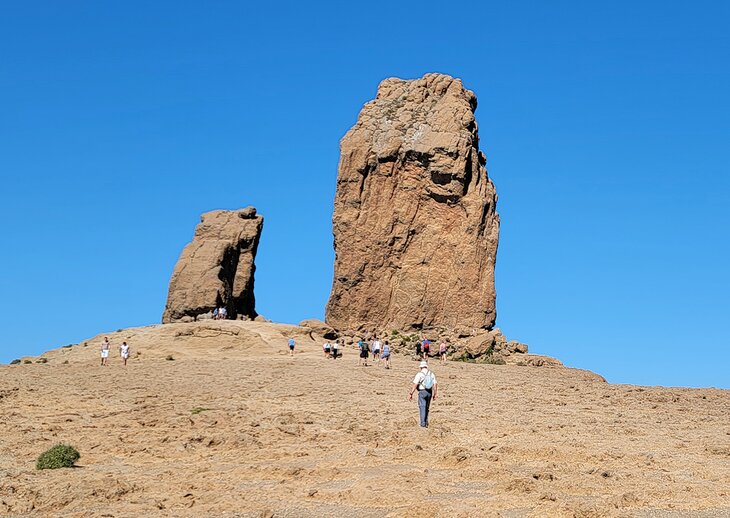
The symbol of Gran Canaria, this 220-foot pillar of stone is one of the world's largest natural crags.
The views from the base of the rock are stupendous. You are standing close to the center of the island, which stretches before you in all directions, layer after layer of ragged volcanic peaks. If the weather is clear, you can see the cone of Mount Tiede on Tenerife, the highest peak in Spain.
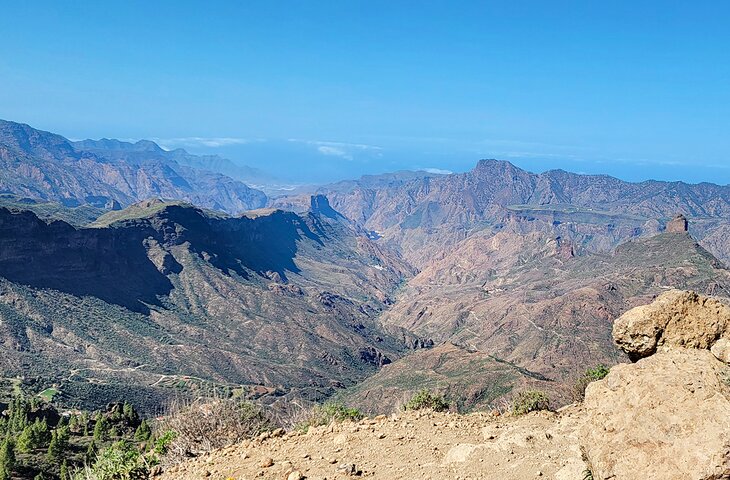
Be prepared for both wind and sun, and wear sturdy shoes; the trail is rocky and no place for sandals. The trail is only three kilometers long but is more challenging than many sightseers expect. It's uphill all the way, with no level sections, and some of it is very uneven and over rocks. Be prepared for a bit of a workout, especially on some of the steeper sections. Count on at least 1.5 hours of total hiking time there and back.
On weekends and holidays, it's a good idea to arrive early in the morning because parking is limited at la Goleta.
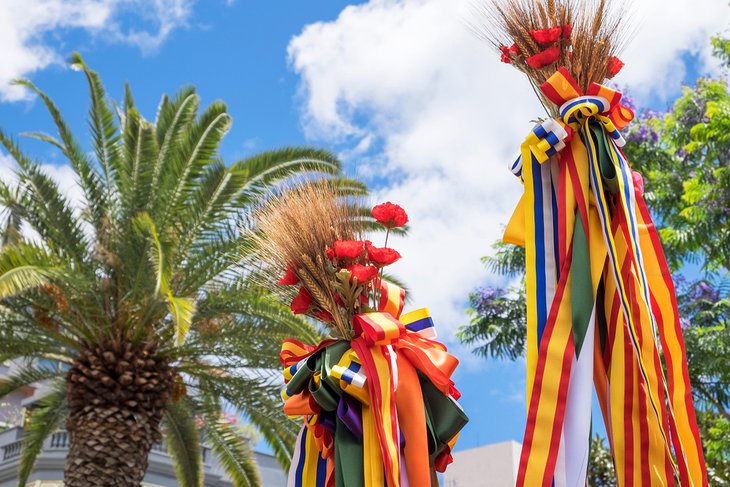
Each year, Tenerife's capital city goes wild for three days of carnival parades, parties, concerts, and general merrymaking. This is normally in February, before the start of Lent.
Carnival actually lasts for three weeks , but the first two are less colorful, given mostly to selecting the various queens who will participate in the grand finale, which is on the last three days. That's the time to be there, to witness the parades and join the open-air parties that continue day and night.
As many as 400,000 people fill the streets, music is everywhere, and the costumes are lavish confections of feathers and glitter that often overshadow the beautiful girls wearing them. The parade floats are even more elaborate and imaginative than the costumes.
The Carnival of Santa Cruz is second only to Rio de Janeiro's in popularity and worldwide recognition. Some tips: reserve lodgings early (a year in advance is not too soon), don't even think of bringing a car into Santa Cruz, arrive early to stake out a good viewing point for the parades, and wear a costume – however simple – so you can take part in the fun.
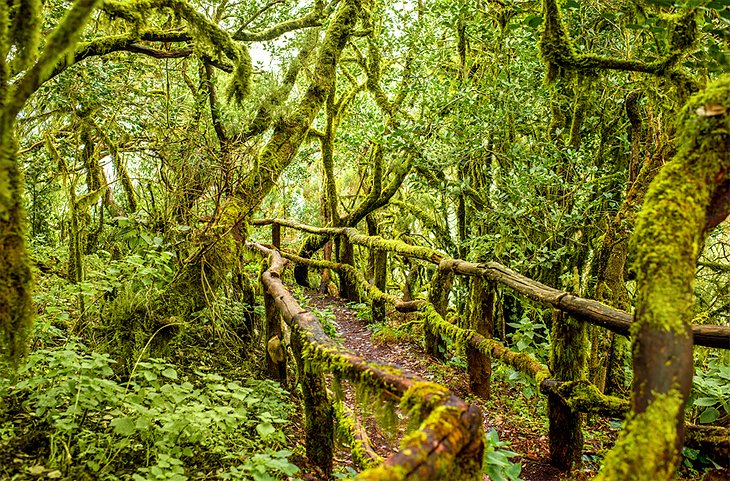
La Gomera rises so steeply from the Atlantic that it is impractical to build a road around its coast. Crowning the top half of the island is the world's largest pre-glacial forest, protected as Garajonay National Park, and a UNESCO World Heritage Site . Seventy percent of the 9,325-acre park is covered by a dense laurel forest, similar to those covering Europe in the Tertiary Period.
These beautiful, green forests are home to many plants and animals that are indigenous only to this island, and the island's streams and springs are fed by clouds and mists that hover on the peaks in the park. The terrain is steep, and paths through the misty moss-draped forests open to breathtaking, if often vertigo-inspiring, views. The island capital of San Sebastián was where Christopher Columbus outfitted his ships before crossing the Atlantic in 1492.
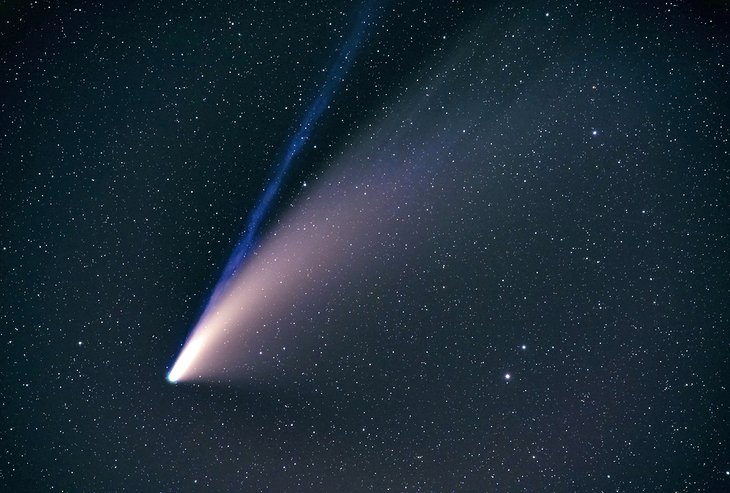
While the volcano and its giant caldera are the island's top tourist attraction during the day, Tiede National Park offers another appeal after dark. It has been certified as a " Starlight Destination " by the Starlight Foundation, for the exceptional quality of stargazing.
This is due to a low level of light pollution, the trade winds, and its location close to the equator, which allows you to see all the constellations of the Northern Hemisphere and most of the Southern Hemisphere's. Of the 88 officially recognized constellations, 83 are seen from Tiede. This makes stargazing one of the favorite things to do at night on Tenerife.
Some of the most spectacular stellar events are meteor showers , the best known of which are the Perseids in August and the Quadrantids in January, although smaller ones occur throughout the year. A good way to see the stars, planets, and other celestial phenomena is with a Night Sky Star Safari Teide National Park Tenerife tour , where you can stargaze through a professional telescope with the help of an expert guide to explain the wonders of the night sky.
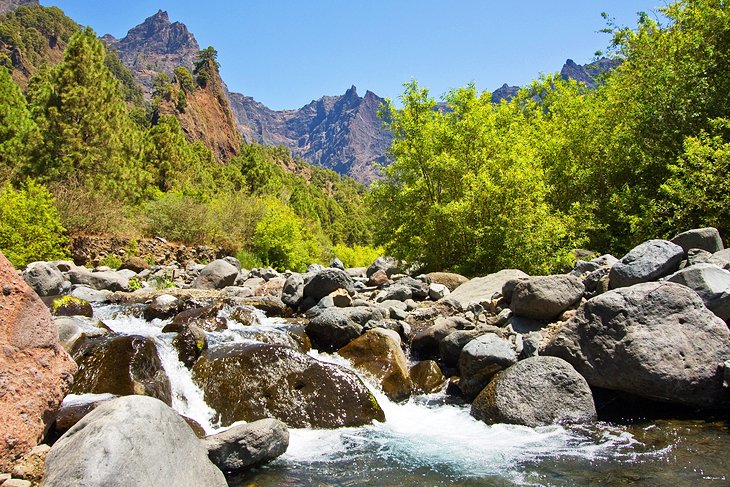
Known as the Isla Bonita (Beautiful Island), La Palma is the greenest of the Canary Islands. Designated a UNESCO Biosphere Reserve , La Palma's landscape varies from pristine forests to sheer cliffs and black-sand beaches. Among its many protected environments is the Caldera de Taburiente National Park, where volcanic peaks rise to 2,400 meters, and lava flows descend to the sea.
For those in search of idyllic surroundings, the park has wooded areas with streams and waterfalls. Along the rocky coastline, picturesque little bays are hidden away in between steep hillsides.
Although part of Spain, the Canary Islands are much closer to Africa than they are to Europe. Fuerteventura is only 160 kilometers from the northwest coast of Morocco, close enough for its beaches to be made of blowing Sahara sand.
Spanish is the local language, but tourists may be surprised to find a distinctly Canarian character and culture that is quite different from mainland Spain.
In other words, don't expect bullfights or flamenco. Expect to find plenty of other tourists, especially on the islands of Tenerife and Gran Canaria, most of whom have come for the fabled beaches.
The Canaries have long been popular with British and northern European sunseekers, so you'll find English spoken in most restaurants, hotels, and shops. You'll also find a surprising variety of things to do on these seven islands, from water sports and hiking trails to modern art and sightseeing in charming colonial towns.
Although each island is different, they have in common their volcanic origins, which have led to some of their most distinctive natural attractions. The four largest islands, Tenerife, Lanzarote, Fuerteventura, and Gran Canaria, all have fascinating volcanic features, two of which are national parks. The islands have three UNESCO World Heritage sites .
There's no wrong season to visit the islands, as their placement where the tropical climatic zone joins the subtropical zone gives them an almost ideal climate of perpetual springtime, with average temperatures varying only 14 degrees throughout the year.
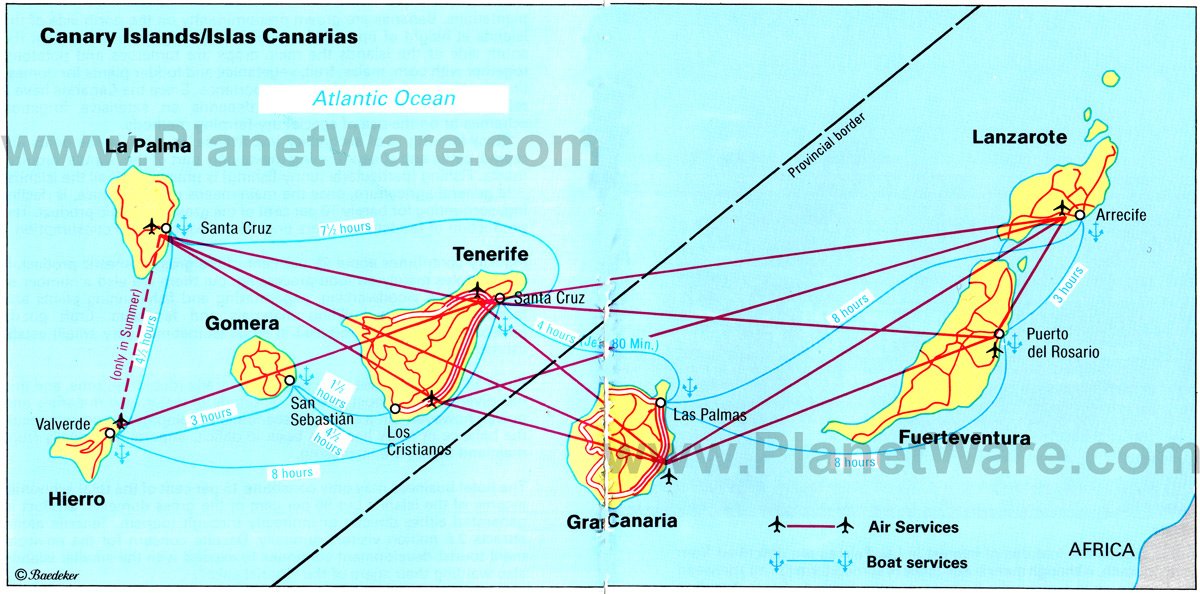
More on Spain

- Mar 23, 2018
- 37 min read
Prehistory and History of the Canary Islands
Updated: Apr 20

The Canary Islands are an enchanting archipelago of seven islands and six islets, which form the bioregion of Macaronesia alongside the Azores, Madeira, Savage Islands and Cape Verde, and are the largest archipelago of this region. Unlike the other islands of Macaronesia, the Canaries have been inhabited since Classical Antiquity, when they were known as the semi-legendary Insulae Fortunatae in Latin and Μακάρων Νῆσοι ( Makárōn Nêsoi ) in Greek—i.e. the Fortunate Isles or the Isles of the Blest—variously treated as a simple geographical location and as a winterless earthly paradise inhabited by the heroes of Greek mythology.
It was said the Pillars of Hercules bore the warning Non plus ultra («no further») or Non terrae plus ultra («No lands further beyond»), serving as a warning to sailors and navigators, urging them not to venture further. Immersed in Greco-Roman mythology, the Fortunate Isles were known as part of Hades, beyond the Pillars and the boundaries of human settlements known to Greeks as οἰκουμένη (oikouménē, «inhabited [land]»). Legend has it the islands were reserved for those who had chosen to be reincarnated three times, and their souls deemed as exceptionally pure to gain entrance to the Elysian Fields on each occasion.
Note: The following article is a highly summarized version of the original. For more comprehensive articles and quotations from ancient sources in their original language (such as Ancient Greek, Latin, Medieval Arabic, Early Modern Castilian) accompanied by novel and unprecedented transcriptions and translations with commentaries, please visit the main articles corresponding to each section. You can find links to these articles below the heading of each respective section.
Table of contents
Identification of the islands mentioned by ancient authors
Roman presence on the islands, early and high middle ages.
Saint Brendan's legendary journey to the Promised Land for Saints
Possible Muslim expeditions
Berber kingdoms prior to the castilian conquest, gran canaria, pre-conquest exploration, genoese contact, cerda lordship of fortuna, majorcan-aragonese contact, portuguese contact, castilian contact, castilian conquest of the canary islands (1402–1496), aristocratic conquest or conquista señorial (1402–1476), norman aristocratic conquest or conquista señorial betancuriana o normanda.
Castilian aristocratic conquest o conquista señorial castellana
Royal conquest or conquita realenga(1478–1496)
Conquest of Gran Canaria (1478–1483)
Conquest of la palma (1492–1493), conquest of tenerife (1494–1496), role in the conquest of america.
The Canary Islands may have been visited by Carthaginian ships. In 435 BC, Carthaginians, led by Hanno the Navigator, embarked on a voyage. They sailed through the Pillars of Hercules at the Strait of Gibraltar and explored the western coast of Africa. The expedition established cities and reached as far south as southern Morocco, and possibly even Senegal or Gabon. The narrative mentions a tall fiery mountain, which some identify as Mount Cameroon or the Teide volcano. The crew encountered a burning country emitting fragrant scents and witnessed torrents of fire flowing into the sea. The extreme heat prevented them from landing, and they sailed swiftly, filled with fear. After four days, they saw the land covered in flames at night, with one particularly tall fire that seemed to touch the stars. This towering fire was referred to as the "Chariot of the Gods." They continued sailing alongside the fiery torrents for three more days until they reached a bay called the Horn of the South.
Arrian, in his work Indica, mentions Hanno's voyage and includes a reference to a volcano. Hanno, a Libyan explorer, departed from Carthage and sailed beyond the Pillars of Heracles (Strait of Gibraltar) into the Outer Sea. He continued eastward for thirty-five days before turning south. However, he encountered various challenges, including a scarcity of water, scorching heat, and streams of lava flowing into the sea. Arrian's account highlights the difficulties faced by Hanno during his voyage.
Pliny the Elder, in his work Historia Naturalis, quotes Statius Sebosus (f. ca. 100 BCE) regarding the Fortunate Islands (Isles of Bliss) and their location. According to Statius Sebosus, there are only two islands that make up the Fortunate Islands: Invallis and Planasia. Invallis is believed to correspond to Tenerife, while Planasia is likely Gran Canaria. These two islands were considered the Fortunate Islands because the eastern islands were arid, and the three westernmost islands were still undiscovered at the time.
Statius Sebosus provides distances between these islands. He states that Junonia, located 750 miles away from Gades (Cádiz), is one of the Fortunate Islands. To the west of Junonia, at the same distance, are Pluvialia and Capraria. Pluvialia only has access to rainwater as a freshwater source. Additionally, at a distance of 250 miles from these islands, opposite the left side of Mauritania and aligned with the eighth hour of the sun's direction, lie the Fortunate Islands. Invallis, one of the islands, is characterized by its undulating surface, while Planasia is named for its distinctive appearance. According to Sebosus, Invallis has a circumference of 300 miles, and trees on the island can grow as tall as 114 feet.
However, the discovery of the Canary Islands for the western world is credited to King Juba II (f. ca. 48 BCE–23 CE), the Berber king of Numidia. He ruled from 29 to 27 BC and later became the vassal king of Mauretania under Roman control from 25 BC to 23 AD. Juba II established a close alliance with Rome and was known for his loyalty to the empire. According to Pliny the Elder, Juba II dispatched an expedition to the Canary Islands. The explorers did not encounter any native inhabitants but found several buildings as evidence of past habitation. Juba II named the islands after the ferocious dogs he encountered there, which may have been seals or the dog-like creatures worshipped by the indigenous people.
Pliny states that the Isles of Bliss, as Juba II called them, are located in a southwestern direction, approximately 625 miles away from the Purple Islands. The first island they reached was called Ombrios, featuring a pool surrounded by mountains and trees resembling giant fennel. The second island, Junonia, had a small temple made from a single stone. Nearby, there was a smaller island with the same name, followed by Capraria, known for its large lizards. The islands of Ninguaria and Canaria were also visible, with Ninguaria covered in perpetual snow and clouds and Canaria named due to its abundance of huge dogs. Juba II brought two of these dogs back with him. The islands were described as having an ample supply of fruit, various bird species, palm groves with dates, coniferous trees, honey, papyrus growing in rivers, and sheatfish. Pliny also mentions the islands being plagued by the carcasses of monstrous creatures washed ashore by the sea. This account by Pliny the Elder provides insights into Juba II's exploration of the Canary Islands and provides descriptions of the islands' landscapes, flora, fauna, and natural resources.
Sallust's narrative provides four surviving fragments about the Fortunate Isles. The narrative recounts that according to Sallust, two neighboring islands, located ten thousand stades from Gades (Cádiz), were known to produce food for humans without any human intervention, and it says that philosophers believe that Elysium, the mythical place of bliss, corresponds to the Fortunate Isles mentioned by Sallust, which gained fame through the songs of Homer. According to the narrative, Sallust mentions that there were plans of venturing into distant parts of the Ocean, presumably in search of the Fortunate Isles, and that the desire to explore the unknown seems to have driven this pursuit, as humans are naturally inclined to seek unfamiliar experiences.
The Greek geographer Strabo makes mention of the Isles of the Blest and their proximity to Maurusia and Iberia (known as Mauretania and Hispania in Roman by the Romans). He describes these islands as being situated on the far western side of Maurusia, along the coast that runs parallel to Spain. Strabo suggests that he considered these regions, due to their proximity to the islands, to be blessed as well. He further notes that the islands are located near the promontories of Maurusia, which are opposite the city of Gadir (Cádiz). Strabo's accounts shed light on the geographical understanding and perception of the Isles of the Blest in relation to Maurusia and Iberia during his time.
Pomponius Mela, an early Roman geographer, provides a description of the Fortunate Islands (Isles of Bliss) that sheds light on the reasons behind their name. Born in Tingentera (modern Algeciras, Spain), Mela describes the Fortunate Isles as having a sandy landscape and an abundance of spontaneously generated plants. These islands are known for their continuous production of various fruits, creating an environment where inhabitants lack nothing and enjoy greater productivity than other places. One of the islands gains particular fame due to the uniqueness of its two springs. Drinking from one of these springs is said to cause uncontrollable laughter, while the other spring serves as a cure for those affected by the laughter-inducing spring. Mela's description emphasizes the fertile and prosperous nature of the Fortunate Islands, highlighting the reasons behind their reputation as a place of abundance and happiness.
Plutarch's writings provide insights into the Fortunate Isles, also known as the Isles of the Blessed, located in the Atlantic Ocean. In his work Vita Sertorii, Plutarch recounts an encounter between Sertorius, a Roman general, and sailors who had recently visited these islands. The Fortunate Isles are described as a few days' sail from Hispania (modern-day Spain), known for their idyllic qualities and natural paradise characterized by mild weather and abundant fertility. Plutarch equates these islands with the mythical Elysian Fields, a place of happiness and bliss. The climate on the islands is pleasant, with moderate seasonal changes and no extreme weather. The winds from the Roman side dissipate before reaching the islands, while the South and West winds bring occasional showers and cool, moist breezes that nourish the land. Plutarch mentions that even barbarians believe these islands to be the Elysian Fields. Sertorius, upon hearing about the islands, develops a strong desire to retire there and escape from perpetual wars and tyranny. However, he ultimately does not act on this desire and returns to Hispania at the request of the Lusitanians, who sought him as their leader.
The Greek geographer Claudius Ptolemy lists the Fortunate Islands, which he says to be six. The Romanized forms of the emended names for the islands are given below:
The islands near Libya lie in the Western Ocean […] and these are the Islands of the Blessed Inaccessa Island Pluitana Island Capraria Island Nivaria Island Juno’s Island Canaria Island — Claudius Ptolemy, Geographia, Book IV, Chapter 6 - ca. 150 CE
Ptolemy used these islands as the reference for the measurement of geographical longitude and they continued to play the role of defining the prime meridian through the Middle Ages.
Flavius Philostratus provides information about the location of the Fortunate Isles. According to him, the Islands of the Blessed, synonymous with the Fortunate Isles, are believed to be situated near the boundaries of Libya, where it extends towards an uninhabited promontory.
Gaius Iulius Solinus presents a differing opinion on the Fortunate Islands, acknowledging their celebrated name while expressing skepticism about their actual nature. Solinus recognizes the existence of three Fortunate Islands, but believes that their fame surpasses their reality. He describes the first island, Embrion, as devoid of buildings, with reeds growing to tree-like proportions. Squeezing the black reeds yields a bitter liquid, while the white reeds release drinkable water. Solinus mentions another island called Iunonia, featuring a small temple with a low pointed roof. The neighboring third island shares the same name and is barren. The fourth island, Capraria, is densely populated with large lizards. Nivaria, the fifth island, is characterized by thick, cloudy air, resulting in constant snowfall. Canaria, the sixth island, is known for its distinctive dogs. Traces of buildings remain, and the island is abundant with birds, fruit-bearing forests, palm groves, pine nuts, honey, and rivers teeming with sheatfish. Solinus also notes the belief that the sea surrounding Canaria ejects sea monsters onto its shores, causing a foul odor when the decomposing monsters taint the surroundings. Overall, Solinus concludes that the nature of the islands does not fully align with their renowned name.
The names the ancient authors mention have traditionally been assigned to all seven large islands of the Canaries. However, Ptolemy and Juba only mention six islands, suggesting that one of the large islands is not mentioned or that multiple large islands are missing. It is possible that the islets in the eastern part of the archipelago should be considered as well.
The winterless climate and ideal conditions for fruit-bearing trees that the ancient authors spoke of gave the Fortunate Islands their name. This feature applies to the central and western islands, but not to the eastern islands of Fuerteventura and Lanzarote, whose low height makes them unable to reach the moisture-rich trade winds. Apparently, this was considered by authors such as Sebosus, Sallust and Plutarch, who did not include the eastern islands in the Fortunate Islands.
It is not entirely certain whether the Romans established any permanent centre on the islands. However, in 1964, Roman amphorae were discovered off the coast of Lanzarote, proving that at least trade existed with the Romans. In the 1990s, at the archaeological site of El Bebedero near Teguise, also in Lanzarote, numerous fragments of Roman ceramics, glass and metal dating to the 1st-4th century CE were found. Retail material testing proved that those could come from Campania in Italy, or the Roman provinces of Hispania Baetica and Africa. Lastly, in 2012, a fragment of a Roman amphora was found near La Concha beach on the tiny Islote de Lobos, located between Lanzarote and Fuerteventura. Since then, houses, ceramics, tools and other everyday artifacts have been found on the islet. Moreover, remains of purple dye have been found at the beach of La Calera, as well as a large amount of fractured shells of Stramonita haemastoma (> 95%) and Hexaplex duplex —both species of the family Muricidae that produce a purple dye—with anthropic fracture patterns. The Islote de Lobos, therefore, seemed to have housed a Roman factory dedicated to the extraction of the Gaetulian purple dye found in the mucus of these molluscs, similar to the one on the Insulae Purpurariae or "Purple Islands" established by Juba II, probably to be identified with Mogador, near Essaouira on the Moroccan coast.
Extracting this dye involved tens of thousands of snails and substantial labour from the gatherers, specifically called mūrĭlĕgŭlī in Latin (from murex-legulus, literally "rock snail gatherer"), hence purple dye was highly valued. According to the 4th century BCE historian Theopompus "purple dye fetched its weight in silver at Colophon". Purple-dyed textiles became status symbols: the most senior Roman magistrates wore a toga praetexta , a white toga edged in purple; the even more sumptuous toga picta , a solid purple toga with gold thread edging, was worn by generals celebrating a Roman triumph. By the 4th century CE, however, it was reserved exclusively for the emperor—with citizens facing death penalty if they wore any shade of the colour.
For a thousand years, between the 4th and 14th centuries, the islands seem to disappear from the historical record and fall into obscurity. Following the fall of the Western Roman Empire in 476 CE, the ties between Mediterranean civilizations and the Canary Islands weakened but were perhaps not completely severed. The only documentary evidence of this time—though unreliable—is the journey of Saint Brendan the Navigator (f. 484–c. 577 CE) and accounts from Muslim geographers from the 10th and 12th centuries that mention islands in the Sea of Gloom, which might correspond to some of the Canary Islands.
Saint Brendan’s legendary journey to the Promised Land for Saints
Saint Brendan is primarily known for his legendary journey to a blessed island. Brendan's journey was popular throughout Christian Europe for many centuries. The voyage is believed to have taken place between 512 and 530 CE, with the earliest recorded version of the narrative dating to around 900 CE. Over 140 manuscripts of the narrative exist with numerous translations.
The mythical island of Saint Brendan, also known as Isla de San Borondón, was depicted on medieval and renaissance maps. Its geographical location has been subject to various interpretations, ranging from being placed southwest of Ireland to being west of the Canary Islands or even further out beyond the Azores. The legend gained widespread recognition in Europe during the Middle Ages, and maps from Christopher Columbus' era often featured an island labeled as Saint Brendan's Isle in the Atlantic Ocean. Several naval expeditions were even undertaken in search of the promised land of Saint Brendan. However, belief in the physical existence of the island diminished by the 19th century.
The journey of Brendan begins when he meets Saint Barinthus, who describes the "Promised Land for Saints." Inspired by this description, Brendan gathers a group of monks and sets off on a voyage. They encounter various islands, including one where a companion dies, the Island of Sheep, and a giant fish named Jasconius. They also visit the Island of Birds, the Island of Ailbe with silent monks, and the Island of Strong Men. After seven years of travel, they finally reach the blessed island, are briefly allowed to enter, and then return to Ireland passing through another fabled island.
The written account of Brendan's voyage has been seen as a religious allegory, although there has been substantial debate regarding the extent to which these legends are based on historical events. The legend mentions islands which potentially correspond to the Canary Islands. Juan de Abréu Galindo suggests that the Island of Saint Brendan is the eighth of the Canary Islands and equates it with Ptolemy's Inaccessa Island.
During the High Middle Ages, Arabic sources hinted at the existence of the Canaries, referring to certain Atlantic islands that were speculated to be the Canaries. Although the ancient Canarians were possibly no longer isolated, they maintained cultural isolation and preserved their distinct way of life.
Arab scholars al-Masʿūdī from the 10th century and al-ʾIdrīsī from 12th century learned about the Canary Islands through their study of Ptolemy's work, giving them their own name in Arabic. They name two islands in Arabic which might correspond to two of the Canary Islands, along with enormous creatures and mysterious phenomena. Also recounted are the risks and curiosities of the Atlantic Ocean, with some adventurers returning safely and others perishing in their attempts. Among the successful endeavours was maritime expedition by a family of Andalusi seafarers, who discovered previously unknown land, and encountered an inhabited island with red-skinned people during their journey through the Atlantic, who might have been the ancient Canarians, and by whom they were taken prisoners. They were eventually welcomed back by the Berber people in present-day Morocco.

As the Berbers who arrived in the Canary Islands adapted to the diverse habitats of each island, they gradually became isolated on their respective lands. Over time, they developed into seven distinct cultures, each unique to its own island. These cultures possessed their own distinct religious beliefs, as well as social, political, and economic structures.
Their adaptation to the islands and their habitats can be inferred from their rock art, with later rock art being simpler and with less variations than the more ancient ones. Possibly, their initial lack of knowledge of the island's environments and its limited resources compelled them to perform shamanic practices that were meant to promote rainfall or fertility, which were no longer essential as they adapted to their new environments.
[The territorial division of the Canary Islands at the time of the Castilian conquest with the reconstructed names of the islands in Berber.][nombres bereberes de las Islas Canarias, nombres guanches de las Islas Canarias, Berber names of the Canary Islands, Guanche names of the Canary Islands]
Castilianised Berber: Tamarán
Insular Berber: * Tamāran

Tamarán before the unification under Atidamana and Gumidafe.
Tamarán after Taghoter Semidán's division of the island between his two sons.
Before the arrival of the Norman conquerors in 1402, the island was divided into numerous independent territories ruled by tribal chiefs. The order between the cantons, that tended to wage war on eachother for pasture, was maintained by a woman named Atidamana, who was respected by the population and assumed the role of judge in the conflicts and high priestess. However, some chiefs did not want to obey Atidamana's decisions, and argued that they shouldn't be subdued by a woman. Therefore, Atidamana married a warrior chief from Gáldar named Gumidafe, and together waged war on the rest of the chiefs until finally achieving complete control over the island and unifying the government, becoming guanartemes (kings).
Atidamana's and Gumidafe's grandson Taghoter Semidán divided the island in 1440, or earlier, between his two sons, and two guanartemates (kingdoms) were founded. Guanache Semidán inherited Gáldar and Bentanguaire Semidán inherited Telde. The frontier lied along the Barranco Guiniguada and the Barranco de Mogán or Barranco de Arquineguín. The sábor (council) however would remain in Gáldar and ended up triggering confrontations. Before the arrival of Castilian conquerors in 1478, the island is virtually unified once again due to the death of the two kings, and Tenesor Semidán is named king, who defended Bentejuí's right to rule in Telde.
Castilianised Berber: Achineche
Insular Berber: * Ašenšen

Tinerfe the Great, also called Betzenuria, was the last mencey (king) of Achineche that ruled over the entire island. He lived in Adeje, like all his predecessors, in the late 14th century, approximately hundred years before the conquest of 1494 by Castile. Upon his death, his sons divided the islands into nine menceyates. Some historians believe the name of the island of Tenerife could derive from his name. Others state that the first author to call him Tinerfe, the poet Antonio de Viana, invented the name in 1604, and that his real name was Betzenuriia.
Muchos años estuvo esta isla y gente della sujeta a un solo rey, que era el de Adeje, cuyo nombre se perdió de la memoria, y como llegase a la vejez, a quien todo se le atreve, cada cual de sus hijos, que eran nueve, se levantó con su pedazo de tierra, haciendo término y reino por sí. Translation: For many years, the island and its people were subject to one king, who was from Adeje, whose name is lost from memory, and when he became of old age, each of his sons, that were nine, rose with their own piece of land, making for themselves a kingdom.— Friar Alonso de Espinosa, Historia de Nuestra Señora de Candelaria
En esta isla de Tanerife hubo un señor que la mandaba y á quien obedecian que se llamaba Betzenuriia [...] el qual tenia nueve hijos, y muerto el padre cada uno se alzó con la parte que pudo y entre si se conformaron y la repartieron, y de un reyno que era se dividió en nueve. El mayor de todos estos hermanos se llamaba Imobac, cuyo señorio y reyno se decia Taoro [...] Acaymo su hermano, se instituló rey de Aguimar; Atquaxona, rey de Abona; Atbitocarpe, rey de Adeje. Los demás nombres de estos hermanos se han perdido en la memoria de ellos." Translation: On this island of Tenerife there was a lord that ruled it and who was obeyed, who was called Betzenuriia [...] who had nine sons. Upon their father's death, each one rose up with the part that they could and divided it; and, from one kingdom, nine were formed. The greatest of these brothers was called Imobat, whose kingdom was called Taoro [...] Acaymo, his brother, made himself king of Aguimar; Atquaxona, king of Abona; Atbitocarpe, king of Adeje. The names of the remaining brothers have been lost to their memory.— Juan de Abreu Galindo, Historia de la Conquista de las Siete Islas de Gran Canaria, Libro III, Capítulo XI – 1602
All the classical authors agree that there was one absolute king with residence in Adeje, upon whose death the island was divided between his nine sons: Acaymo, Atbitocazpe, Atguaxoña, Benecharo, Betzenuhya, Caconaimo, Chincanairo, Rumen y Tegueste. According to the historian and physician Juan Bethencourt Alfonso, Tinerfe was son of mencey Sunta, succeeding him as king of the island upon his death. However, his uncles attempted to overthrow him. Bethencourt states that Tinerfe "reformed the tactic of his father and was the founder of strategy, and Tenerife achieved great prosperity under his prolonged reign."
Castilianised Berber: Benahoare
Insular Berber: * Wen-Ahūwwār

Friar Juan de Abréu Galindo provides an account of the bellicose history of Benahoare before the Castilian conquest. Aktanasut, or as he was known by the Castilians, Tanausú, ruled the canton of Aceró within the Caldera de Taburiente. According to this historian, Atogmatoma, the ruler of Tijarafe, had a conflict with Tanausú. Atogmatoma entered the Caldera with 200 men through Adamancasis (now known as El Riachuelo, near La Cumbrecita), but Tanausú and his men managed to repel the attack. With the help of his relatives Bediesta and Temiaba, lords of Tegalguen and Tagaragre, Atogmatoma later entered the Caldera. Tanausú then takes refuge in Mount Bejenado and sought aid from his cousins Ehenauca, Mayantigo, Azuquahe, Juguiro and Garehagua. Once all the warriors were rallied, Tanausú and his forces descended to the plain of Adirane, where they defeated Atogmatoma. Atogmatoma was spared, and his daughter Tinabuna was married to Aganeye, one of Tanausú's allies. The conflict between Tanausú and Atogmatoma eventually led to a peace agreement, and they celebrated the wedding, remaining as friends.
Benahoare was divided into 12 cantons at the time of the arrival of Castilian conquerors. As opposed to Achineche or Tamarán, it had no territorial unit above it. In fact, this system was not permanent and these units could be further divided into smaller ones, like the Gazmira band which is mentioned in the 16th century. The last canton to be conquered by Castile Aceró, located in the Caldera de Taburiente. The name is believed to mean "strong place", and indeed the Caldera lends itself to a strong defense, measuring 10 km across and possessing steep walls towering up to 2000 m over the caldera floor.
The Canary Islands saw an increase in visits during the late 13th century due to various factors.
Firstly, it was propelled by the economic growth of European states like the Republic of Genoa, the Crown of Aragon, the Kingdom of Castile, and the Kingdom of Portugal. These nations were already involved in maritime trade along the Moroccan coast, and their expansionist ambitions naturally turned towards the Canary Islands.
Secondly, advancements in navigation techniques, including the use of the compass, astrolabe, stern rudder, and cog-caravel, played a pivotal role. These innovations, coupled with the development of cartography, allowed for more accurate and detailed maps. Notably, Angelino Dulcert of Majorca created a portulan map in 1339 that depicted some of the Canary Islands. It was around this time that the islands were effectively rediscovered by the Genoese sailor Lanzarotto Malocello. In 1341, just two years later, the first expedition to visit all the islands of the archipelago was conducted under the command of another Genoese seaman and explorer, Niccoloso da Recco, on behalf of Portuguese king Afonso IV.
Lastly, both ideological and political motives played a significant role. The Southern European monarchies were in an expansionist phase, with the Iberian monarchies driven by the Reconquista (the reconquest) of Muslim-controlled regions in southern Spain, known as al-ʾAndalus (Arabic: ٱلْأَنْدَلُس), with kings such as Alfonso XI of Castile claiming that, by the ancient Visigothic dioceses and Reconquista treaties, the islands fell within the Castilian jurisdiction and "sphere of conquest". The territorial expansion served to strengthen royal power and was infused with a crusader and missionary spirit.
These combined factors led to an increased interest in and exploration of the Canary Islands during this period, setting the stage for further European presence and, ultimately, the Castilian conquest of the archipelago.
In the 14th century, the "rediscovery" of the islands by Europeans took place, with numerous visits by Genoese, Majorcan, Portuguese and Castilian, competing for control of the Canaries. This process falls within the so-called European expansion across the Atlantic, which, in its initial stage, had as its main motivation the most direct possible access to the gold of central Africa.
The first European to visit the Canary Islands since Antiquity was a Genoese captain by the name of Lancelotto Malocello embarked on a voyage believed to have taken place around 1318-1325, though traditionally dated as 1312. The exact motivations behind Malocello's journey remain somewhat unclear, with some speculating that he was in search of the Vivaldi brothers who had disappeared off the coast of Morocco near Cape Non in 1291. Upon reaching the Canary Islands, Malocello made landfall, possibly due to a shipwreck, on the island of Lanzarote and decided to remain there for nearly two decades. During his time on the island, it is believed that Malocello may have attempted to establish himself as a ruler among the indigenous people, but eventually he was expelled by a revolt led by Zonzamas.
In 1339, a portolan map created by Angelino Dulcert of Majorca depicted the island of Lanzarote, referred to as Insula de Lanzarotus Marocelus and marked with a Genoese shield. This map also showcased the neighboring islands of Forte Vetura (Fuerteventura) and Vegi Mari (Islote de Lobos). While earlier maps had depicted fantastical depictions of the "Fortunate Islands" based on references in Pliny's writings, Dulcert's map was the first to present a more accurate representation of the actual Canary Islands. It should be noted, however, that Dulcert included some fictional islands on the map, such as Saint Brendan's Island (Spanish: Isla de San Borondón ), as well as three islands named Primaria, Capraria, and Canaria, inspired by the names provided by the ancient authors.
In 1341, a significant expedition sponsored by King Afonso IV of Portugal set sail from Lisbon. Commanded by Florentine captain Angiolino del Tegghia de Corbizzi and Genoese captain Nicoloso da Recco, the expedition consisted of a diverse crew comprising Italians, Portuguese, and Castilians. Over the course of five months, the expedition meticulously surveyed the archipelago, mapping thirteen islands, including seven major ones and six minor ones. They also studied the indigenous inhabitants and brought back four natives to Lisbon. This expedition served as the foundation for later Portuguese claims of priority and influence over the Canary Islands.
The islands were under the watchful eye of the kings of Castile, with Pope Clement VI appointing the Castilian-French noble Infante Luis de la Cerda, the Count of Clermont, Admiral of France and expatriate royal prince of the Crown of Castile, as the prince of the Principality of Fortune in 1355, even though he never actually set foot on the islands.
The exploration of the Canaries in the 14th century sparked rapid European interest, especially after the mapping expedition of 1341. The accounts of the aboriginals captured the attention of European merchants, who saw the potential for lucrative slave-raiding opportunities. In 1342, multiple expeditions were organized from Majorca, with Francesc Duvalers and Domenech Gual leading separate ventures commissioned by private merchant consortia under the authority of Roger de Robenach, the representative of James III of Majorca. There may have been as many as four or five expeditions commissioned from Majorca that year, although the outcomes of these endeavors remain uncertain.
The Catholic Church was also intrigued by the news coming from the Canaries. In 1344, the Castilian-French nobleman Infante Luis de la Cerda, the Count of Clermont, Admiral of France and expatriate royal prince of the Crown of Castile, who served as a French ambassador to the papal court in Avignon, presented a proposal to Pope Clement VI. His plan envisioned the conquest of the islands and the conversion of the native Canarians to Christianity. In November 1344, Pope Clement VI issued the bull Tuae devotionis sinceritas , granting perpetual possession of the Canary Islands to Luis de la Cerda and conferring upon him the title of "Prince of Fortuna." The pope further declared the projected conquest and conversion as a crusade, granting indulgences to its participants. Papal letters were sent to the monarchs of the Iberian Peninsula, urging them to provide material support to Cerda's expedition. King Afonso IV of Portugal lodged a protest, claiming prior discovery rights, but ultimately accepted the pope's authority. Alfonso XI of Castile also voiced objections, asserting that the islands fell within Castilian jurisdiction based on ancient Visigothic dioceses and prior treaties of reconquest. However, he recognized Cerda's title.
Despite the formal recognition of Cerda's title, the Iberian monarchs hindered the organization of his expedition, causing delays. Consequently, no expedition to the Canary Islands materialized before the death of Luis de la Cerda on July 5, 1348. According to the terms of the 1344 contract, the lordship of Fortuna was set to expire after five years without an expedition, although Cerda's heirs, the Counts of Medinacelli, would later revive their claim.
The Majorcans established a mission on the islands (Bishopric of Telde), which remained active from 1350 to 1400.
After the demise of Cerda, the previous actors resumed their ventures, but historical records for the following generation are scarce. However, there are mentions of three additional expeditions by Majorcans, who were now under Aragonese rule since 1344. The renowned expedition of Jaume Ferrer in 1346 aimed to reach the "River of Gold" (Senegal) on the African coast but may have also touched the Canaries en route. In 1352, Arnau Roger led an expedition to Gran Canaria, and in 1366, Joan Mora undertook a royal-sponsored patrol expedition. Undoubtedly, there were numerous unrecorded expeditions, not only by Majorcans but also by merchants from Seville and Lisbon. These expeditions primarily had commercial motives, often involving the capture of native islanders for the European slave trade. However, there was also some peaceful trade with the locals, particularly for orchil and dragon's blood, which were highly valued as dyes in the European textile industry.
Although the Cerda project failed, the Pope remained committed to converting the natives. In 1351, Pope Clement VI endorsed an expedition by Majorcan captains Joan Doria and Jaume Segarra. The objective was to bring Franciscan missionaries, along with twelve converted Canarian natives who had been seized by previous Majorcan expeditions, to the islands. It is uncertain if this expedition ever took place, but it is likely that it was incorporated into Arnau Roger's expedition in 1352. According to apocryphal legend, the Majorcan missionaries successfully established an evangelizing center in Telde (on Gran Canaria) until they were massacred by the natives in 1354.
To support the missionaries in Telde, the Pope established the 'Diocese of Fortuna' in 1351, although this appears to have been a nominal appointment. Papal interest in the Canaries diminished after the death of Pope Clement VI in late 1352. The next generation provides very little information about the Canary Islands. It is probable that the Majorcans and Aragonese maintained their commercial interests, primarily focused on Gran Canaria, but there are few records.
The next mention of the Canary Islands occurs in 1366 when King Peter IV of Aragon commissioned Captain Joan Mora to patrol the islands, assert Aragonese sovereignty, and deter interlopers. Though there was still no plan for conquest, the interest in establishing missionary centers seemed to revive. In July 1369, Pope Urban V issued a bull establishing the Diocese of Fortuna and appointing Fr. Bonnant Tari as bishop. In September 1369, another bull instructed the bishops of Barcelona and Tortosa to dispatch 10 secular and 20 regular clergy to preach to the Canarians in their native languages. However, it is uncertain if these plans were realized or remained merely theoretical. A more reliable account is available for a Majorcan expedition in 1386 sponsored by Peter IV of Aragon and Pope Urban VI, carried out by the "Pauperes Heremite." Though their exact fate is unknown, a later report indicates that thirteen "Christian friars" who had been preaching in the Canaries for seven years were massacred during an uprising in 1391. Between 1352 and 1386, at least five missionary expeditions were sent or planned.
Geographical knowledge of the Canary Islands expanded with these expeditions. The 1367 portolan chart created by the Pizzigano brothers depicts eight of the Canary Islands, including La Gomera and El Hierro. The Catalan Atlas of 1375, a few years later, provides an almost complete and accurate map of the Canaries (with the exception of La Palma). The Catalan Atlas names the eleven islands from east to west as Graciosa (La Graciosa), laregranza (Alegranza), rocho (Roque), Insula de lanzaroto maloxelo (Lanzarote), insula de li vegi marin (Lobos), forteventura (Fuerteventura), Insula de Canaria (Gran Canaria), Insula del infernio (Tenerife), insula de gomera (La Gomera), insula de lo fero (El Hierro). The name ' tenerefiz ' is first mentioned alongside ' Infierno ' in the 1385 Libro del Conoscimiento.
Amidst the Fernandine Wars, a series of conflicts between Portugal and Castile following the assassination of Peter I of Castile, both Portuguese and Castilian privateers found themselves entangled in hostilities. It was during this tumultuous period in the 1370s that some of these privateers sought refuge or embarked on slave-raiding expeditions to the Canary Islands.
In a noteworthy development signaling a renewed interest in conquest since 1344, King Ferdinand I of Portugal granted the islands of Lanzarote and La Gomera to an audacious adventurer known as 'Lançarote da Franquia' (some speculate that this enigmatic figure was none other than the seemingly ageless Lanceloto Malocello). Lançarote da Franquia endeavored to seize control of the islands and reportedly engaged in skirmishes with both the indigenous Guanches and Castilian forces by 1376. However, it appears that the Portuguese attempt to establish a foothold faltered following Lançarote's demise in 1385.
The Canary Islands initially captured the interest of the Majorcan-Aragonese during the 1340s-60s, with a particular focus on Gran Canaria. The Portuguese also displayed a burgeoning fascination with the archipelago in the 1370s-80s, concentrating their efforts on Lanzarote. While there are vague references to Castilian adventurers preceding these endeavors, it was only after 1390 that Castile truly emerged as a significant player in the region.
In 1390, Gonzalo Peraza Martel, the Lord of Almonaster and a prominent figure from Seville, sought permission from King Henry III of Castile to embark on a conquest of the Canary Islands. Joining him in this ambitious undertaking was the Castilian nobleman Juan Alonso de Guzmán, the Count of Niebla.
A fleet of five ships was assembled, crewed by Andalusians from Seville and intrepid Basque adventurers hailing from Vizcaya and Guipuzcoa. In 1393, the Almonaster expedition departed from Cadiz, traversing the Canary Islands and surveying the coastlines of Fuerteventura, Gran Canaria, Hierro, Gomera, and Tenerife. Ultimately, they chose to make landfall on Lanzarote, conducting a raid that resulted in the capture of approximately 170 indigenous inhabitants, including the local Guanche king and queen. Additionally, they obtained a significant haul of skins, wax, and dyewood, which they sold in Seville, reaping substantial profits.
Upon their return to Castile, Almonaster and Niebla presented their captives and acquired goods before King Henry III, emphasizing the ease of conquering the Canary Islands and the immense profitability they offered. This report heightened the ambitions of other adventurers who now sought to make their mark in the region.
Throughout the 14th century, various purported expeditions to the Canary Islands have been recorded, some of which have been revealed as apocryphal or intertwined with other voyages, as later determined by Fr. Juan de Abreu Galindo (1632) and Viera y Clavigo (1772). Among the legendary accounts are the following:
In the year 1360, a Majorcan expedition consisting of two ships, led by an unknown captain (rumored to be the same Aragonese galleys prepared for Cerda in 1344), is said to have landed at either La Gomera or Gran Canaria. According to legend, the European explorers were defeated and taken captive by the indigenous Canarians. After residing among the Canarians for a certain duration, the native chieftains secretly decided to execute all the prisoners. The entire crew, including the clerics (two Franciscan friars according to Abreu de Galindo, five as stated by Viera y Clavijo), were swiftly rounded up and massacred by the Canarians (likely confused with the 1351 Majorcan expedition).
In 1372, an expedition led by 'Fernando de Castro' (a Galician, not to be confused with his Portuguese namesake) also made landfall at La Gomera. After engaging in hostilities, Castro was defeated by the native inhabitants. However, unlike the 1360 expedition, the surviving Europeans were mercifully spared and allowed to return to Iberia. Legend has it that at the request of the local king Amalahuige, Castro (or Ormel later on) left behind his chaplain to undertake the conversion of his people to Christianity.
The well-known tale of the Biscayan privateer Martín Ruiz de Avendaño unfolds in 1377 when he sought refuge on Lanzarote. During his stay, he allegedly entered into a romantic relationship with Queen Fayna, the wife of native king Zonzamas. This liaison resulted in the birth of a daughter named Ico, who eventually married the succeeding king Guanarame and bore a son named Guadarfia. However, suspicions arose following Guanarame's death, questioning the noble lineage of Ico (Avendaño's daughter), which led to a trial by ordeal in the form of being sealed in a smoke-filled hut, which she miraculously survived.
In 1382, a ship hailing from Seville, commanded by Francisco Lopez, encountered a shipwreck near Guinigada (Gran Canaria), leaving only 13 survivors. These survivors integrated into Canarian society and lived among the native population until their deaths around 1394.
Hernán Peraza, a Sevillian with authorization from Henry III of Castile, embarked on an expedition in 1385 that raided Lanzarote (likely a case of mistaken identity with the Almonaster raid of 1393).
In 1386, a two-ship expedition led by Fernando de Ormel, a nobleman from Galicia and a naval officer of John I of Castile, set sail. While patrolling the Andalusian coast, they encountered a storm that unexpectedly led them to emerge at La Gomera (possibly the same expedition as Castro's in 1372).
A 1399 expedition led by Gonzalo Peraza Martel, Lord of Almonastor, conducted a raid on Lanzarote (possibly confused with the Almonaster raid of 1393).
The conquest of the Canary Islands spanned from 1402 to 1496, and it proved to be a challenging endeavor both militarily and politically. The indigenous Guanche people fiercely resisted the invaders in certain islands, posing significant military obstacles. Furthermore, the conquest encountered political complexities due to conflicting interests between the nobility, who sought to bolster their economic and political influence, and the state, particularly Castile, which aimed to consolidate its power and compete with the nobles. This clash of interests added another layer of difficulty to the conquest process.
In this first phase, the conquest of the Canary Islands was carried out by private individuals, not by the Crown, which is why it is called the aristocratic conquest. The aristocratic conquest included the islands of Lanzarote, Fuerteventura, La Gomera, and El Hierro: these were the least populated islands of the archipelago, and their surrender was relatively straightforward. However, La Gomera maintained a mixed organization in which conquerors and indigenous people agreed to coexist until the so-called "Rebellion of Los Gomeros" in 1488, which led to the effective conquest of the island.
In 1402, the conquest truly began with the expedition to Lanzarote by the Normans Jean de Béthencourt and Gadifer de la Salle, on behalf of the Crown of Castile. Their primary motivation was economic, as Béthencourt, who owned textile factories and dye works, saw the Canaries as a source of valuable dyes like orchil, a lichen which produces orcein, from which a purple dye can be obtained, and that grows on the windward facing cliffs of the islands which receive moist air from the trade winds.
Bethencourt received crucial political support from King Henry III of Castile. His uncle, Robert de Bracquemont, obtained the king's permission for Bethencourt to conquer the Canary Islands on behalf of the Norman noble. In exchange, Bethencourt became a vassal of the Castilian king. Robert de Bracquemont invested a significant amount in the venture. The chronicle known as Le Canarien , compiled by clerics Pierre Bontier and Jean Le Verrier, documented the story of Béthencourt's conquest. Two later versions, one by Gadifer de La Salle (considered more reliable) and the other by Béthencourt's nephew, Maciot de Béthencourt, adapted the original account.
The conquest of Lanzarote
The Norman expedition departed from La Rochelle and made stops in Galicia and Cádiz before reaching Lanzarote in the summer of 1402. The island's indigenous population, led by their chief Guadarfia, could not withstand the invading forces and surrendered. The Normans established themselves in the south of the island, constructing a fortress and founding the Bishopric of Rubicon. From this base, they launched an attack on Fuerteventura.
The conquest of Fuerteventura
This campaign lasted from 1402 to 1405. The prolonged duration was not primarily due to resistance from the islanders but rather to difficulties and internal divisions between the two captains leading the invaders. Hunger and limited resources forced the expedition to retreat to Lanzarote. Jean de Bethencourt traveled to Castile to secure further support, and King Enrique III provided the necessary assistance and confirmed Béthencourt's exclusive rights to conquer the island, sidelining Gadifer.
During Béthencourt's absence, Gadifer faced a dual rebellion. One faction of his men, led by Bertín de Berneval, resumed capturing slaves, while the Lanzarote Guanches resisted this practice. Pacifying the island took until 1404, and the conquest of Fuerteventura recommenced at the end of that year. However, the two commanders operated independently, each fortifying their respective domains (the castles of Rico Roque and Valtarajal). The island's conquest was completed in 1405 when the native kings surrendered. Gadifer eventually abandoned the island, never to return.
After the victory, Béthencourt, as the outright owner of the islands, returned to Normandy to recruit settlers and gather resources for the continued conquest of the remaining islands.
Castilian aristocratic conquest or conquista señorial castellana
The Bethencourt era concluded in 1418 when Maciot sold his holdings and the rights to subjugate the remaining islands to Enrique Pérez de Guzmán. From this point onward, the involvement of the King of Castile increased. Between 1418 and 1445, control over the islands changed hands multiple times. Eventually, Hernán Peraza the Elder and his children Guillén Peraza and Inés Peraza gained dominion over the conquered islands and the right to further conquests. The death of Guillén Peraza in the attack on La Palma was immortalized in a sorrowful lament. After her brother's death, Inés and her husband Diego García de Herrera became the sole rulers of the islands until 1477 when they ceded La Gomera to their son Hernán Peraza the Younger and the rights to conquer La Palma, Gran Canaria, and Tenerife to the King of Castile.
The island of La Gomera was peacefully incorporated into the Peraza-Herrera fiefdom through an agreement between Hernán Peraza the Elder and some of the island's aboriginal groups who accepted Castilian rule. However, there were several uprisings by the Guanches due to the mistreatment of the native Gomeros by the rulers. The last major rebellion occurred in 1488 and resulted in the death of Hernán Peraza the Younger, the ruler of the islands. His widow, Beatriz de Bobadilla y Ossorio, assumed power and sought the assistance of Pedro de Vera, the conqueror of Gran Canaria, to suppressthe rebellion. The subsequent repression led to the death of two hundred rebels, with many others being sold into slavery in the Spanish markets.
Royal conquest or conquista realenga (1478–1496)
The second phase of the Spanish conquest of the Canaries, at the behest of the Catholic Monarchs, diverged significantly from its predecessor. Meticulously organized and equipped, the invading forces stood as a formidable military presence at the forefront of the conquest. Financing for this ambitious endeavor was shouldered jointly by the Crown and individuals driven by a fervent desire to exploit the islands' resources.
However, the indigenous population of all three islands, particularly on Gran Canaria and Tenerife, fiercely resisted the conquest. The aboriginals, resolute in their commitment to defend their ancestral lands, posed a formidable challenge to the Spanish forces. Their resistance, marked by both bravery and resilience, would prove to be a protracted struggle.
The royal conquest phase was initiated following the relinquishment of rights over Gran Canaria, La Palma, and Tenerife by the island lords in 1477. This marked the onset of the most arduous phase, as these territories were the most populous, organized, and featured challenging terrain. The conquest of Gran Canaria commenced in 1478, with the establishment of Real de Las Palmas near the Guiniguada ravine, and concluded with the surrender of Ansite in 1483.
Alonso Fernández de Lugo, who had participated in the conquest of Gran Canaria, was granted the authority to conquer La Palma and Tenerife. The invasion of La Palma unfolded between 1492 and 1493, culminating in the deceitful capture of the indigenous chief Tanausú. Tenerife, the final island to be conquered, witnessed the first Battle of Acentejo, where the Guanches emerged victorious. Subsequently, a protracted guerrilla war ensued, punctuated by pivotal Castilian triumphs in the Battle of Aguere and the second Battle of Acentejo. The conquest formally concluded with the Peace of Los Realejos in 1496, although pockets of indigenous resistance persisted in the mountainous regions, known as the "uprising Guanches."
Finally, on December 7, 1526, Emperor Charles and Queen Juana issued a Royal Decree creating an appellate court in the islands with its headquarters in Gran Canaria—previously, the Chancellery of Granada was considered competent—which eventually became the common hierarchical authority of all the Cabildos and exercised a genuine governing function over the archipelago, evident from 1556 until the appointment of the first Captain General of the islands in 1589.
The initial stage took place from June to December 1478. Led by Juan Rejón and Dean Bermúdez, the first expeditionary force arrived at La Isleta on June 24, 1478. They established Real de La Palmas near Barranco de Guiniguada, which is present-day Las Palmas de Gran Canaria. Shortly after, the first battle occurred near Real, resulting in the defeat of the islanders and granting the Castilians control over the northeast corner of the island.
From the end of 1478 until 1481, the period was marked by Guanche resistance and internal divisions among the Castilian forces. The indigenous population put up a fierce fight in the mountainous interior, while the invaders faced challenges such as limited resources and conflicts within their own ranks. Juan Rejón was dismissed by the Catholic Monarchs and replaced by Pedro Fernández de Algaba, who was later executed under the order of the deposed Rejón. The appointment of Pedro de Vera as the new governor and the arrest of Juan Rejón brought an end to the internal strife by 1481.
The final stage, from 1481 to 1483, involved the suppression of Guanche resistance and the complete conquest of the island. Pedro de Vera, now the undisputed commander, resumed the campaign, aided by reinforcements from Gomero sent by Diego García de Herrera. The Battle of Arucas resulted in the death of the Guanche leader Doramas. The capture of Tenesor Semidán, the king of Gáldar, by Alonso Fernández de Lugo played a decisive role in the victory of the invaders. Tenesor Semidán was sent to Castile, baptized as Fernando Guanarteme, and after signing the Calatayud Pact with Fernando the Catholic, he became a loyal ally of the Castilians.
After the end of the indigenous resistance in the interior of the island in 1481 and the capture of Tenesor Semidán, the guanarteme of Gáldar, by the Castilian Adelantado Alonso Fernández de Lugo, the signing of the treaty known as the Carta de Calatayud took place. The treaty was signed between Tenesor, representing the Kingdom of the Canaries, and Ferdinand the Catholic, King of Aragon, on behalf of the Kingdoms of the Spains. This treaty made the Canary Islands part of the Crown of Castile, and Spanish military commanders stationed in the Canaries were granted land, as were the different guanartemes, menceyes, or tribal kings, who remained as political authorities.
With the fall of Gáldar, the indigenous resistance against the treaty with Spain shifted to the mountainous areas of the interior. There, Bentejuí, with the support of the faycán (shaman-advisor) of Telde and the princess of Gáldar, Guayarmina, organized the final resistance in the rocky heights of the island.
Tenesor met with them in an attempt to convince them to cease the rebellion. On April 29, 1483, he had a conversation with Guayarmina Semidán, who, like him, was a descendant of the Semidán, and with Bentejuí at the fortress of Ansite, steadfast in his defiance. After the meeting, Guayarmina came down and surrendered, while later on that same day Bentejuí and the faycán of Telde embraced the ancestral ritual of committing suicide by jumping off a cliff, proclaiming " Atis tirma " (For you, land). The precipice that bore witness of this sorrowful fate has been given the name of Atis Tirma, as a testament to their sacrifice and indomitable spirits.
With their death, all armed and organized resistance to the conquest of Gran Canaria by the Catholic Monarchs came to an end.
Alonso Fernández de Lugo, a key figure in the conquest of Gran Canaria, was granted rights to conquer La Palma and Tenerife by the Catholic Monarchs. The agreement entailed a fifth of the captives and 700,000 maravedís as a reward if the conquest was completed within a year.
To finance the endeavor, Alonso Fernández de Lugo formed a partnership with Juanoto Berardi and Francisco de Riberol. Each partner contributed a third of the expenses and would receive an equal share of the benefits.
The campaign progressed relatively smoothly, beginning on September 29, 1492, with the landing in Tazacorte. Alonso Fernández de Lugo employed agreements and pacts with the Benahoarites, respecting the authority of the chieftains and granting them equal status with the Castilians, in order to win their support, and were transferred to Gran Canaria. Resistance was generally limited, except for an incident in Tigalate. However, in the canton of Aceró (Caldera de Taburiente), Chief Tanausú mounted a more organized resistance, utilizing the natural defenses of the terrain.
After two failed attempts to penetrate the Caldera, Alonso Fernández de Lugo realized that time was running out and he feared the loss of the bonus of 700,000 maravedís, so he sent Juan de La Palma, a relative of Tanausú and ally of the Castilians, as a messenger to convince Tanausú to surrender, converse to Christianity and submit to the Catholic Kings promising to bring them presents. Tanausú sent as answer to the Castilians that they retreat from the Aceró, and that they meet on the next day outside his territory. Lugo agreed, but feared Tanausú and his men would retreat towards the rough grounds of the Caldera or ambush them. He awaited Tanausú and his men at the place that was agreed upon and then attacked the Benahoarites. After a bloody battle, the aboriginals were defeated and Tanausú was captured. Tanausú was taken away to be presented to Ferdinand and Isabella. In defiance, Tanausú is said to have refused to eat during the journey to Spain, and died without seeing land again. Fernández de Lugo proposed a meeting with Tanausú in Los Llanos de Aridane. The Castilians ambushed and captured Tanausú as he left the Caldera. He was subsequently transported to Castile as a prisoner, but tragically perished from starvation during the journey. The official end date of the conquest is recorded as May 3, 1493. Following this, a portion of the population in Aceró and other cantons that had signed peace treaties were sold into slavery, although the majority were integrated into the newly formed society after the conquest.
Tenerife was the final island to be conquered, and it took the longest time for the Castilian troops to subdue it. The traditional dates of the conquest span from 1494 to 1496, but attempts to annex Tenerife to the Crown of Castile began as early as 1464. Thus, 32 years passed from the first attempt until the island's ultimate conquest.
In 1464, Diego Garcia de Herrera, Lord of the Canary Islands, symbolically took possession of Tenerife in the barranco del Bufadero. A peace treaty was signed with the menceyes (Guanches chiefs), allowing mencey Anaga to build a tower on his land. However, the tower was later destroyed by the Guanches around 1472.
In 1492, an unsuccessful raid organized by Francisco Maldonado, the governor of Gran Canaria, resulted in defeat for the Europeans at the hands of the Guanches of Anaga.
In December 1493, Alonso Fernández de Lugo obtained confirmation from the Catholic Monarchs for his right to conquer Tenerife. In return for renouncing the bonus promised for the conquest of La Palma, he claimed the governorship of Tenerife, though he would not receive revenue from the quinto real tax.
The conquest was financed through the sale of Fernández de Lugo's sugar plantations in the valley of Agaete, acquired after the conquest of Gran Canaria, and by forming an association with Italian merchants settled in Seville.
At the time of the conquest, Tenerife was divided into nine Menceyatos (kingdoms) that can be categorized into two factions: one largely in favor of the Castilians, known as "el bando de paz," and the other opposed to them, known as "el bando de guerra." The bando de paz consisted of the peoples in the south and east of the island, who had prior contact with the Castilians through missionary activities. The bando de guerra, based in the northern menceyatos, fiercely resisted the invasion.
In April 1494, the invading force, consisting of Castilian and Canary Islands soldiers, landed in present-day Santa Cruz de Tenerife. They constructed a fortress and advanced into the interior of the island. Negotiations with Bencomo, the most important king in the bando de guerra, failed, leading to inevitable conflict.
The First Battle of Acentejo took place in a ravine called Barranco de Acentejo, resulting in a significant defeat for the Castilians, with the loss of eighty percent of their forces. Fernández de Lugo managed to escape to Gran Canaria, regrouping with better-trained troops and more financial resources.
After receiving aid and supplies from Inés Peraza, a neighboring territorial lord, Fernández de Lugo returned to Tenerife. He rebuilt the fortress at Añazo and defeated Bencomo in the Battle of Aguere in November. The use of cavalry and reinforcements led to the Castilian victory. The Guanches lost many men, including Bencomo. The impact of an epidemic on the outcome of the battle remains disputed.
In December 1495, the Castilians, after a period of guerrilla warfare and war fatigue, advanced towards Taoro from the north. The Second Battle of Acentejo resulted in the collapse of aboriginal resistance and opened access to the Taoro Valley, marking the conquest of Tenerife and the end of the Canary Islands' conquest.
The conquest of Tenerife concluded on July 25, 1496, with the Treaty of Los Realejos between the Taoro mencey and Alonso Fernández de Lugo. In celebration of the peace agreement, the first Christian church, Parroquia Matriz del Apóstol Santiago, was built in the Orotava Valley, honoring the patron saint of Spain.
The conquest of the Canary Islands played a pivotal role in the subsequent discovery and conquest of America by Castile. The Canary Islands served as a strategic base for Castilian sailors and explorers venturing into the Atlantic. They provided a stopover point for resupplying ships, repairing vessels, and recruiting new crew members. Additionally, the knowledge gained from the conquest and colonization of the Canary Islands, including navigation techniques, shipbuilding expertise, and contact with indigenous peoples, proved invaluable during the expeditions to the New World.
Paul Chapman argues that Christopher Columbus drew insights from the Navigatio Sancti Brendani Abbatis , particularly regarding the favorable currents and winds for westbound travel via a southern route from the Canary Islands. Likewise, he utilized a more northerly route on the return journey, capitalizing on the same principles. As a result, Columbus followed this itinerary on all of his voyages.
(Coming soon.)
#guanches #benahoaritas #CanaryIslands #IslasCanarias #archeology #arqueología #history #prehistory #MuseoArqueológicoBenahoarita
- Archaeology
Recent Posts
Prehistory and history of the Balearic Islands: Menorca
Extinct giant lizards of the Canary Islands: 𝘎𝘢𝘭𝘭𝘰𝘵𝘪𝘢 𝘨𝘰𝘭𝘪𝘢𝘵𝘩 & 𝘎. 𝘢𝘶𝘢𝘳𝘪𝘵𝘢𝘦
Pre-Columbian History of Ecuador
Why the Canary Islands are Spanish – A Historical Perspective
- Post author By canariasacross
- Post date 06.12.2023
The Canary Islands, also known as the Canaries, are a group of islands located off the northwest coast of Africa. They are an autonomous community of Spain and are considered to be one of the outermost regions of the European Union. The archipelago consists of seven main islands, with Tenerife being the largest and most populous.
But why are the Canary Islands considered to be Spanish? The answer lies in their history. The islands were first colonized by the Spanish in the 15th century, during the Age of Exploration. They served as an important stopping point for Spanish ships traveling to and from the Americas. Over time, the islands became an integral part of the Spanish Empire and have maintained their status as Spanish territory ever since.
The history of the Canary Islands is closely tied to their culture. The islands have a rich and diverse cultural heritage, influenced by Spanish, African, and Latin American traditions. The indigenous people of the islands, known as the Guanches, have left a lasting impact on the culture of the Canaries. Their art, language, and customs are still celebrated and preserved today.
The Canary Islands are also known for their unique landscapes and natural beauty. From the volcanic peaks of Mount Teide in Tenerife to the sandy beaches of Gran Canaria, the islands offer a wide range of outdoor activities and breathtaking scenery. The warm climate and favorable geographical location make the Canaries a popular destination for tourists from around the world.
In conclusion, the Canary Islands are a fascinating destination with a rich history and vibrant culture. From their Spanish heritage to their unique landscapes, there is something for everyone to explore and enjoy. Whether you’re interested in history, culture, or simply relaxing on the beach, the Canaries are sure to captivate and inspire.
The Canary Islands: A Spanish Archipelago
The Canary Islands are a group of Spanish islands located off the northwest coast of Africa. The archipelago consists of seven main islands and several smaller ones. These islands are known for their stunning landscapes, unique biodiversity, and rich cultural heritage.
Why are the Canary Islands Spanish?
The Canary Islands became part of the Spanish Empire in the 15th century, when the Spanish conquistadors began their explorations around the world. The islands were a strategically important location for Spain, as they provided a stopping point for Spanish ships traveling between Europe and the Americas.
Today, the Canary Islands are an autonomous community of Spain, which means they have their own government and administration. The islands are a popular tourist destination, attracting visitors from around the world with their beautiful beaches, volcanic landscapes, and year-round pleasant climate.
The Islands of the Canary Archipelago
Each of the main islands has its own unique character and attractions, ranging from the impressive Mount Teide on Tenerife, the vibrant capital city of Las Palmas on Gran Canaria, to the serene forests and volcanic landscapes of La Palma. The smaller islands offer their own charms, with secluded beaches and opportunities for water activities.
The Canary Islands are also home to a diverse population, with a mix of Spanish, indigenous Guanche, and other European and African influences. The islands’ culture is a blend of traditional Spanish customs, local traditions, and international influences brought by tourism and immigration.
In conclusion, the Canary Islands are a Spanish archipelago with a rich history, stunning natural beauty, and a diverse cultural heritage. Whether you’re looking for relaxation on the beach, outdoor adventures, or a taste of Spanish and Canarian culture, the Canary Islands have something to offer.
Formation and Geography
The Canary Islands are a Spanish archipelago located off the northwest coast of Africa. Consisting of seven main islands, they are volcanic in origin and are known for their stunning landscapes and unique geological features.
The islands were formed millions of years ago through a series of volcanic eruptions. The volcanic activity created a diverse range of landscapes, including towering mountains, deep ravines, and lush green valleys. Each island has its own distinct geography, offering a variety of environments to explore.
The Canary Islands are known for their mild climate, with warm temperatures year-round. The islands’ location in the Atlantic Ocean, along with the influence of the Gulf Stream, contributes to this favorable climate.
The archipelago’s location also plays a significant role in its history and culture. Situated at the crossroads of Europe, Africa, and the Americas, the Canary Islands have been an important stopover for explorers and traders throughout history. This strategic location has influenced the islands’ culture, resulting in a unique blend of Spanish, African, and Latin American influences.
Today, the Canary Islands are a popular tourist destination, attracting visitors from around the world who come to experience the islands’ natural beauty, rich history, and vibrant culture.
Indigenous People and Early Settlement
The Canary Islands, a Spanish archipelago, are located in the Atlantic Ocean. They consist of seven main islands: Tenerife, Gran Canaria, Lanzarote, Fuerteventura, La Palma, La Gomera, and El Hierro. These islands are known for their stunning landscapes, beautiful beaches, and unique culture. But before the Spanish arrived, the islands were inhabited by the indigenous people known as the Guanches.
The Guanches were believed to have arrived on the Canary Islands around 1000 BC. There is still some debate about where they originally came from and why they chose to settle on these islands, but it is commonly believed that they traveled from North Africa. The islands were likely an attractive settlement location due to their fertile volcanic soil and abundance of natural resources.
Life of the Guanches
The Guanches lived a simple agricultural lifestyle, relying on farming and herding as their main sources of sustenance. They cultivated crops such as barley, wheat, and legumes, as well as raising animals like goats and sheep. They also relied on the sea for fishing and gathering seafood.
The Guanches had a unique culture and social structure. They were organized into small clans or tribes, each led by a chief. They had their own language, known as “Berber,” which is related to the languages spoken in North Africa.

Arrival of the Spanish
In the early 15th century, the Spanish began their conquest of the Canary Islands. The Guanches fiercely resisted the Spanish invaders, but they were eventually overwhelmed by the superior technology and military tactics of the Europeans. The Spanish colonization of the islands led to the decline and ultimate extinction of the Guanche culture.
Today, the legacy of the Guanches can still be seen in the canary islands. Archaeological sites and artifacts provide insights into the lives and customs of these indigenous people. The islands are also home to a vibrant mix of cultures, reflecting the influence of both the Guanches and the Spanish settlers.
In conclusion, the Canary Islands have a rich history that dates back to the indigenous Guanches. These early settlers flourished on the islands, forming a unique culture that has left a lasting impact on the islands’ history and identity.
Conquest and Spanish Rule
The Canary Islands, located off the northwest coast of Africa, have a long and complex history that dates back thousands of years. The islands were originally inhabited by Berber tribes, who had established a unique culture and way of life. However, their peaceful existence would soon be disrupted by the arrival of the Spanish.
The Canary Islands
The Canary Islands are a group of seven main islands, and are known for their stunning natural beauty and diverse ecosystems. The islands are home to many endemic plants and animals, making them an important conservation area. Moreover, the mild climate and beautiful beaches attract tourists from all over the world.
Why the Canary Islands were Conquered
In the 15th century, the Spanish Crown decided to expand its territories and establish a foothold in the Atlantic Ocean. The Canary Islands were seen as a strategic location due to their geographical position, which would provide a stopping point for Spanish ships en route to the Americas. Additionally, the islands were rich in resources, such as sugar cane and precious metals, which further motivated the Spanish conquest.
The conquest of the Canary Islands began in the early 1400s and was carried out by Spanish explorers and settlers. The indigenous Guanches, as the Berber tribes were known, fought fiercely to defend their homeland, but were ultimately overcome by the superior weaponry and tactics of the Spanish conquistadors.
Spanish Rule and its Impact
After the conquest, the Canary Islands became an important part of the Spanish Empire. They served as a crucial stopover point for Spanish ships, which brought goods from the Americas back to Spain. The islands also became a hub for trade and commerce, attracting merchants and settlers from Europe.
Under Spanish rule, the Canary Islands experienced significant changes in their social, political, and economic structures. The indigenous population was gradually assimilated into Spanish culture, and their traditional way of life was heavily influenced by the Spanish colonizers. The islands also became a melting pot of different cultures, with African, European, and indigenous influences shaping the local customs and traditions.
Today, the Canary Islands are an autonomous community of Spain, with their own regional government and unique cultural identity. The legacy of Spanish rule can still be seen in the architecture, language, and customs of the islanders.
Cultural Influences: African, Latin American, and European
The Canary Islands are known for their rich cultural heritage, shaped by a unique blend of African, Latin American, and European influences. These influences are evident in the islands’ traditions, language, cuisine, and arts.
One of the main reasons why the Canary Islands have such a diverse cultural background is their geographical location. Situated off the northwest coast of Africa, the islands have historically been a melting pot of different civilizations. African tribes, particularly the Berbers, were among the first inhabitants of the islands, and their influence can still be seen today in the local festivals and traditional music.
In addition to African influences, the Canary Islands have also been strongly influenced by Latin American cultures, mainly due to the historic connections between the islands and the Americas. During the 15th and 16th centuries, the Canary Islands served as a crucial stopover point for Spanish explorers and conquistadors on their way to the New World. As a result, many Canarians emigrated to Latin American countries, bringing back with them the customs, traditions, and flavors of the Americas. This Latin American influence can be seen in the islands’ architecture, music, and celebrations.
Lastly, the European influence on the Canary Islands cannot be overlooked. Being a part of Spain, the islands have inherited the Spanish language, customs, and way of life. European traditions, such as bullfighting, flamenco dancing, and siestas, have become ingrained in the local culture. The European influence is also evident in the islands’ architecture, with many buildings reflecting Spanish, Portuguese, and Moorish styles.
Overall, the Canary Islands are a testament to the power of cultural exchange and the beauty that arises from the coming together of different traditions. The African, Latin American, and European influences have shaped the islands into a truly unique destination, offering visitors the chance to experience a rich tapestry of cultures.
Religion and Spirituality
The Canary Islands, a Spanish archipelago, are home to a diverse array of religious beliefs and spiritual practices. The islands have a long history of religious influences, dating back to the pre-Hispanic era when the original inhabitants, known as the Guanches, worshipped nature and believed in multiple gods.
After the Spanish conquest in the 15th century, Catholicism became the dominant religion in the Canary Islands. Churches and chapels were built across the islands, and Catholic traditions and celebrations became deeply ingrained in the local culture.
Today, Catholicism remains an important aspect of religious life in the Canary Islands, with many locals actively participating in church services and religious events. However, the islands are also home to a growing number of other religious and spiritual practices.
The influx of immigrants from various countries and cultures has brought a richness of religious diversity to the Canary Islands. Islam, Buddhism, Hinduism, and other faiths are practiced by different communities on the islands.
Additionally, the Canary Islands are known for their spiritual and New Age communities. Many people are drawn to the islands’ natural beauty and serene environment, seeking solace, self-discovery, and spiritual growth. Yoga retreats, meditation centers, and alternative healing practices are popular among both locals and visitors.
Overall, the religious and spiritual landscape of the Canary Islands reflects the diverse influences and multicultural nature of the archipelago. It is a place where different beliefs coexist, and individuals are free to explore and practice their own spirituality.
Traditional Food and Cuisine
The Spanish islands of Canary have a rich culinary tradition that reflects the unique blend of cultures and flavors found in the archipelago. With influences from Spain, Africa, and Latin America, the cuisine of the Canary Islands is a melting pot of flavors and ingredients.
Local Specialties
- Papas Arrugadas: This is a traditional dish of boiled potatoes that are served with a spicy sauce called mojo.
- Gofio: Made from toasted grains, gofio is a staple in the Canarian diet and is used in both sweet and savory dishes.
- Escaldón: A hearty dish made from gofio and fish broth, escaldón is a warming and filling meal.
Seafood Delicacies
Due to its location, the Canary Islands are known for their fresh and delicious seafood. Some popular seafood dishes include:
- Caldo de Pescado: A flavorful fish soup that is often served as a starter.
- Pescado a la Sal: Fish cooked in a salt crust, which helps to keep it moist and flavorful.
- Cherne en Adobo: Marinated grouper fillets that are usually fried and served as a main course.
Why Canary Islands Cuisine is Unique
The Spanish influence is evident in the use of ingredients like olive oil, garlic, and tomatoes, while the African and Latin American influences can be seen in the spices and flavors used in dishes. The islands’ volcanic soil also contributes to the cultivation of unique ingredients such as bananas, avocados, and a variety of tropical fruits.
Overall, the traditional food and cuisine of the Canary Islands reflects the diverse history and culture of the archipelago, making it a must-try for any food lover visiting the islands.
Music, Dance, and Festivals
The Canary Islands, a Spanish archipelago, are known for their rich musical heritage and vibrant dance traditions. Music and dance form an integral part of the cultural fabric of the islands, reflecting their diverse history and unique blend of influences.
Traditional Canarian Music
Traditional Canarian music is a lively and upbeat genre that showcases the islands’ rich cultural heritage. Often accompanied by dancing, it features a combination of African, Latin American, and Spanish influences. The most iconic instrument in Canarian music is the timple, a small string instrument similar to a ukulele. The sound of the timple, along with drums, guitars, and other traditional instruments, creates a unique and energetic musical experience.
Dance and Festivals
Dance plays a prominent role in the cultural traditions of the Canary Islands. From traditional folk dances to more contemporary styles, the islands offer a diverse range of dance forms. One of the most famous traditional dances is the baile del vivo, a lively dance that is often performed during festivals and celebrations. Other popular dances include the isa, folías, and seguidillas. These dances often feature colorful costumes and intricate footwork, showcasing the region’s rich cultural heritage.
The Canary Islands are also known for their vibrant festivals, which provide a great opportunity to experience the islands’ music and dance traditions. One of the most famous festivals is the Carnival of Santa Cruz de Tenerife, which attracts thousands of visitors each year with its colorful parades and lively street parties. Other notable festivals include the Romerías, religious processions that celebrate local saints, and the Bajada de la Rama, a fertility ritual that takes place on the island of La Gomera. These festivals showcase the islands’ unique cultural identity and provide an immersive experience into the local traditions.
Traditional Arts and Crafts
The Canary Islands, a Spanish archipelago located in the Atlantic Ocean, have a rich tradition of arts and crafts that reflect the unique cultural heritage of the islands. The traditional arts and crafts of the Canary Islands are influenced by various factors, including the history, geography, and natural resources of the region.
One of the most well-known traditional crafts of the Canary Islands is pottery. The islands have a long history of producing decorative and functional pottery items, such as bowls, plates, and vases. The pottery of the Canary Islands is distinguished by its vibrant colors and intricate patterns, which often depict scenes from nature or traditional Canarian motifs.
Weaving is another traditional craft that has thrived on the islands for centuries. Canarian weavers use traditional techniques to create beautiful textiles, including blankets, rugs, and clothing. The fibers used in Canarian weaving are often sourced from local materials, such as palm leaves or wool from local sheep.
The islands are also known for their traditional wood carving. Skilled artisans create intricate sculptures and decorative objects using locally sourced wood. These carvings often depict scenes from Canarian folklore or incorporate traditional motifs, such as palm trees or local wildlife.
Another important traditional craft of the Canary Islands is basketry. Local artisans use a variety of materials, including palm leaves and reeds, to create baskets of different shapes and sizes. These baskets are often used for practical purposes, such as storing food or carrying items, but they are also valued as works of art.
There are several reasons why traditional arts and crafts continue to thrive in the Canary Islands. Firstly, there is a strong sense of pride and cultural identity among the local population, who view these crafts as an important part of their heritage. Additionally, the islands’ natural beauty and unique flora and fauna provide inspiration and materials for many of the traditional crafts.
Furthermore, the tourism industry has played a significant role in promoting and preserving traditional arts and crafts in the Canary Islands. Visitors are often drawn to the islands’ cultural heritage and seek out traditional crafts as souvenirs or to learn more about the local culture. This demand has created a market for artisans to showcase their skills and pass on their knowledge to future generations.
In conclusion, traditional arts and crafts are an integral part of the cultural heritage of the Canary Islands. Through pottery, weaving, wood carving, and basketry, the islands’ craftspeople continue to preserve and showcase the unique traditions and skills that have been passed down through generations. The importance of these crafts is not only evident in their aesthetic beauty but also in the role they play in promoting the islands’ cultural identity.
Language and Literature
The Canary Islands are a Spanish archipelago located off the northwestern coast of Africa. Despite their geographical proximity to Africa, the islands are part of Spain and therefore Spanish is the official language spoken in the Canary Islands.
The Canary Islands have a rich linguistic history, influenced by the diverse cultures that have inhabited the islands throughout history. The original inhabitants, known as the Guanches, spoke a Berber language. However, after the Spanish colonization in the 15th century, Spanish became the dominant language on the islands.
Today, Spanish is the language used in education, government, and daily life on the islands. However, due to the archipelago’s popularity as a tourist destination, other languages such as English, German, and French are also widely spoken, especially in tourist areas.
The Canary Islands have a vibrant literary tradition, with many talented writers hailing from the archipelago. One notable author from the Canary Islands is José Saramago, who won the Nobel Prize in Literature in 1998 for his novel “Blindness.”
Canarian literature often reflects the unique culture, history, and landscapes of the islands. The works of Canarian writers often explore themes of identity, belonging, and the interaction between nature and humanity.
Famous Canarians in History
The Canary Islands, a Spanish archipelago located off the northwest coast of Africa, have been home to a number of remarkable individuals who have made significant contributions to history and culture. Here are a few of the most prominent Canarians:
Cristóbal Colón (Christopher Columbus)
One of the most famous Canarians in history is Cristóbal Colón, better known as Christopher Columbus. Although Columbus was born in Genoa (Italy), he spent a significant portion of his life in the Canary Islands. It was here that he first gained sea-faring experience and developed his passion for exploration. Columbus’s voyages to the Americas are widely considered to be a pivotal moment in world history.
Jose de Viera y Clavijo
Jose de Viera y Clavijo was a renowned Canarian clergyman, historian, and botanist. Born in the Canary Islands in 1731, Viera y Clavijo dedicated his life to preserving and documenting the natural and cultural wonders of the archipelago. His works are considered foundational texts in the study of Canarian history and botany.
Many other famous Canarians have made significant contributions to various fields, including science, literature, and the arts. The Canary Islands have a long and rich history, and these individuals are just a few examples of the talented and influential people that have emerged from this unique region.
Natural Wonders and Biodiversity
The Spanish Canary Islands are home to a variety of natural wonders and a rich biodiversity. The archipelago, located off the northwest coast of Africa, boasts a stunning landscape with volcanic formations, vast sand dunes, and dense forests.
Volcanic Formations
One of the most remarkable features of the Canary Islands is the presence of volcanic formations. The archipelago was formed by volcanic activity millions of years ago, leaving behind impressive landscapes such as the Teide National Park in Tenerife. The Teide volcano, standing at over 3,700 meters, is not only the highest peak in Spain but also a UNESCO World Heritage Site.
Another natural wonder of the Canary Islands is the presence of extensive sand dunes. In particular, the Maspalomas Dunes in Gran Canaria are a must-visit attraction. These vast desert-like dunes stretch along the coastline, creating a unique contrast between the golden sand and the turquoise waters of the Atlantic Ocean.
Dense Forests
Despite its volcanic nature, the Canary Islands are also home to dense forests that are rich in biodiversity. The Garajonay National Park in La Gomera, for example, showcases the unique Laurisilva forest, a UNESCO World Heritage Site. This ancient forest is characterized by its lush greenery and incredible biological diversity, with numerous endemic plant and animal species.
Overall, the natural wonders and biodiversity found in the Spanish Canary Islands make it a truly remarkable destination for nature enthusiasts and eco-tourists.
Volcanic Activity and Landscapes
The Canary Islands are a group of volcanic islands located off the northwest coast of Africa. They are known for their stunning landscapes, which are a result of the volcanic activity that has shaped the islands over millions of years.
Why are the Canary Islands volcanically active? The islands are situated on the boundary between the African and Eurasian tectonic plates, where magma from the Earth’s mantle rises to the surface. This volcanic activity has created a unique and diverse landscape that attracts visitors from around the world.
Volcanic Landforms
The Canary Islands are home to a variety of volcanic landforms, including volcanic cones, calderas, and lava fields. These landforms are the result of different types of volcanic eruptions and lava flows that have occurred throughout the islands’ history.
- Volcanic Cones: These are steep-sided hills or mountains that form around a central vent where magma rises to the surface. The Canary Islands have several volcanic cones, with Mount Teide on Tenerife being the tallest and most well-known.
- Calderas: Calderas are large, bowl-shaped depressions that form when a volcano collapses after a massive eruption. The Caldera de Taburiente on La Palma is one of the most impressive examples in the Canary Islands.
- Lava Fields: Lava fields, also known as lava flows, are vast areas covered in solidified lava. The Timanfaya National Park on Lanzarote is famous for its extensive lava fields, which give the island a unique, otherworldly appearance.
Volcanic Activity and Tourism
The volcanic activity on the Canary Islands not only shapes the landscape but also creates geothermal features that are popular with tourists. Hot springs, geysers, and natural pools are just some of the attractions that visitors can enjoy on the islands.
Additionally, the volcanoes themselves draw adventure-seekers who are interested in hiking, climbing, and exploring these natural wonders. Mount Teide, the highest peak in Spain, is a popular destination for hikers and offers breathtaking views from its summit.
In conclusion, the volcanic activity of the Canary Islands has played a crucial role in shaping their landscapes and making them a unique destination for tourists. From volcanic cones to lava fields, the islands offer a glimpse into the powerful forces of nature and the beauty that arises from it.
Beaches and Coastal Tourism
The Canary Islands are famous for their stunning beaches and vibrant coastal tourism. With its favorable climate and proximity to the Atlantic Ocean, it’s no wonder why these Spanish islands are a top destination for beach lovers worldwide.
The Canary Islands boast a variety of beaches, ranging from golden sand to black volcanic shores. Each island offers its own unique coastal experience, attracting different types of travelers. Whether you’re seeking a tranquil retreat or an adventurous water sports getaway, the canary islands have something for everyone.
The islands’ beaches are known for their crystal-clear turquoise waters and excellent water quality. Popular activities include swimming, snorkeling, scuba diving, and surfing. The underwater world surrounding the canary islands is a paradise for marine enthusiasts, with vibrant coral reefs and a diverse array of marine life.
In addition to picturesque beaches, the coastal areas of the canary islands are dotted with charming seaside towns and villages. These places offer a glimpse into the rich history and culture of the islands. Visitors can explore narrow streets lined with traditional Canarian architecture, sample local cuisine at seaside restaurants, and immerse themselves in the laid-back island lifestyle.
Furthermore, the canary islands are home to several natural reserves and protected coastal areas. These areas are havens for wildlife and offer opportunities for hiking, birdwatching, and other outdoor activities. Whether it’s exploring the volcanic landscapes of Lanzarote or hiking through the lush forests of La Gomera, there is no shortage of natural beauty to discover along the coastlines of the canary islands.
In conclusion, the beaches and coastal tourism of the canary islands are a major draw for visitors. With their diverse range of beaches, vibrant underwater ecosystems, and cultural attractions, the canary islands offer a truly unforgettable coastal experience. Whether you’re looking to relax on pristine sands or embark on exciting outdoor adventures, the canary islands are the perfect destination for beach lovers and nature enthusiasts alike.
Historical Sites and Architecture
The Canary Islands, with their rich history and Spanish heritage, are home to a variety of historical sites and architectural marvels. These sites offer a glimpse into the past and highlight the unique blend of cultures that have influenced the islands over the centuries.
Why are historical sites important?
Historical sites are invaluable because they provide a link to our past and help us understand the events and people that have shaped the present. They allow us to learn from the past and appreciate the achievements of our ancestors.
The Spanish influence on the Canary Islands is evident in its architecture, with many buildings showcasing traditional Spanish design elements. The islands’ colonial past is particularly evident in the cities of Las Palmas de Gran Canaria and Santa Cruz de Tenerife, where you can find charming old town areas with narrow streets and beautifully preserved historical buildings.
Exploring the Canary Islands’ historical sites
One of the most iconic historical sites in the Canary Islands is the Casa de Colón (Columbus House) in Las Palmas de Gran Canaria. This grand building was once the residence of Christopher Columbus during his voyages to the Americas. Today, it houses a museum dedicated to his explorations and the history of the Canary Islands.
Another notable historical site is the Castillo de San Cristóbal (San Cristóbal Castle) in Santa Cruz de Tenerife. This impressive fortress was built in the 16th century to defend the island against pirate attacks. It offers breathtaking views of the city and the coastline.
Throughout the archipelago, you will find numerous churches and cathedrals showcasing stunning Spanish Gothic and Renaissance architecture. The Catedral de Santa Ana (Cathedral of Santa Ana) in Las Palmas de Gran Canaria and the Catedral de San Cristóbal de La Laguna (Cathedral of San Cristóbal de La Laguna) in Tenerife are two prime examples of these architectural gems.
Visiting these historical sites and experiencing the unique architecture of the Canary Islands is a must for any history or culture enthusiast. It allows you to delve deeper into the history of the islands and appreciate the beauty and craftsmanship of their architectural wonders.
Local Economy and Tourism Industry
The Canary Islands, a Spanish archipelago, have a thriving local economy largely driven by the tourism industry. Visitors from all over the world flock to these islands for their unique blend of breathtaking landscapes, pleasant climate, and vibrant culture.
The islands’ strategic location in the Atlantic Ocean, close to Europe and Africa, makes them an ideal destination for travelers looking for a sunny escape. The unique volcanic landscapes, golden sandy beaches, and crystal-clear waters attract outdoor enthusiasts, sun-seekers, and water sports enthusiasts alike.
But what makes the Canary Islands particularly attractive to tourists? Firstly, the islands boast a remarkable year-round warm climate, with an average temperature of 22°C (72°F) in winter and 28°C (82°F) in summer. This pleasant weather allows visitors to enjoy outdoor activities such as hiking, surfing, and diving throughout the year.
Secondly, the islands offer a diverse range of attractions and activities, appealing to a wide range of interests. From UNESCO World Heritage sites like the historical town of La Laguna to adventure sports like windsurfing in Fuerteventura, there is something for everyone to enjoy. Additionally, the islands’ rich cultural heritage, including traditional music and dance, adds a unique touch to the tourist experience.
The tourism industry plays a significant role in the local economy of the Canary Islands. It drives job creation, stimulates economic growth, and contributes to the development of infrastructure and services. The islands’ popularity as a holiday destination has led to the growth of hotels, restaurants, and entertainment venues, providing employment opportunities for locals.
Furthermore, the tourism sector has a positive ripple effect on other industries in the region. Local agriculture, for example, benefits from increased demand for fresh produce and traditional Canarian cuisine. The arts and crafts industry also flourishes, with many tourists seeking unique souvenirs to take back home.
In conclusion, the Canary Islands’ strategic location, pleasant climate, diverse attractions, and vibrant culture make them a top destination for tourists from around the world. The tourism industry not only drives the local economy but also creates employment opportunities and supports other sectors. With its unique blend of Spanish charm and island beauty, the Canary Islands continue to captivate and enchant visitors.
Future Challenges and Sustainability
The Spanish Canary Islands are known for their stunning natural beauty and unique cultural heritage. However, as the islands continue to attract more and more tourists each year, they face several challenges that threaten their future sustainability.
Preserving the Environment
One of the main challenges the Canary Islands face is the need to preserve their fragile ecosystems. The islands are home to a variety of endemic species that are found nowhere else in the world. With the influx of tourists, there is a growing concern about the impact of human activities on these delicate ecosystems.
To address this issue, the local government and conservation organizations are implementing initiatives to promote sustainable tourism and protect the biodiversity of the islands. This includes enforcing strict regulations on waste management, promoting responsible tourism practices, and educating tourists about the importance of preserving the environment.
Sustainable Development
Another challenge the islands are facing is the need for sustainable development. The tourism industry is a significant source of income for the local economy, but it also puts pressure on the islands’ limited resources. There is a delicate balance between providing resources for the growing number of tourists and ensuring the long-term sustainability of the islands.
The local government is working on developing alternative sources of income and diversifying the economy to reduce dependence on tourism. This includes investing in renewable energy infrastructure, promoting sustainable farming practices, and supporting local entrepreneurship.
Furthermore, there is a need to address the issue of overdevelopment and the growth of mass tourism. The authorities must find ways to regulate and control the number of tourists visiting the islands to prevent overcrowding and the degradation of the natural and cultural heritage.
Overall, the Spanish Canary Islands are aware of the challenges they face and are taking steps to ensure their future sustainability. By preserving the environment, promoting sustainable development, and implementing responsible tourism practices, the islands can continue to thrive as a unique and beautiful destination for years to come.
Question-answer:
What is the history of the canary islands.
The Canary Islands have a rich and diverse history. They were originally inhabited by the Guanche people, who lived there before the arrival of the Spanish. The islands were conquered by the Spanish in the 15th century and became an important stopping point on the route to the Americas. They have also been influenced by African, Latin American, and European cultures throughout their history.
What are the main cultural influences in the Canary Islands?
The Canary Islands have been influenced by a variety of cultures throughout history. The islands’ original inhabitants, the Guanche people, have left their mark on the culture and traditions of the islands. The Spanish colonization introduced European influences, particularly in terms of language and religion. African and Latin American cultures have also had a significant impact on the music, dance, and cuisine of the Canary Islands.
What are some traditional dishes of the Canary Islands?
The Canary Islands have a unique and diverse culinary tradition. Some traditional dishes include papas arrugadas, which are small, wrinkled potatoes served with a spicy sauce called mojo; gofio, a type of flour made from roasted cereals; and sancocho, a fish stew typically made with salted fish, potatoes, and various vegetables. Other popular dishes include puchero canario, a meat and vegetable stew, and bienmesabe, a dessert made from almonds and honey.
What are the major tourist attractions in the Canary Islands?
The Canary Islands are known for their beautiful beaches, volcanic landscapes, and vibrant culture. Some of the major tourist attractions include the Teide National Park, which is home to the highest peak in Spain; the historic city of Las Palmas de Gran Canaria; the stunning sand dunes of Maspalomas; and the picturesque village of Garachico. Other popular activities include hiking, whale-watching, and exploring the unique flora and fauna of the islands.
What is the climate like in the Canary Islands?
The climate in the Canary Islands is generally mild and pleasant year-round. The islands experience very little temperature variation between seasons, with average temperatures ranging from 18 to 24 degrees Celsius (64 to 75 degrees Fahrenheit) throughout the year. The Canary Islands are often referred to as the “Islands of Eternal Spring” due to their consistently pleasant climate. However, the islands can experience some variations in weather depending on their location and elevation.
The Canary Islands have a long history that dates back to ancient times. They were originally inhabited by the Guanches, who were a native people of Berber origin. In the 15th century, the islands were conquered by the Spanish, and they have been a part of Spain ever since.
What are the main attractions of the Canary Islands?
The Canary Islands offer a wide range of attractions for visitors. Some of the main ones include the stunning natural landscapes, such as the volcanic peaks and sandy beaches. The islands are also known for their vibrant cultures and festivals, where visitors can experience traditional music, dance, and cuisine. Additionally, there are many historical sites to explore, such as ancient ruins and colonial architecture.
How is the culture of the Canary Islands influenced by its history?
The culture of the Canary Islands is heavily influenced by its history. The islands were originally inhabited by the Guanches, who left behind a rich cultural heritage. Over the centuries, the islands have been influenced by various European cultures, particularly Spanish, which is now the dominant cultural influence. However, elements of Guanche culture can still be seen in the islands’ music, dance, and art.
The climate in the Canary Islands is subtropical, with mild, pleasant winters and warm, sunny summers. The islands enjoy a year-round average temperature of around 22-24 degrees Celsius. The trade winds help to keep temperatures comfortable, and the islands receive very little rainfall. This makes the Canary Islands a popular destination for tourists looking to escape cold winters and enjoy a beach holiday.
How can one explore the nature of the Canary Islands?
There are many ways to explore the nature of the Canary Islands. Visitors can go hiking or take guided tours to explore the volcanic landscapes, such as Mount Teide in Tenerife. The islands also offer opportunities for water activities such as snorkeling, diving, and sailing. Additionally, there are national parks and botanical gardens where visitors can experience the unique flora and fauna of the islands. One can also go on boat tours to see marine life and explore secluded coves.
Related posts:
- Why the Canary Islands are Part of Spain
- Understanding Canarian Spanish – A Comprehensive Guide to the Unique Dialect of the Canary Islands
- Are the Canary Islands all Volcanic?
- Are the Canary Islands Volcanic? A Detailed Exploration of the Archipelago’s Geological Origins
- Which Canary Islands Are Volcanic
- Discover the Fascinating Geology Behind the Formation of the Canary Islands
- Why are the Canary Islands called that?
- The Canary Island with the Most Culture
20 of the best things to do in Spain

Mar 7, 2024 • 10 min read
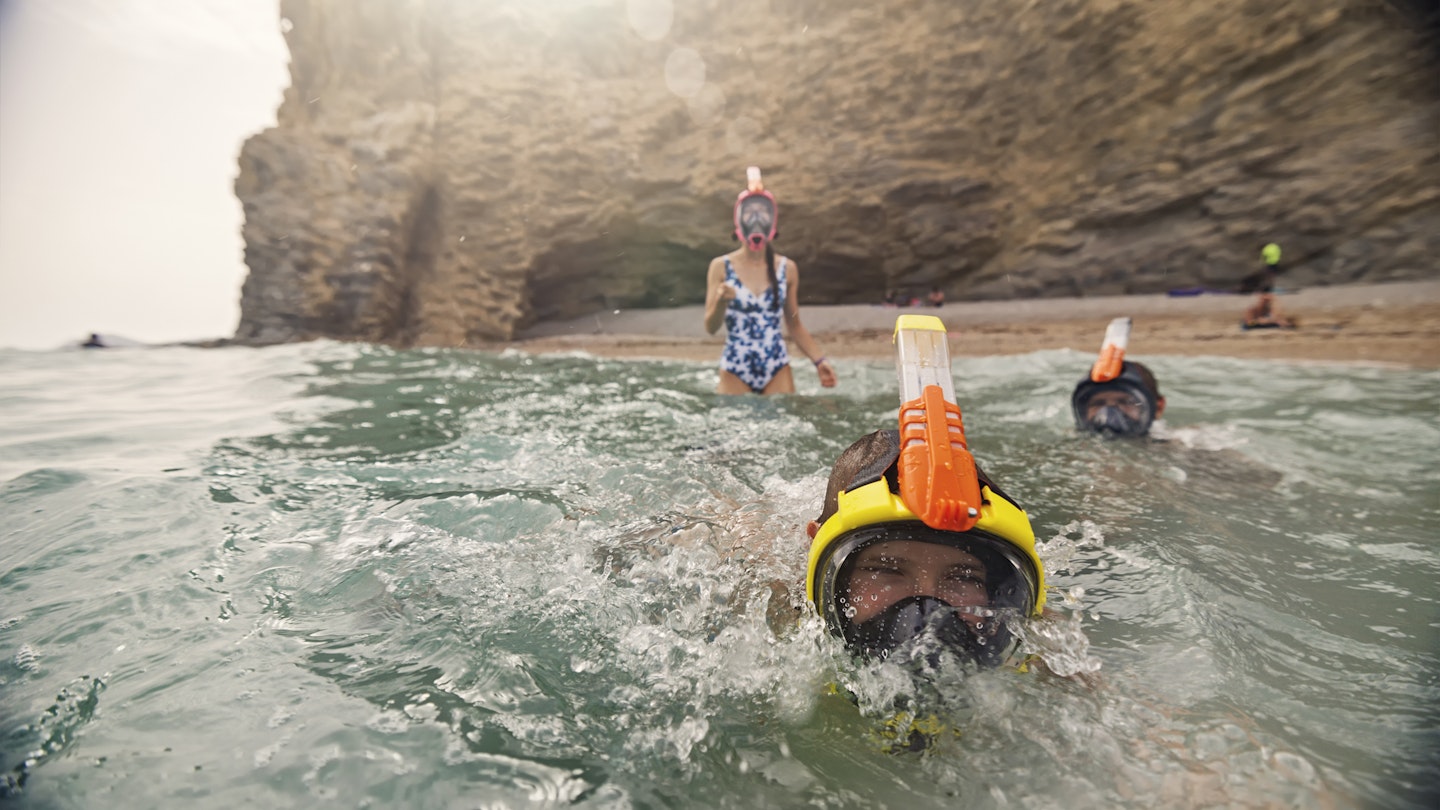
From relaxing on beaches in the Canary Islands to wine tasting in La Rioja, here are Spain's top experiences © Imgorthand / Getty Images
From the snow-dusted, ski-worthy Pyrenees to the glinting golden beaches of the south, Spain unfolds in a series of ever-changing landscapes, traditions, attractions, cuisines and even languages.
Its vast natural spaces are a dream for those who love the great outdoors , while the cities, towns and villages fizz with energy, cultural jewels and mouth-watering gastronomy. But where to start? Whether you’re keen to get stuck into dazzling architecture, cycle to a secret beach or spend your days tasting wines, tapas or olive oils, here are 20 unmissable things to do in Spain.
1. Hike or ride to a secluded beach
Hitting the beach is a national hobby here, and you’ll inevitably fall in love with your own pocket of Spain’s 5470km-long (3400-mile) coastline. Leave the crowds behind by escaping to tranquil, hidden coves that can only be reached on foot, on a bike or on horseback. Head out hiking along Menorca ’s pine-shaded Camí de Cavalls (a restored 14th-century path) to reach turquoise coves; ramble between wild, pebble-studded bays along the Costa Brava; walk to remote sugar-white strands on Andalucía’s breezy Costa de la Luz (also great for kitesurfing); and find protected nudist beaches in Almería’s Parque Natural Cabo de Gata .
2. Taste Spain's best wines
From headlining grape-growing regions such as La Rioja and the cava-making Penedès to Andalucía’s unmatched Sherry Triangle, Spain’s 70 Denominaciones de Origen (Denominations of Origin) roll out a tantalizing line-up of wines. Many wineries here are now experimenting with unusual combinations, pushing forward sustainable production methods and working to recover rare ancestral grapes.
For the most exciting tours, seek out small, independent bodegas (some still run by their founding families) and track down lesser-known wine-making areas such as Galicia’s up-and-coming Ribeira Sacra, Catalonia’s cool Costers del Segre or the innovative El Hierro and Lanzarote DOs in the Canary Islands. Salud!
Planning tip: If you'd prefer to be the designated drinker rather than the driver, here are some other ways to travel around in Spain .
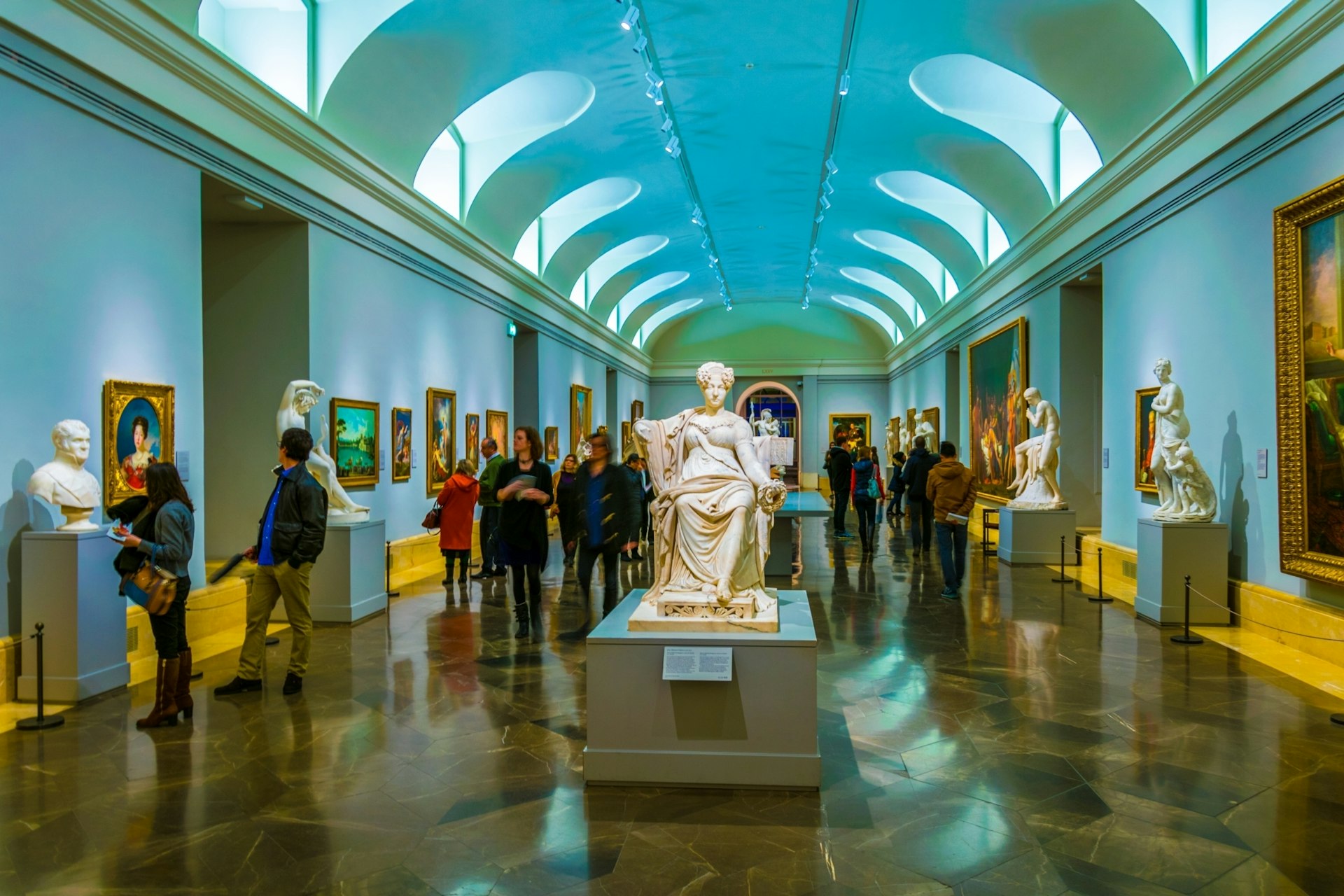
3. Dive into art (and nightlife) in Madrid
Spain’s capital is one of Europe’s greatest cities for art lovers, with a clutch of prestigious galleries where you’ll meet such icons as Picasso’s Guernica ( Centro de Arte Reina Sofía ), Van Gogh’s Les Vessenots in Auvers ( Museo Thyssen-Bornemisza ), and Velázquez’s Las meninas and Goya’s Saturno devorando a su hijo ( Museo del Prado ). More hidden thrills range from sketches by poet Federico García Lorca to mysterious works by Antoni Tàpies. Pre-book tickets online and explore galleries first thing; some even offer "out of hours" tours before the doors officially open.
Planning tip: Save some energy, though – later on, one of the best things to do in the capital city is join the madrileños at buzzy tapas spots, elegant cocktail lounges, laid-back rooftop bars, heaving clubs and more. The party inevitably goes on into the next morning.
4. Feast on local specialties across Spain
A deep love of fabulous food infuses Spain’s soul. You’ll be grazing on pintxos in Bilbao and San Sebastián , crowding into Granada 's tapas bars, seeking out creative Michelin stars in Catalonia, digging into super-fresh Valencian paellas by the Mediterranean, getting to know the country’s 2023 Capital of Gastronomy Cuenca and much more.
Planning tip: For a deep dive into regional Spanish cuisine, join an expert-led food tour. Devour Tours has switched-on guides in Barcelona, Madrid, Seville and San Sebastián, while Annie B’s Spanish Kitchen runs fabulous tapas tours in Cádiz province (an Andalucian foodie hot spot).
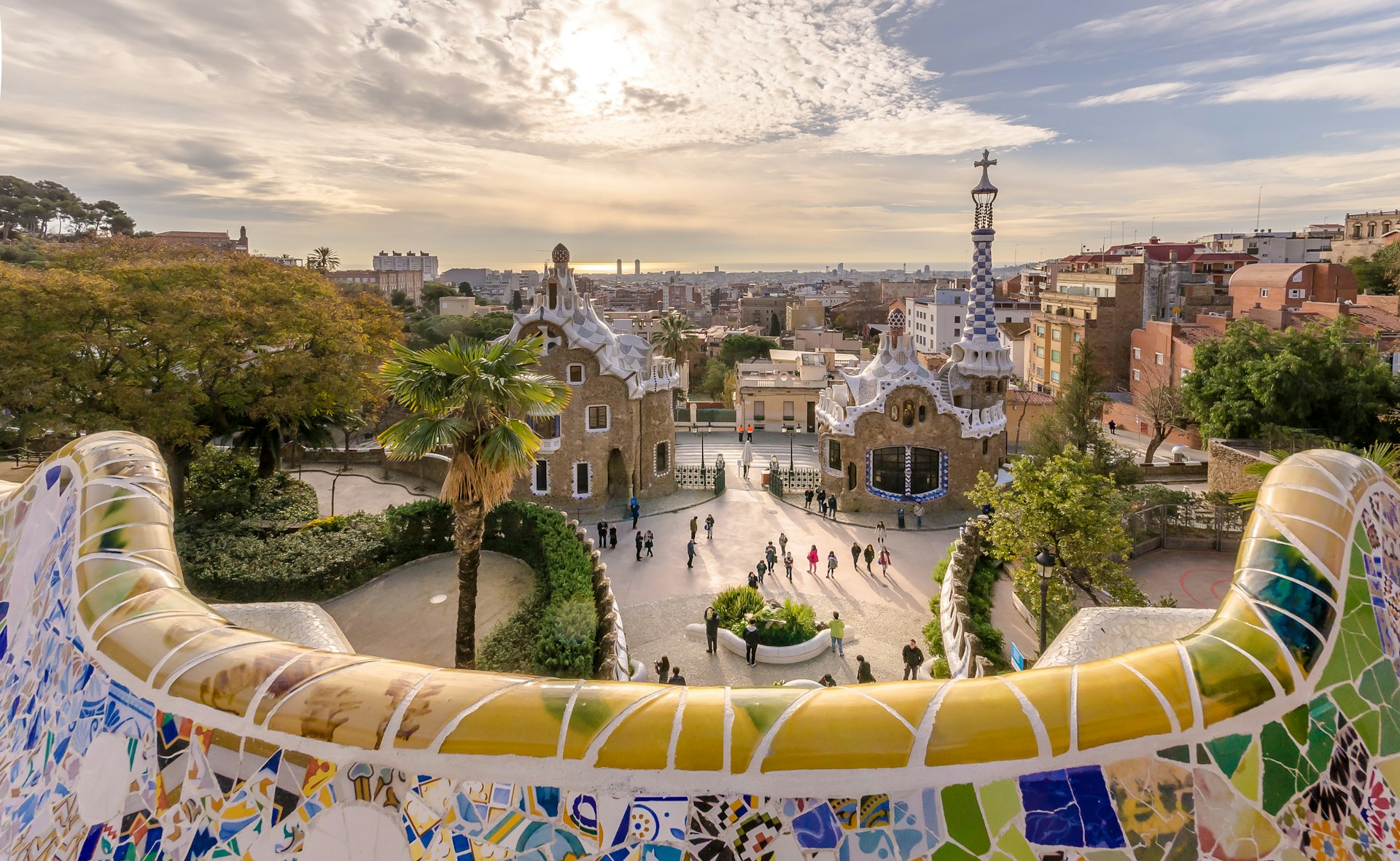
5. Admire Modernisme in Barcelona with an insider
Exploring Catalonia’s irresistible capital with a local architect instantly brings life to the Modernista wonders created by Gaudí, Domènech i Montaner, Puig i Cadafalch and others in the late 19th and early 20th centuries. Look beyond the star acts ( La Sagrada Família , Casa Batlló, Park Güell ), and don’t miss Gaudí’s floral-tiled first commission Casa Vicens (in Gràcia) and other lesser-known Modernista flourishes around L’Eixample and El Raval.
Planning tip: Help combat Barcelona’s much-discussed overtourism issues by visiting outside high season and weekends, staying in officially licensed accommodations , and supporting sustainably focused projects with local roots and powerful initiatives, as well as exploring the rest of Catalonia (from the heights of the Pyrenees to the rice-making Delta de l’Ebre).
6. Road trip around Galicia’s lyrical landscapes
Savoring a glass of crisp albariño with a platter of fresh-as-it-gets seafood is a distinctly Galician moment – just one of many surprises in Spain’s beautifully green northwest corner. Roam well beyond Santiago de Compostela to uncover timeworn stone villages, centuries-old wineries, plunging valleys and over 1000km (620 miles) of wild, windswept coastline sprinkled with sublime beaches, particularly around the Illas Cíes and the Costa da Morte .
Planning tip: While summer brings the warmest weather, June and September are much quieter (always pack an umbrella!).
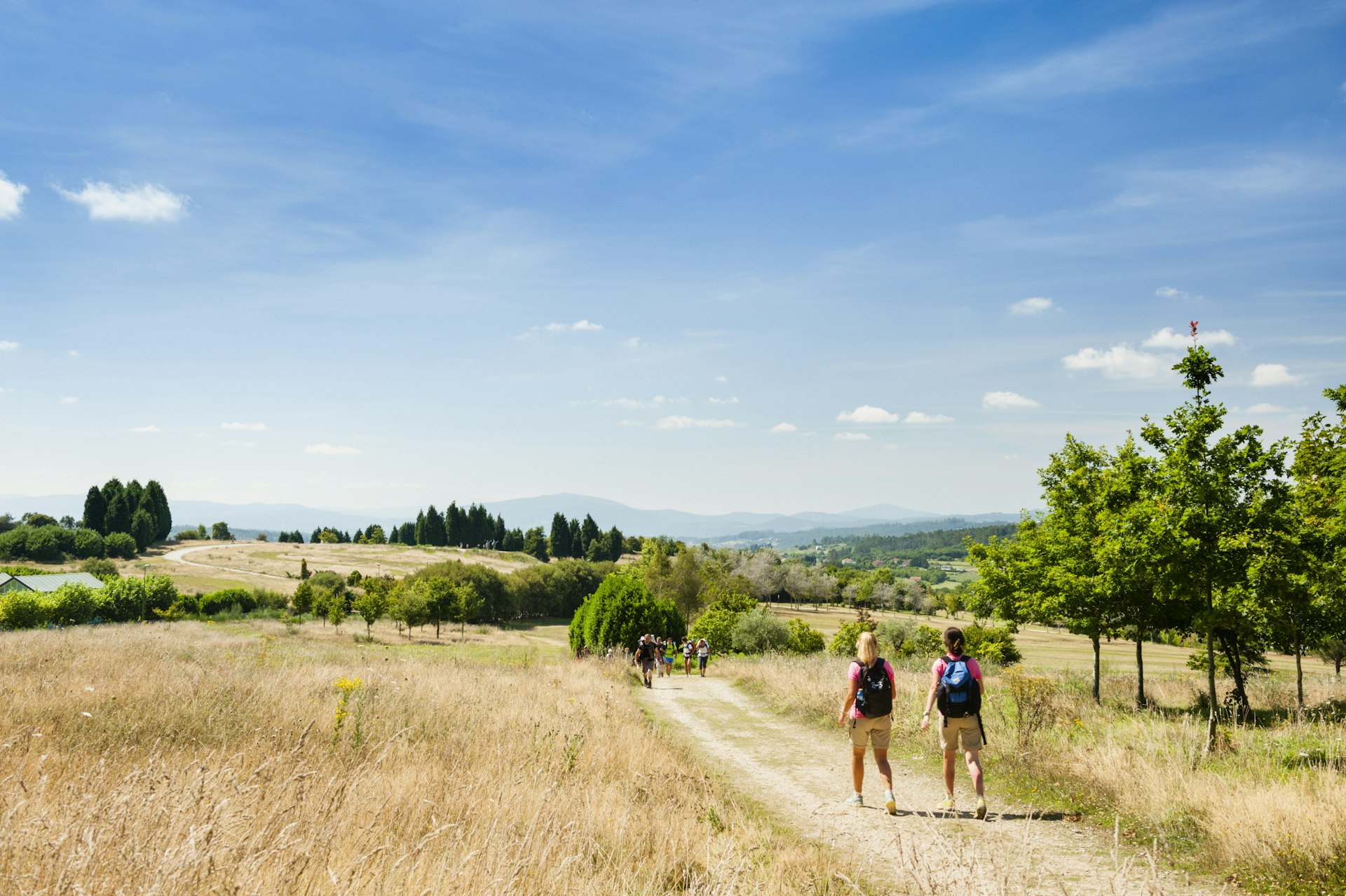
7. Walk an alternative Camino
Finally stumbling into the glittering cathedral in Galicia’s capital Santiago de Compostela , after trekking hundreds of miles along the fabled Camino de Santiago (Way of St James), is a magical moment. Travelers seeking a less-trodden path can swap the popular traditional Camino Francés for the wonderfully rewarding Camino del Norte (Northern Way) or Camino Primitivo . The 600km (373-mile) Norte meanders along and inland from Spain’s northern coastline from Irún, while the challenging 320km (199-mile) Primitivo from Oviedo is believed to be the original Camino, walked by King Alfonso II back in the ninth century.
Planning tip: You can combine the two routes by following an alternative branch of the Norte to Oviedo, then linking up with the Primitivo.
8. Wander off the beaten track in Extremadura
Portugal-bordering Extremadura plunges visitors into one of Spain’s least-touristed corners and is well worth a visit. The secluded Jerte, Ambroz and La Vera valleys reveal half-timbered houses, snow-topped mountains and spring cherry blossom, and there’s outstanding birdwatching in the 180-sq-km (69-sq-mile) Parque Nacional de Monfragüe from March to October. There are also some extraordinary monumental cities, including Cáceres (with its glittering historical core), Trujillo (made wealthy by its high-profile conquistador families) and Mérida (for some of Spain’s most important Roman ruins).

9. Bask in the beauty of Andalucía’s Moorish architecture
Spain’s eight centuries of Islamic rule produced some of its most spectacular architecture, particularly across Andalucía. The unmissable jewels of Moorish Al-Andalus are Granada’s Alhambra , Córdoba’s Mezquita-Catedral and Seville’s Real Alcázar and Giralda , but there’s plenty more. Travel between Córdoba and Granada along the little-known Ruta del Califato (Route of the Caliphate), whose castle-topped villages mark the final medieval frontier between Christian and Islamic Spain; ramble around the majestic alcazabas (fortified palaces) in Almería and Málaga; or head into Huelva’s remote Aracena hills to uncover a rare, perfectly preserved Moorish-era mosque.
10. Enjoy heavenly hikes in every season
Spain’s varied climate means there are outstanding hiking opportunities year-round – from Granada’s snow-dusted Sierra Nevada (perfect in July/August) and northern Spain’s jagged Parque Nacional de los Picos de Europa to the cloud-brushing heights of Aragón ’s Parque Nacional de Ordesa y Monte Perdido and Catalonia ’s Parc Nacional d’Aigüestortes i Estany de Sant Maurici. Along the coast, hit soul-stirringly beautiful trails such as the 200km-long (124-mile) Camiño dos Faros in Galicia or the cliff-top paths in Almería’s Cabo de Gata.
Planning tip: The north shines brightest from June to September/October (book accommodations ahead), while walking in Andalucía is best from March to June and in September and October.
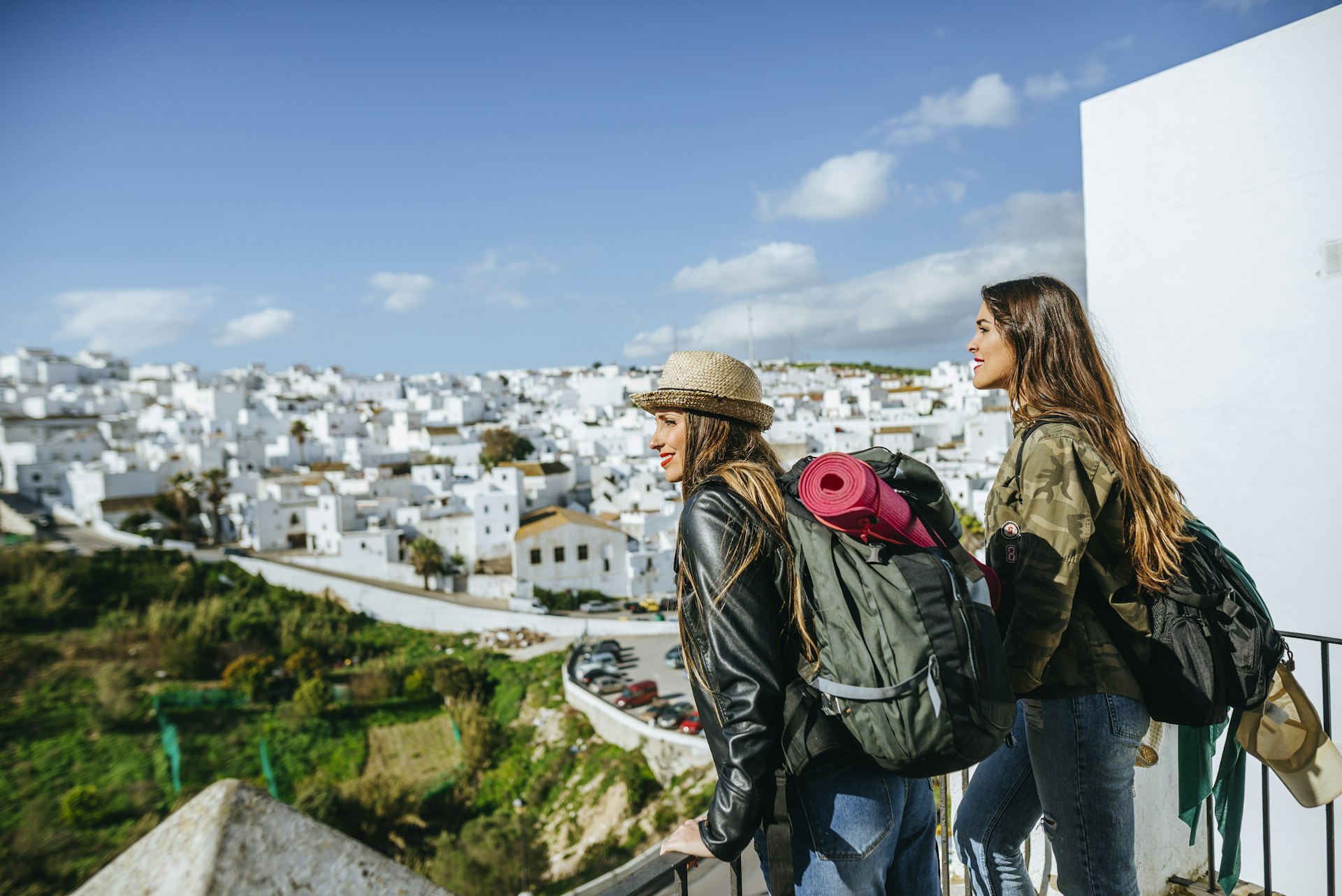
11. Stroll between Andalucía’s white villages
Sunny Andalucía is dotted with impossibly scenic pueblos blancos (white villages), with two main pockets in rural Cádiz and Granada’s Alpujarras valleys – and while these make for fascinating road trips , a series of serene rural walking paths also track between them. Venture off on the long-distance GR7 in the remote eastern Alpujarras (Mairena and Trevélez villages are highlights), or lace up your walking boots in Cádiz’s Sierra de Grazalema, where Moorish castles, rare pinsapos (Spanish firs) and rust-roof villages await.
12. Learn about Spain’s finest olive oil
If you’ve ever wondered where those liquid-gold Spanish olive oils come from, central Andalucía’s Mar de Olivos (Sea of Olives) is a hidden-in-plain-sight joy. Some of the world’s top-tier olive oils are produced among its 15,000 sq km (5790 sq miles) of rolling hills, craggy peaks and silent valleys, particularly across Jaén and Córdoba provinces (where Priego de Córdoba in the Sierra Subbética is the shining star). Stay in one of the region’s peaceful rural hotels, some of which offer home-cooked meals using their own olive oils, and visit local almazaras (olive mills) for tastings, tours and strolls among the olive groves.
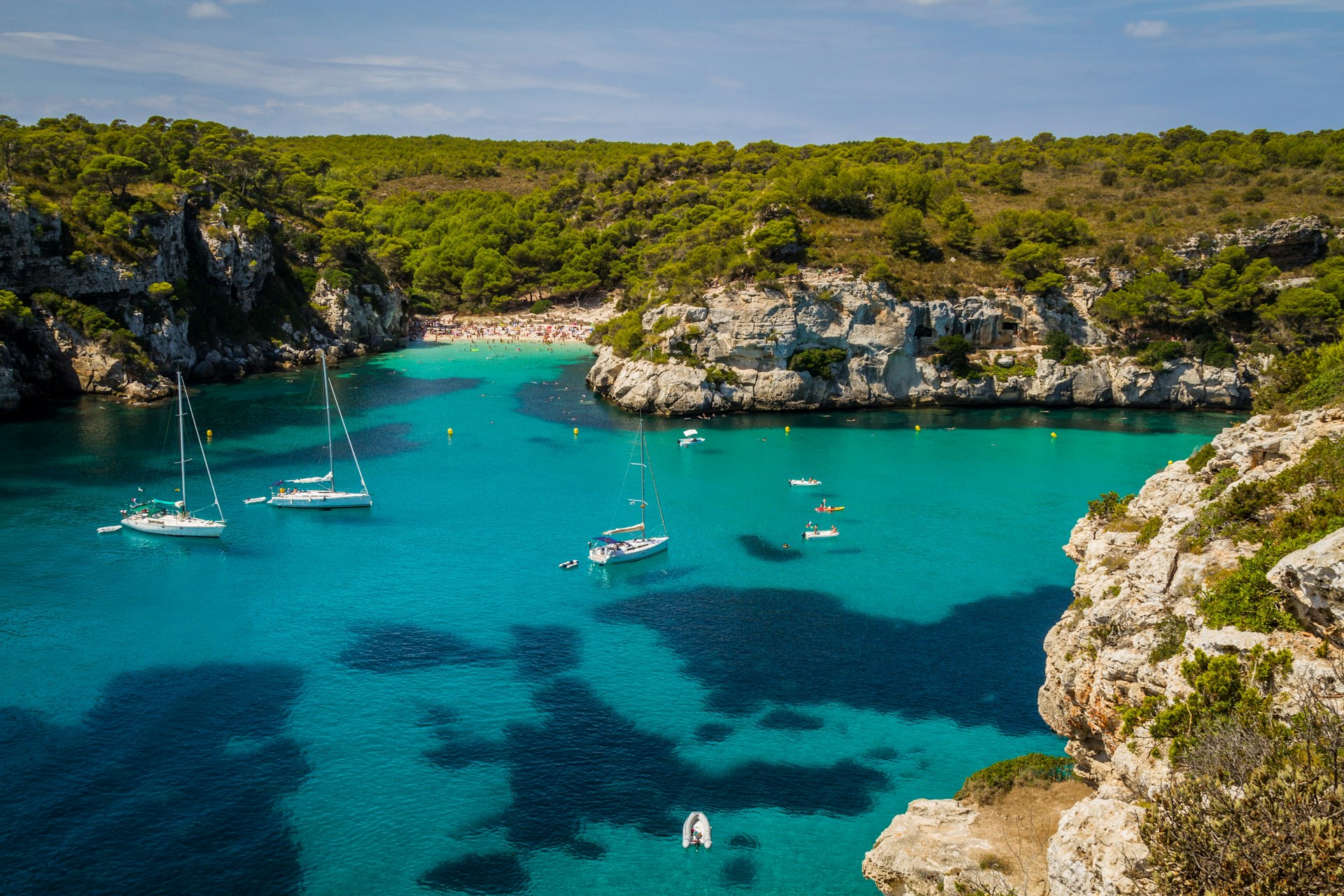
13. Engage in responsible tourism in the Balearics
Forget the dance-until-dawn stereotypes – the four Balearics islands make up one of the Mediterranean’s most blissful escapes, with a strong drive towards responsible tourism that includes a ban on single-use plastics since early 2021. Whether you fancy seductive Mallorca , soothing Menorca , always-chic Ibiza or barefoot-beach Formentera , you can stay in a stylish environment-first agroturisme , learn about the islands’ artisan traditions (from cheese-making to basketry), get involved in beach clean-ups, and soak up the outdoors on hikes, kayak trips, horse-riding adventures and more.
14. Don’t miss the Canary Islands
Around 1000km (620 miles) southwest of mainland Spain, the eight sunbathed Canaries pack in everything from Atlantic volcanic beaches and eerily beautiful pine forests to hikes up the country’s tallest peak, 3715m-high (12,100ft) Teide.
Planning tip: Picking just one island can be a challenge – here’s our in-depth Canary Islands guide to help you narrow it down.

15. Go surfing and exploring along Spain’s green north coast
Some of Spain’s top surf beaches are hidden along the cliff-edged northern coastline, hugging the Basque Country, Cantabria, Asturias and Galicia . While here, discover stone-built villages, extraordinary galleries, ancient cave art, lively cities, local cider and spectacular mountain ranges.
16. Spot rare wildlife in a remote natural wonderland
In recent years, major conservation efforts have brought several of Spain’s most beloved threatened species back from the brink of extinction, including the Iberian lynx, the Cantabrian brown bear and the majestic quebrantahuesos (bearded vulture). Head out in Andalucía’s mountainous Parque Natural Sierra de Andújar for the chance to see a lynx, or venture to the remote Parque Natural de Somiedo in southwest Asturias to (perhaps!) spy a brown bear.
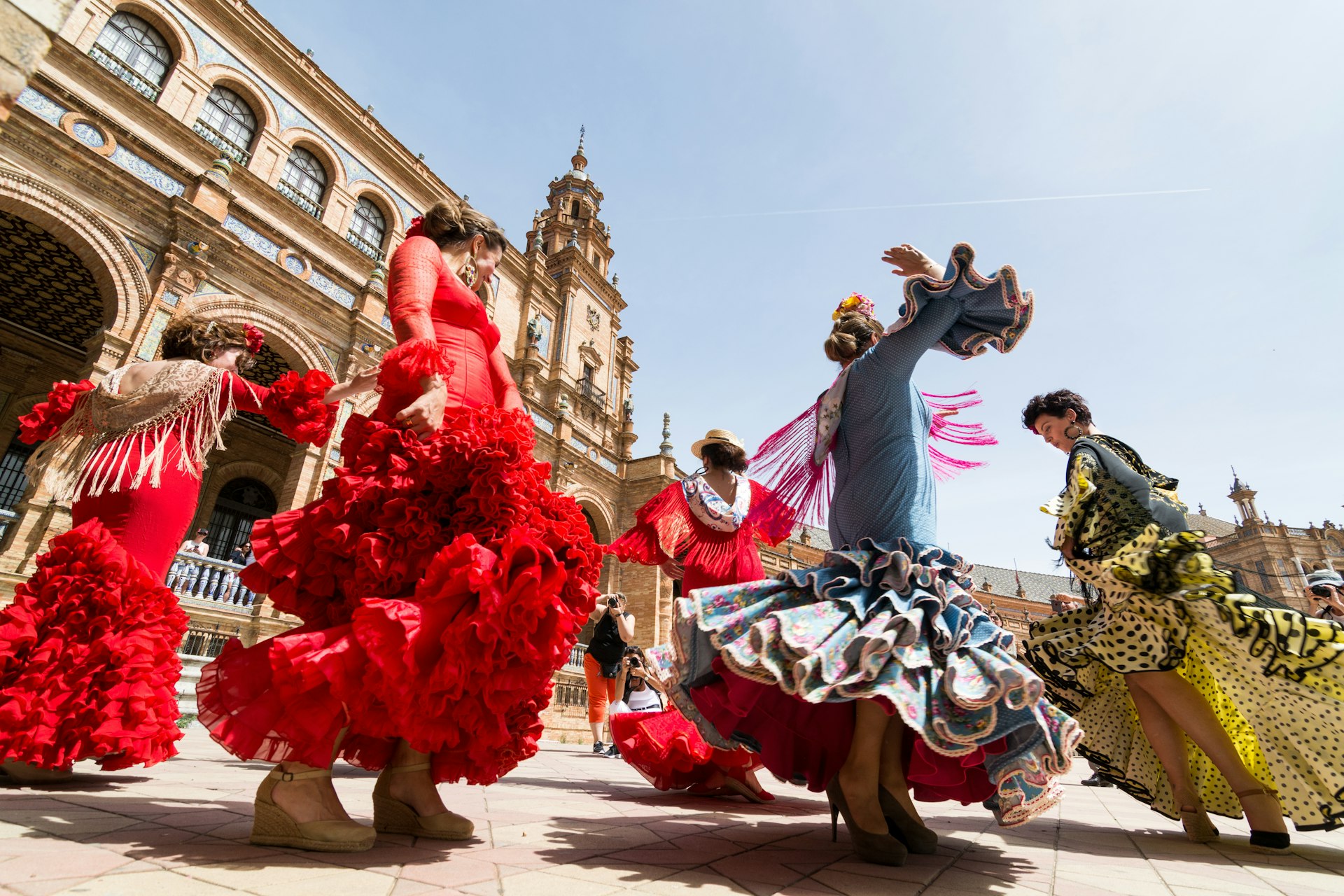
17. Experience flamenco in its Andalucían heartland
There are flamenco shows all over Spain, but the most inspiring place to lose yourself in this soulful ancient art is its southern birthplace: the Cádiz-Jerez-Seville triangle. Hunt down events at local peñas (flamenco clubs), and don’t miss Jerez ’s lively tabancos , where fiery shows are served up alongside sherry poured straight from the barrel.
Planning tip: If you've ever dreamed of learning to dance, this is the ideal place to pick up a few flamenco steps of your own.
18. Wake up in magical accommodations
Fancy slumbering away in a medieval monastery, a fairy-tale castle or a Renaissance palace? Book in at one of Spain’s 98 wonderfully atmospheric paradores , which revolve around sensitively converted buildings packed with centuries of history. Or hunt down a seductive independent stay with its own backstory: a chicly reimagined Modernista mansion in Barcelona, a Balearic farmhouse hidden down a dusty pine-scented track, an artily reimagined home in Cádiz’s Vejer de la Frontera. Many of Spain’s most exciting accommodation spots are attractions in their own right, fueled by inspired, creative design.
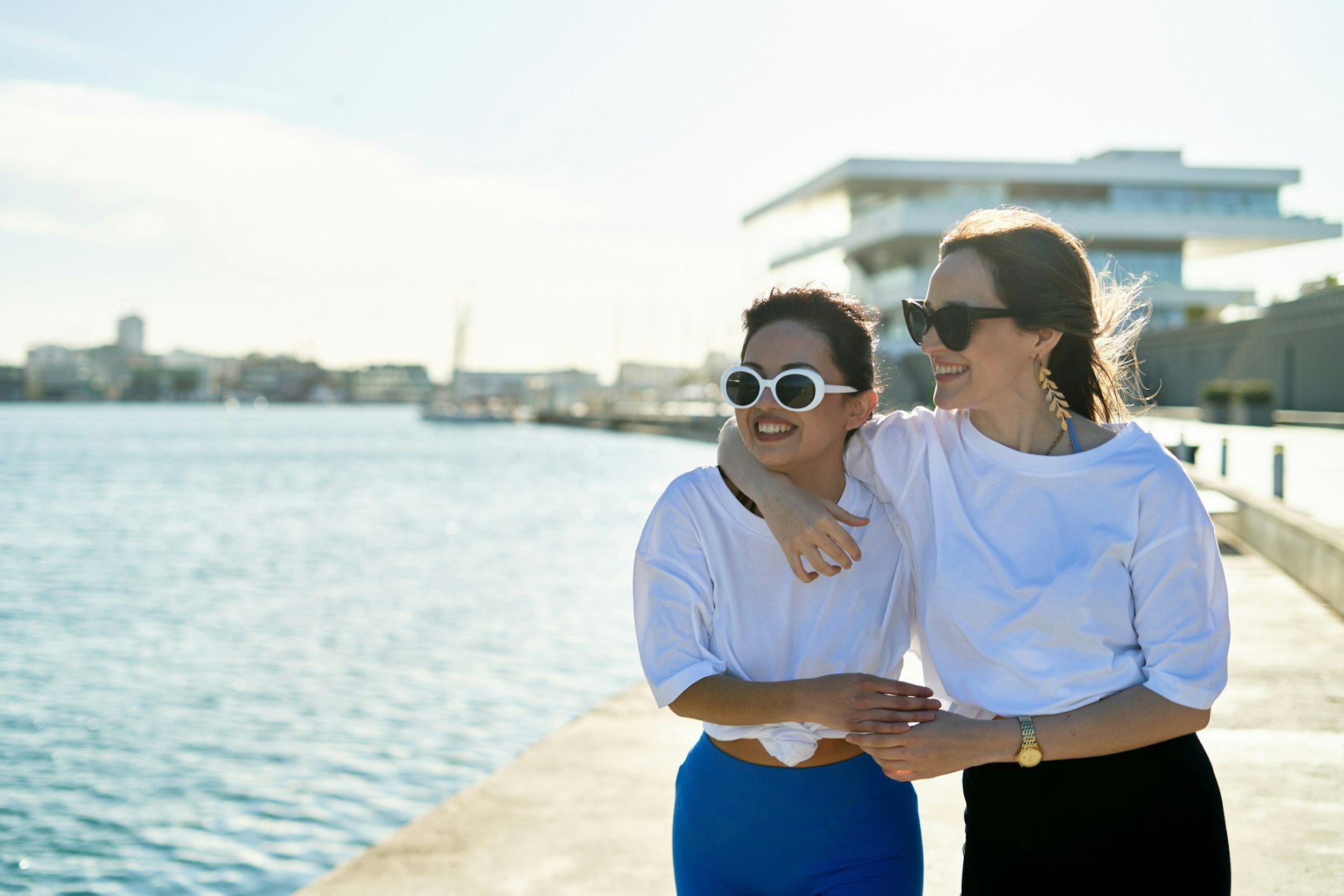
19. Get lost in lively, forward-looking Valencia
With its pioneering plans for achieving carbon-neutral tourism , Valencia (Spain’s third-largest city) is becoming a hot tourist favorite. In a short visit, you could be uncovering the Ciutat Vella ’s market-fresh meals, intriguing museums and varied architecture, exploring Santiago de Calatrava’s Ciudad de las Artes y las Ciencias , savoring seafood in El Cabanyal, cycling along the seafront and more.
Planning tip: The Fallas de Valencia festival makes March an outrageously popular month to visit Valencia, but this sunny Mediterranean city is also a perfect autumn or winter escape .
20. Marvel at an ancient (or not so ancient) cathedral
Most Spanish cities unravel around a central plaza overlooked by a formidable cathedral, with styles stretching from Romanesque to Modernista. The country’s most architecturally and spiritually moving cathedrals include León, Toledo , Salamanca , Seville, Burgos , Granada, Segovia , Santiago de Compostela and Palma de Mallorca , as well as Barcelona’s Sagrada Família.
Planning tip: Climbing up a cathedral tower or joining one of an ever-growing number of rooftop tours is a fantastic way to find a fresh perspective on the city below.
This article was first published Sep 30, 2021 and updated Mar 7, 2024.
Explore related stories
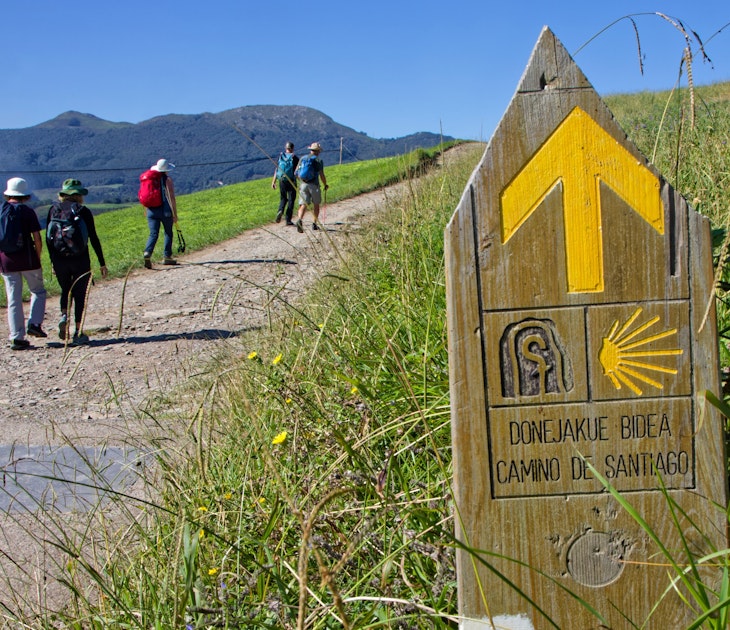
Mar 25, 2024 • 6 min read
Hundreds of thousands walk the Camino de Santiago pilgrimage in Spain every year: here are the most popular routes.

Mar 20, 2024 • 8 min read

Feb 28, 2024 • 3 min read

Feb 10, 2024 • 7 min read
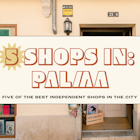
Feb 2, 2024 • 6 min read

Sep 22, 2023 • 11 min read
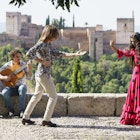
Aug 22, 2023 • 7 min read

Aug 11, 2023 • 8 min read
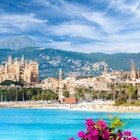
Jul 25, 2023 • 5 min read
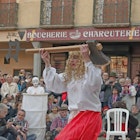
Feb 15, 2023 • 6 min read
Travel Safe
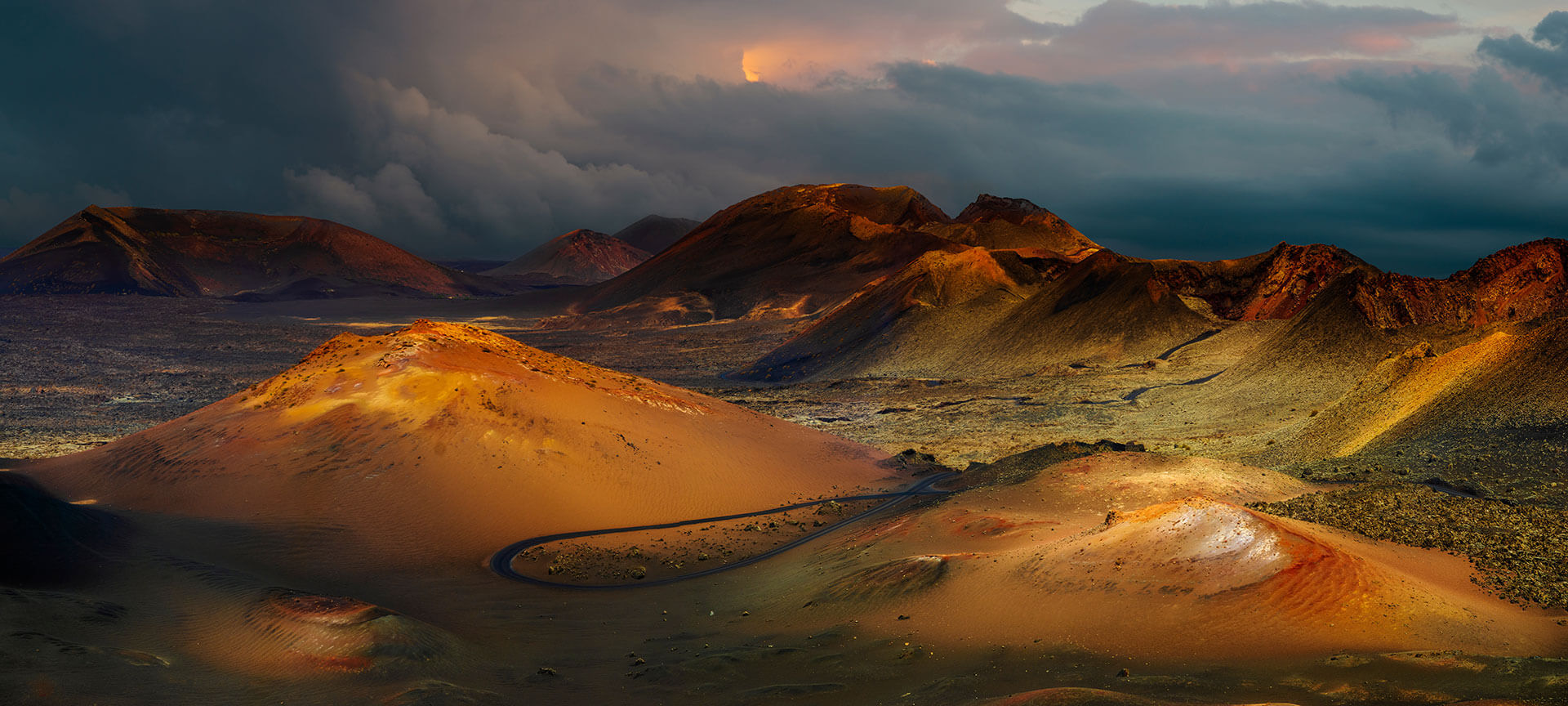
Timanfaya National Park
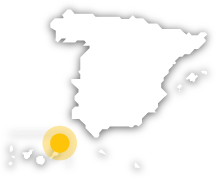
What you need to know
What you will find
Timanfaya is the only one of Spain's 15 national parks with a geological nature. Its rarity lies in the fact that the lava casts have created an ecosystem dominated by the most varied land formations you could imagine. Tiny craters, hollows and tubes burst everywhere, creating landscapes that seem to be part of another planet. In contrast to other national parks on the Canary Islands, the vegetation in Timanfaya is not known for its exuberance. However, there are many lichens, representing the triumph of nature even over environments as hostile as this. Lastly, make sure that you tour the underground galleries formed by erosion, deep in the belly of Timanfaya. One of the best examples is the Cueva de los Naturalistas. More than one and a half kilometres long, and formed by the direction of lava flow, it offers visitors a really impressive insight.
Routes around the Park
Three routes cross Timanfaya. One is a guided tour on the popular Canary Island bus: the circular 14km Volcanoes Route. The other two options are on foot. The first is the Coastal Route (self-guided, 9km and physically challenging). The second is the Tremesana Route, a guided 4km walk, easily accessible, and led every Monday, Tuesday, Thursday and Friday. There is also the option of taking a 20 minute camel ride within the park. Map of Timanfaya National Park
Don't leave without...
Despite the rugged terrain, some areas of Lanzarote are very fertile. They are used for farming, particularly for fruit, potatoes and vines. Enjoy the island's delicious cuisine and the splendid local wines. You can also discover the artistic legacy of César Manrique . Born in Lanzarote, he was an expert at combining nature with his creations. As a demonstration of this, we have the Jameos del Agua, a volcanic formation that has been adapted to become an art and culture centre. Or the Taro de Tahíche, the artist's former house, made out of lava bubbles and containing part of Manrique's own collections.
Travel plans for inspiring you
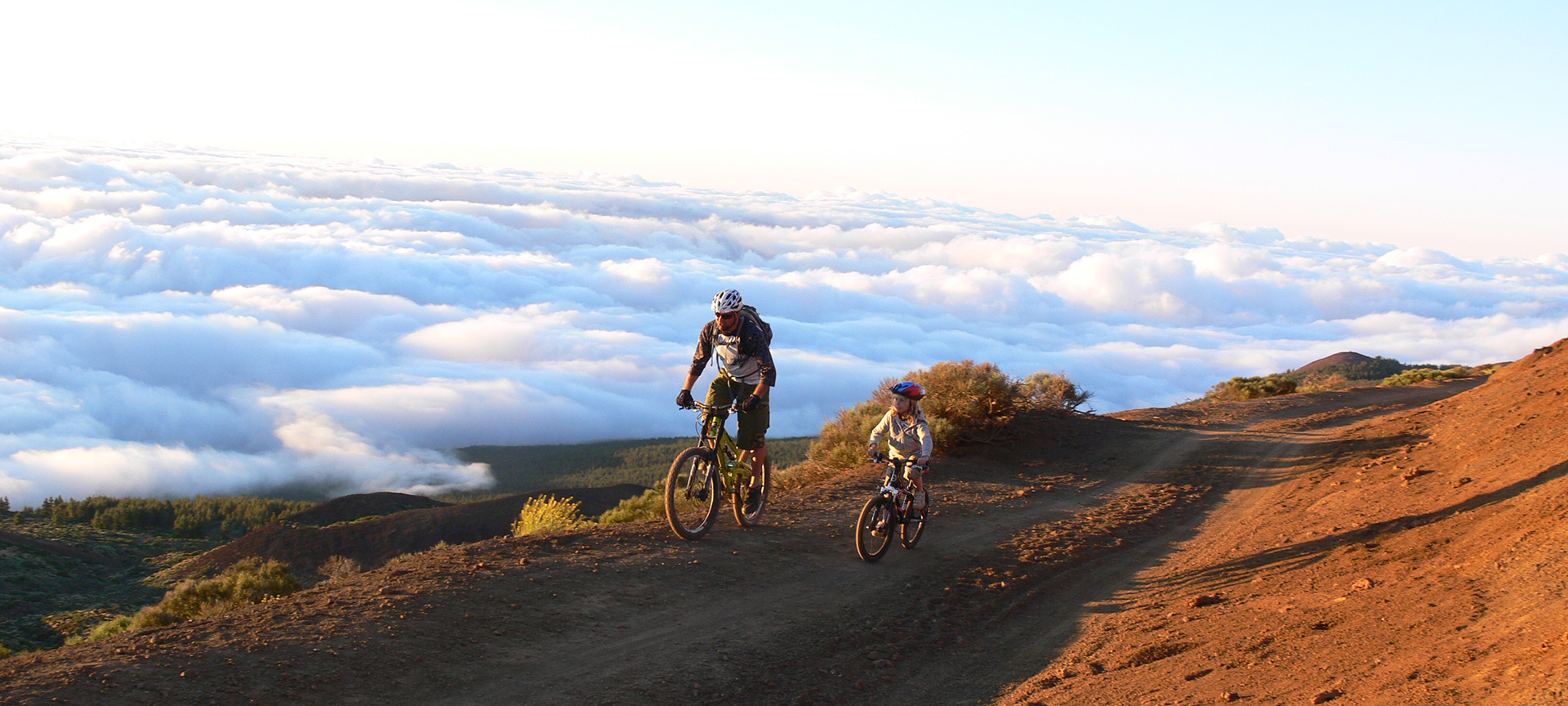
Canary Islands – your kids will want to come back
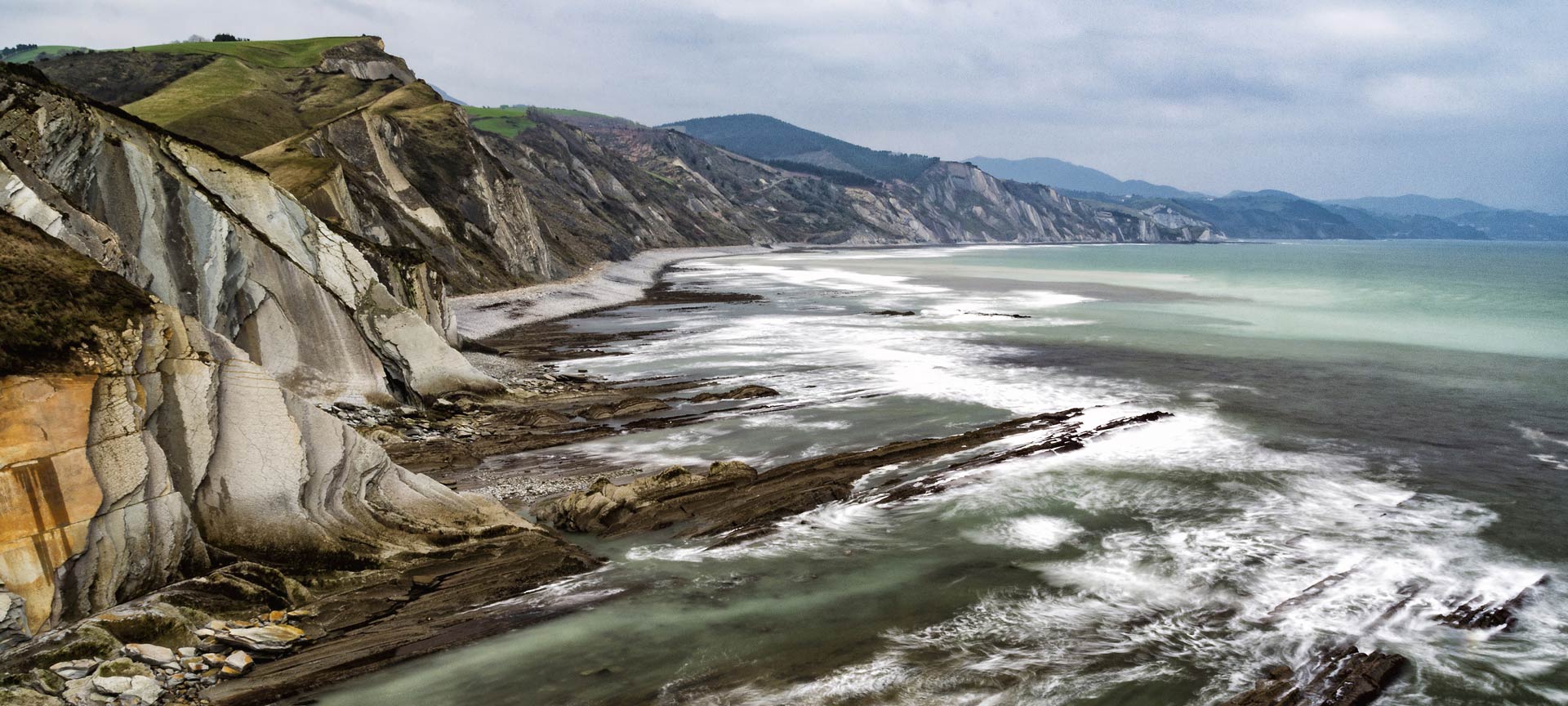
Spain’s 15 global geoparks, spectacular landscapes that reveal the history of Earth
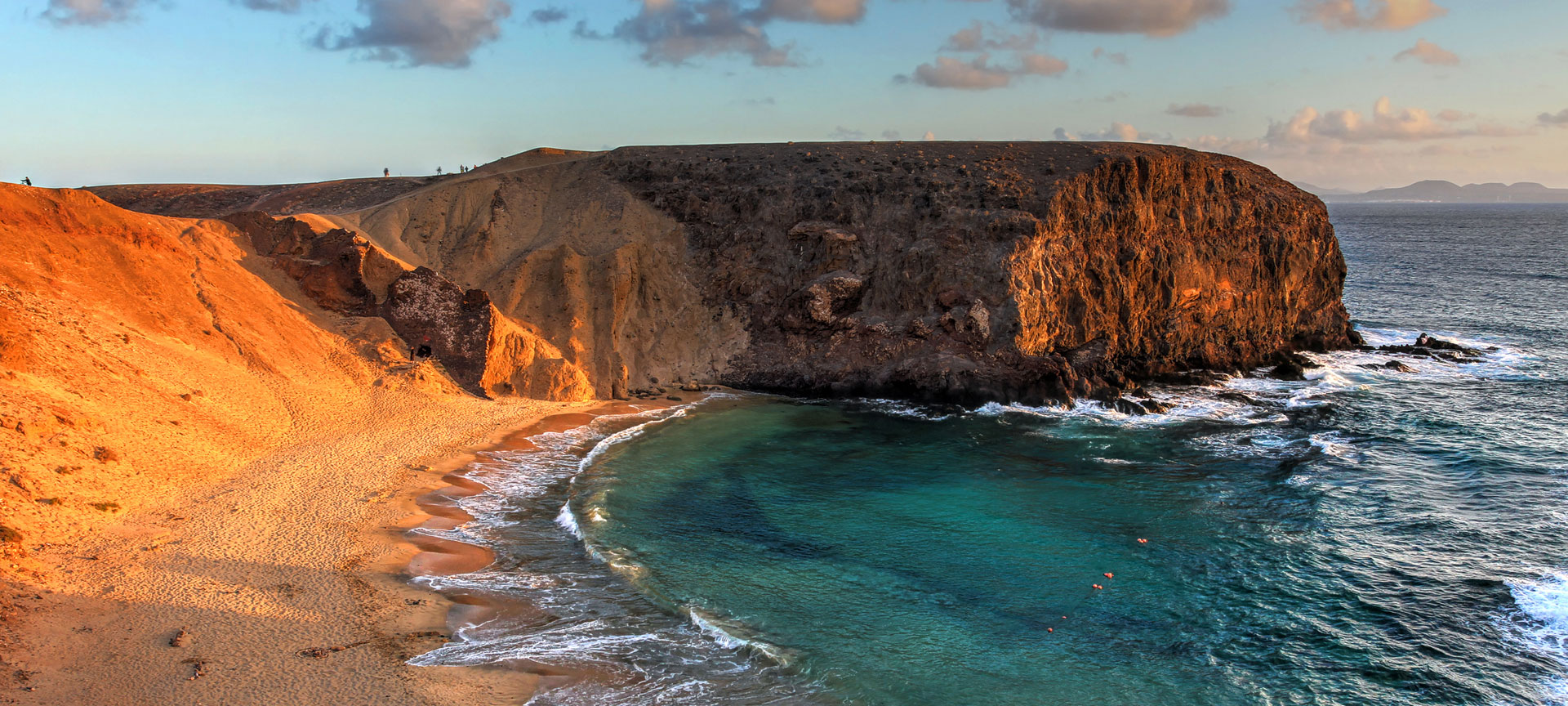
Untouched beaches in Lanzarote

Choose between thousands of activities to live your best life on holiday.

Why a rise in 'tourism-phobia' should give Australians flocking to European summer a cause for pause
It's that time of year again when social media feeds become flooded with "Euro summer" holiday content.
Every winter, there's a cohort of Australians who escape to the Mediterranean Sea, seeking an idyllic scene to sip Aperol spritz in the sun.
But, they may not all be getting a warm welcome.
Since pandemic travel restrictions eased, tourism has come surging back and Europe is copping an influx of visitors in record numbers.
And some locals aren't happy about it.
Graffiti and stickers exclaiming, "Tourists go home!" and threats such as "We'll spit in your beer" are becoming a common sight across major cities.
Anti-tourism protests are also spreading, with locals angered by "bad tourists", short-term rentals and "the touristification of daily life".
Experts say at this rate there's no way tourism can be sustainable, and we need to re-think the way we travel so we're not part of the problem.
A return to overseas travel
Australians are back on the move.
In 2023, nearly 10 million residents returned from a short-term trip overseas , an increase of over 4.7 million on the previous year, according to the Australian Bureau of Statistics (ABS).
June was a particularly high time to travel, with more Australians leaving the country in mid-last year than in December 2022.
Skyscanner Australia travel expert, Jarrod Kris, says there has been an increase in Australians searching for flights to European destinations.
Search volumes for European countries in 2023 were up by 28 per cent on the previous year, with Greece, France, Italy and Spain among the most popular.
Searches were also 16 per cent higher than pre-pandemic 2019, Mr Kris said.
Based on Skyscanner flight booking data, the most popular 2024 Euro summers destinations for Australians so far are:
- 2. Manchester
- 4. Istanbul
Landing in an overtourism crisis
Many of these popular destinations are facing an "overtourism crisis", Claudio Milano from the University of Barcelona's department of social anthropology, said.
And it's leading to a resurgence of "tourism-phobia".
The term emerged around the 2008 financial crisis with locals blaming tourists for their deteriorating quality of life.
Now as crowds have come flooding back in record numbers after the pandemic reprieve, so too has social unrest and tourism rejection.
Especially as cities confront housing emergencies, masses of Airbnb lockboxes strewn down residential streets are a scathing sign of the times.
Already Europe's foreign tourist arrivals for 2024 have exceeded 2019 levels.
And summer is bringing two major sporting events to the continent — the Paris Olympics and the UEFA European Football Championship in Germany.
Tourism officials expect 15.3 million visitors to the French capital over the Olympics period.
Parisians have been staging protests and strikes, calling out the social impact the Games will have on their city, which is already the most-visited destination in the world.
Locals lash out
In recent weeks, tens of thousands of residents have also been taking to the streets in Athens, Venice, Barcelona and Spain's Balearic Islands.
Last weekend, protesters occupied beaches frequented by tourists in Mallorca, after about 10,000 demonstrated the previous week under the banner #Mallorca no es ven — Mallorca is not for sale.
Smaller protests have been held in neighbouring Menorca and the notorious party island Ibiza.
And throughout April, more than 50,000 people from the small Spanish Canary Islands took part in demonstrations.
Freya Higgins-Desbiolles, a lecturer in tourism management at the University of South Australia, says it's clear impacts of overtourism have reached new heights.
"The recent activism in the Canary Islands, where tens of thousands of people came out in a relatively small community, indicates just how angry people are," she told the ABC.
Fake signs have been spotted at Spanish beaches warning tourists that there's dangerous jellyfish and falling rocks.
Then small-print in Catalan reads "the problem isn’t a rockfall, it's mass tourism", according to local media reports.
There's also been more confronting backlash with reports of rentals cars, bikes and tourist buses being vandalised or their tires slashed.
Tourists making life unlivable
Professor Milano says similar messages are being echoed by anti-tourism activists and movements across the board.
Locals are frustrated by cities being oversold and overcrowded with "capitalistic tourism".
Short-term rentals are raising housing costs, taking over residential buildings, and pricing locals out of living in their own towns.
Javier Carbonell, a real estate agent in Mallorca, told Reuters over half of rental properties were used for holiday rentals and were not affordable for locals.
"We want less mass tourism and more sustainable tourism," Mr Carbonell said.
Professor Higgins-Desbiolles said cities and towns have become completely over-run by tourists, making them unlivable and unrecognisable to those who call them home.
"There's no problem having tourists in the city, the problem is to have only tourists in the city," Professor Milano said.
He called it the "touristification of daily life".
In places such as Venice, Italy, locals have been displaced due to poorly-managed tourism, Professor Higgins-Desbiolles said.
Some shops that sustained local life have been replaced with tacky souvenir shops.
"Because of tourism developments and the way tourism has run, it's made it difficult to lead normal lives," she said.
"Whether you can travel to Venice, and have that accepted, requires thought on the part of the traveller."
Should you still travel?
Professor Milano says for the most part activists are not angered by the tourist encounter, rather the tourism model and the issues it provokes.
They don't want no tourism at all, but he admitted they do want better tourists.
And there are ways to minimise negative effects so your travels benefit local businesses.
Avoid Airbnb
In Athens, graffiti is sprayed across walls showing buildings up in flames alongside the words "burn Airbnb", according to local media.
And protesters in the city have been waving signs reading "Barcelona: Tourists welcome, locals NOT welcome", and chanting "tourists are taking our houses".
Professor Milano said travellers should avoid booking Airbnb and instead find a hotel.
And tourists should try to spend money on local businesses as much as they can.
A lot of frustration stems from outside entities profiting while locals suffer, Professor Higgins-Desbiolles said.
"The most simple advice that I could give to make sure you're welcome — no matter where you go — is to knowledgeably and intentionally spend money in that local economy."
Beware of 'live like a local' myths
Travellers are being warned about falling for commercial narratives that promote getting a local's experience.
"With Airbnb, we have brought tourism into our buildings," Professor Milano said.
"Airbnb used to be promoted as 'live like a local' ... But it’s not 'live like a local' because the property manager is a big company that probably owns 200 apartments in Barcelona."
In some cities, residential areas are becoming so congested locals can't easily access their own streets or get on a bus.
The advice is to stay away from the crowded areas and avoid travelling at peak seasons.
Scrap the multi-stop trips
What has been called the "Ryanair revolution" has enabled travellers to jet between European destinations for next to nothing.
This hyper mobility is a big part of the problem, Professor Milano said.
Regularly flying to Europe for two weeks and visiting several destinations isn't uncommon for some Australians.
But Professor Higgins-Desbiolles says we need to consider slowing down — not just for the wellbeing of the local communities, but for the environment.
"Access to these places is not our right, it’s a privilege," she said.
"We need to get more considered in our consumption."
She said we don't need to stop holidaying, but it would be better to scale it back to one big holiday every few years, and staying in the one country.
'Don't be a jerk'
Protesters in the Canary Islands have been calling out "bad tourists" who disrespect the land and culture.
While campaigns in Amsterdam have been targeting badly-behaved tourists with the slogan "stay away" if your plan is to come for a messy night "getting trashed".
Professor Higgins-Desbiolles says if you want to be accepted in cities, simply "don’t be a jerk".
"You're a visitor in somebody's home, and that's the thing about these destinations that we forget — these are local people's homes," she said.
"Visitors think they have a right to go to places, that their money buys them access, and that they don't need to be thoughtful and sensitive."
This also applies to "commodifying travels", and the lengths people will take to get the perfect social media shot.
Listen to communities
Policies and measures are being rolled out in many places to address overcrowding, such as introducing tourist taxes, entry fees, and capping visitor numbers at peak times.
Professor Higgins-Desbiolles says it's also important to listen to what communities want, because locals are saying this isn't enough.
"We should stop emphasising continual economic growth to instead look at wellbeing," she said.
Countries outside Europe have been developing responsible tourist pledges for visitors to sign when they arrive.
The Pacific Island nation of Palau has taken this a step further, opening up local opportunities for tourists who abide by the pledge and show respect.
"That's what gets you a warm welcome into these places," Dr Higgins-Desbiolles said.
"We really should centre tourism on local community rights. That would make the difference."
- X (formerly Twitter)
Related Stories
Fears new amsterdam ad campaign could just attract more boozy tourists to 'party valhalla'.
January saw a decrease in overseas travel. The latest data suggests numbers won't be low for long
Overcrowded Venice introduces first payment charge for tourists
- Globalisation - Society
- Tourism and Leisure Industry
- United Kingdom

IMAGES
VIDEO
COMMENTS
Tourism is an essential part of the economy of the Canary Islands, a Spanish archipelago located in the Atlantic Ocean, 100 kilometres (62 miles) west of Morocco. Seven main islands and six islets make up the Canary Islands. They had 16 million visitors in 2023. Tourists seeking sunshine and beaches first began to visit the Canaries in large numbers in the 1960s.
The Canary Islands were formed by volcanic eruptions millions of years ago. All the western islands exceed 4,000 feet (1,200 metres) at their highest points, with Teide Peak on Tenerife rising to 12,198 feet (3,718 metres), the highest point on Spanish soil. Ferro. The Canary Islands have a subtropical climate.
The Canary Islands, including Tenerife, were first discovered by the Genoese navigator Lancelotto Malocello in 1312. However, it was the Spanish conquistadors who would ultimately colonize the islands and leave a lasting impact on their history, culture, and traditions. The colonization of the Canary Islands by Spain began in the late 15th century.
The Canary Islands has a colorful history dating back over 1,000 years. It has experienced prosperity, extreme poverty, piracy, mass emigration, and is now one of Spain's main tourist destinations. The Canary Islands culture is rich in tradition, gastronomy, and the arts, and while the archipelago obviously has a heavy Spanish influence, the ...
The Modern Travel and Tourism Industry in the Canary Islands. The Canary Islands, a picturesque archipelago located off the northwest coast of Africa, have become a popular tourist destination in recent decades. The islands, which were discovered by European explorers in the 14th century, offer a wide array of attractions and activities for ...
The Battle of Santa Cruz. The heritage of the island of Tenerife, located in the Canary Islands, is deeply intertwined with its rich history. One significant event that shaped the island's past is the Battle of Santa Cruz. The Battle of Santa Cruz took place on July 25th, 1797, during the late 18th century.
The History of Tenerife. A statue of a Guanche warrior in Candelaria, Tenerife. The Canary Islands were first extensively chartered (in their entirety) by a Portuguese-funded expedition in 1341 that took 4 natives as slaves and collected samples of food and handicrafts. Previously, European accounts of the Islands had been, at best, vague.
Islands [ edit] 28°24′54″N 15°54′0″W. Map of Canary Islands. The Canary archipelago consists of 8 inhabited islands, and a few smaller uninhabited ones. 28.268611 -16.605556. 1 Tenerife - The largest and most populous island with an area of 2,034 km² and also the most popular tourist destination of the archipelago, with about 6 ...
The Canary Islands (/ k ... Tenerife is the site of the worst air disaster in the history of aviation, in which 583 people were killed in the collision of two Boeing 747s on 27 March 1977. La Graciosa ... Tourism in the Canary Islands; Year Visitors 2023: 16,000,000. 2009 (Jan-Jun) 4,002,013 2008: 9,210,509 2007: 9,326,116
Artistic Canary Islander. As well as internationally-famous musicians like the great tenor Alfredo Kraus, one of the best opera singers of the 20th century, or the composer Teobaldo Power, art in the Canary Islands can boast names of international renown such as the Lanzarote-born artist César Manrique, a visionary and pioneer of environmentalism, the painters Óscar Domínguez and Néstor ...
The Atlantic Ocean became the subject of epic legends, widely believed myths and great literary works. In classical literature, the Canary Islands are often thought to be Paradise, the so-called Fortunate Isles, or the Elysian fields at the end of the world described in Homer's Odyssey and Virgil's Aeneid. Others believed it to be the visible ...
Like in most major tourist destinations, hotels play a key role in the Canary Islands. In fact, over 60 percent of tourists prefer to stay at hotels , mostly in 4-star establishments.
To better understand the challenges of mass tourism today, we need to know the history of tourism in Tenerife. Chapter 1: The beginnings of tourism in Tenerife ... Tireless efforts were made to spread the image of the Canary Islands throughout Europe, leaving behind the exclusive focus on health tourism and embracing a new model of sun and beach.
The Canary islands are volcanic islands, the result of volcanic activity and could be described in simple terms as the peaks of a huge volcanic mountain range.Estimations indicate that the oldest islands are Fuerteventura, Lanzarote and Chinijo (which includes La Graciosa and other smaller islands) emerged between 30 to 40 million years ago.La Gomera, Tenerife and Gran Canaria would have ...
The tourism model in the Canary Islands hasn't been updated since before the tourism boom of the 1980s, when the islands were "trying desperately" to attract investment, she explains.
The Canary Islands are not just a place of physical beauty; they are also a treasure trove of ancient tales waiting to be unraveled. Exploring the Solar System: The Tenerife Observatory. The Canary Islands, known for their stunning landscapes, are not just a popular tourist destination, but also home to a world-renowned astronomical observatory.
By Juba July 12, 2022 0 5 Mins Read. Formed by huge volcanic forces an estimated 30 million years ago, the Canary Islands history is shrouded in mystery. Even the origin of their collective name is still in debate: some say they are named after the Latin canere - to sing, in reference to canaries, (native to the islands), others claim the ...
Altitude map of Tenerife, with the highest altitude (Mount Teide) in blue and the lowest (sea level) in black Satellite image of Tenerife in January 2016. Tenerife (/ ˌ t ɛ n ə ˈ r iː f / TEN-ə-REEF; Spanish: [teneˈɾife]; formerly spelled Teneriffe) is the largest and most populous island of the Canary Islands. It is home to 42.9% of the total population of the archipelago.
The first island settlers developed a culture full of forms of expression, such as sculpture, ceramics and other immaterial forms like traditions and customs that have lasted to this day. Songs, dances and other less common expressions, such as Canarian wrestling and silbo Gomero. Cultural expressions that you can discover in the various ...
But leaving these beautiful islands is the hard part! Plan the best places to visit on your vacation with our list of the top attractions in the Canary Islands. On This Page: 1. Teide National Park, Tenerife. 2. Timanfaya National Park, Lanzarote. 3. Beaches of Gran Canaria.
It is calculated that the first settlers arrived on the islands around the 5th century B.C., meaning that the natives lived in isolation on the archipelago for almost 2,000 years, creating their own culture and a lifestyle adapted to the wild, volcanic environment. Poblado aborígen la Atalayita.
Pre-conquest exploration. The Canary Islands saw an increase in visits during the late 13th century due to various factors. Firstly, it was propelled by the economic growth of European states like the Republic of Genoa, the Crown of Aragon, the Kingdom of Castile, and the Kingdom of Portugal.
The history of the Canary Islands is closely tied to their culture. The islands have a rich and diverse cultural heritage, influenced by Spanish, African, and Latin American traditions. ... In conclusion, the beaches and coastal tourism of the canary islands are a major draw for visitors. With their diverse range of beaches, vibrant underwater ...
14. Don't miss the Canary Islands. Around 1000km (620 miles) southwest of mainland Spain, the eight sunbathed Canaries pack in everything from Atlantic volcanic beaches and eerily beautiful pine forests to hikes up the country's tallest peak, 3715m-high (12,100ft) Teide.
In Lanzarote, the most easterly of the Canary Islands, Timanfaya National Park dazzles its visitors. Its landscape seems as though it belongs on the moon; the result of volcanic eruptions from as recently as 300 years ago. Lava and magma have created a scene straight out of science fiction where, despite its severity, life continues to bloom.
A woman walks past graffiti on the wall that says "tourist go home" in the Canary Islands in Spain. ( Reuters: Borja Suarez ) Already Europe's foreign tourist arrivals for 2024 have exceeded 2019 ...